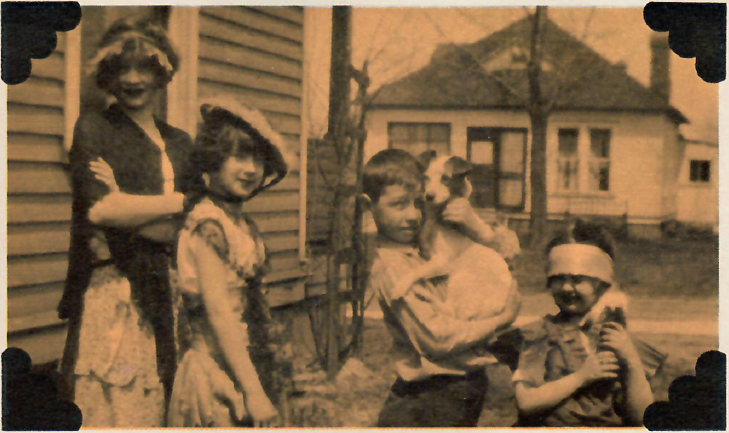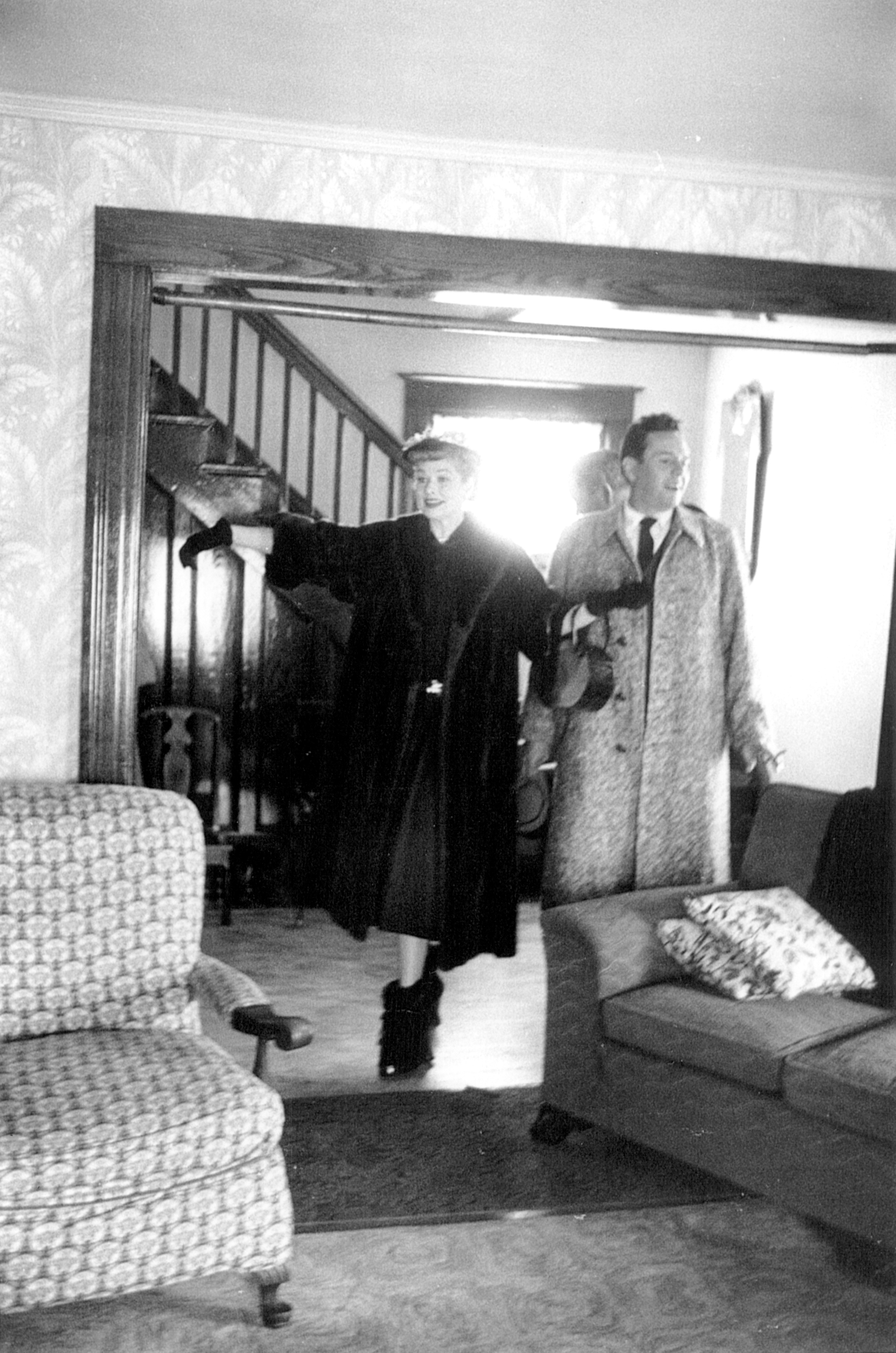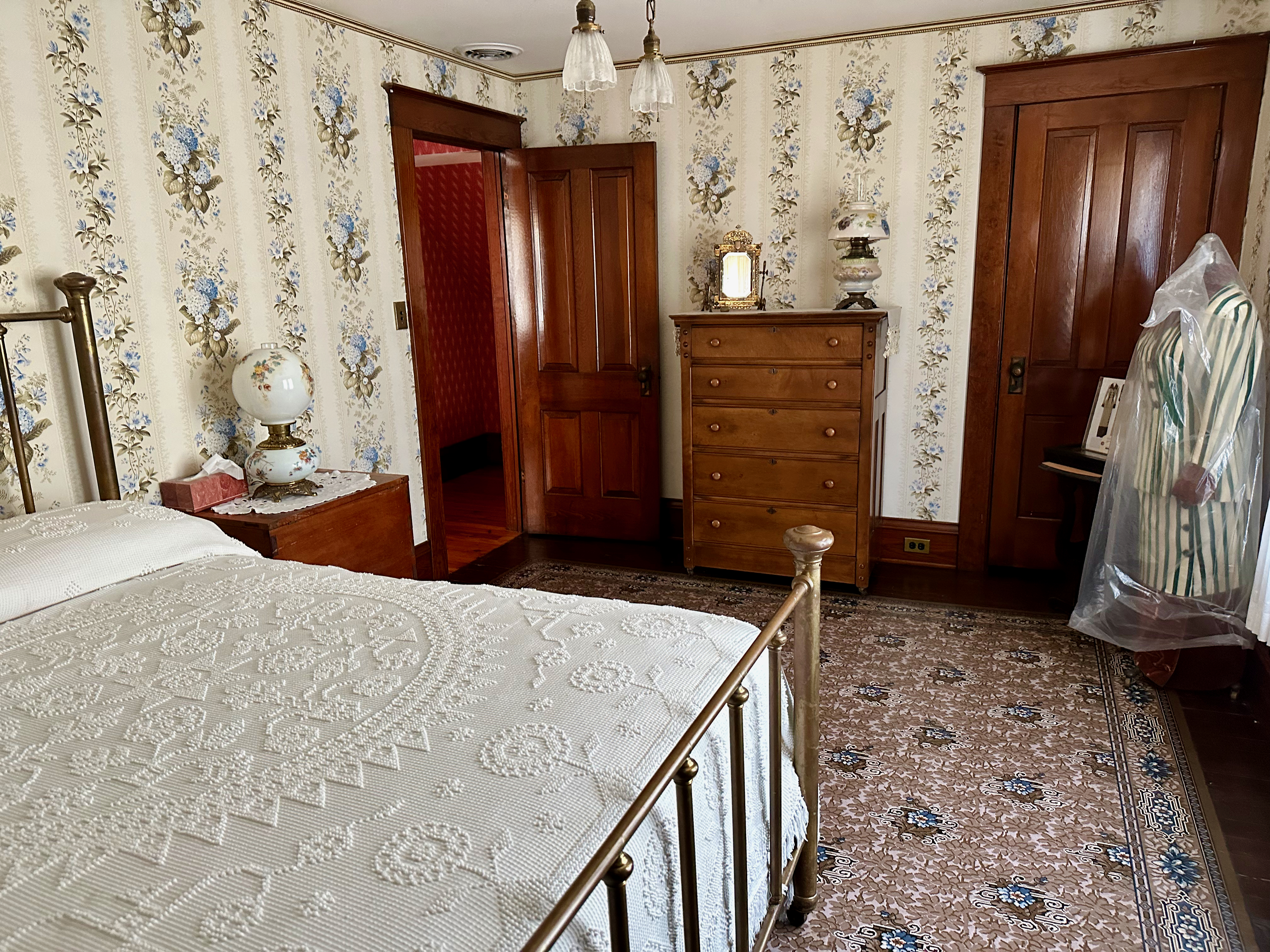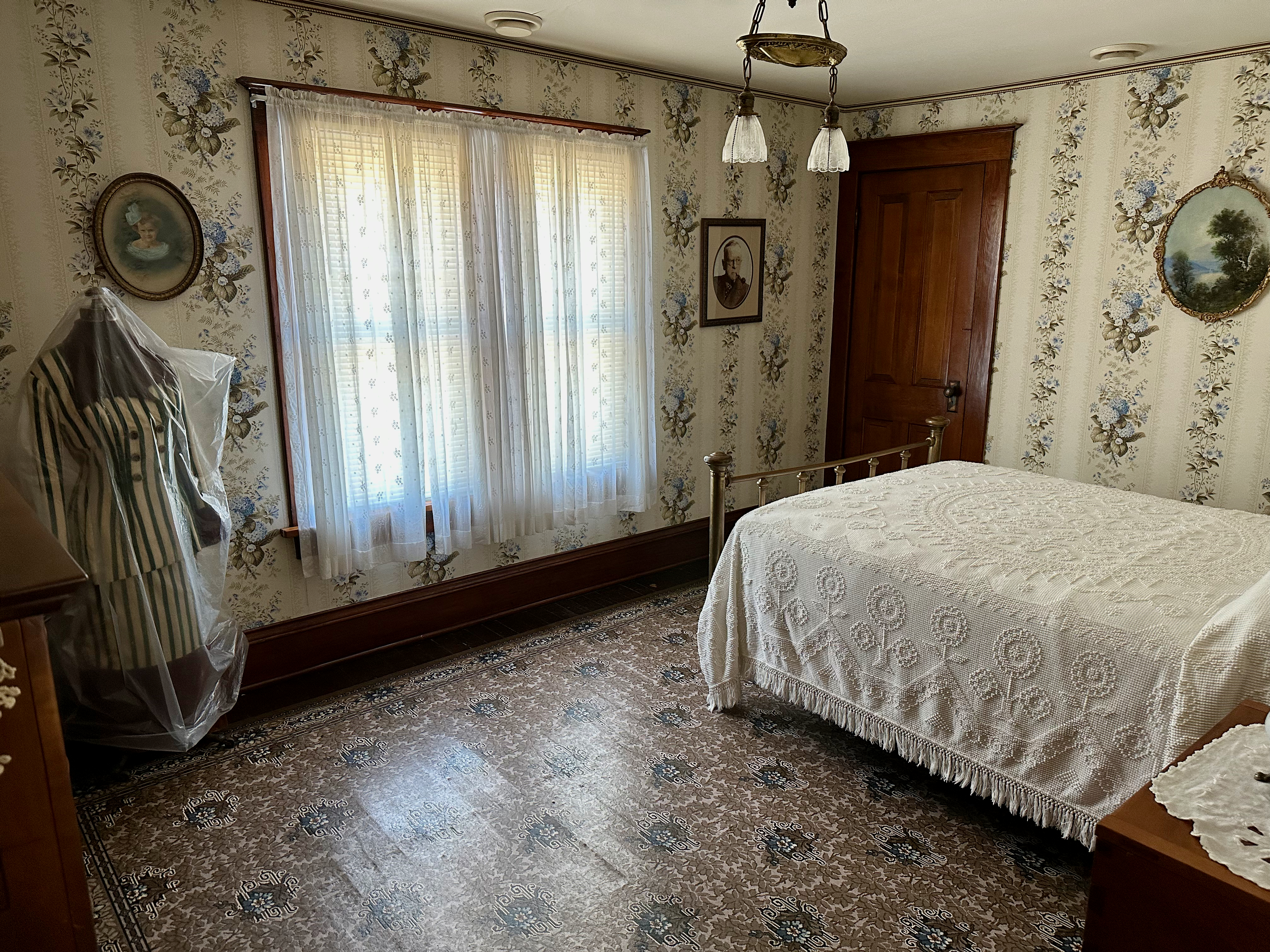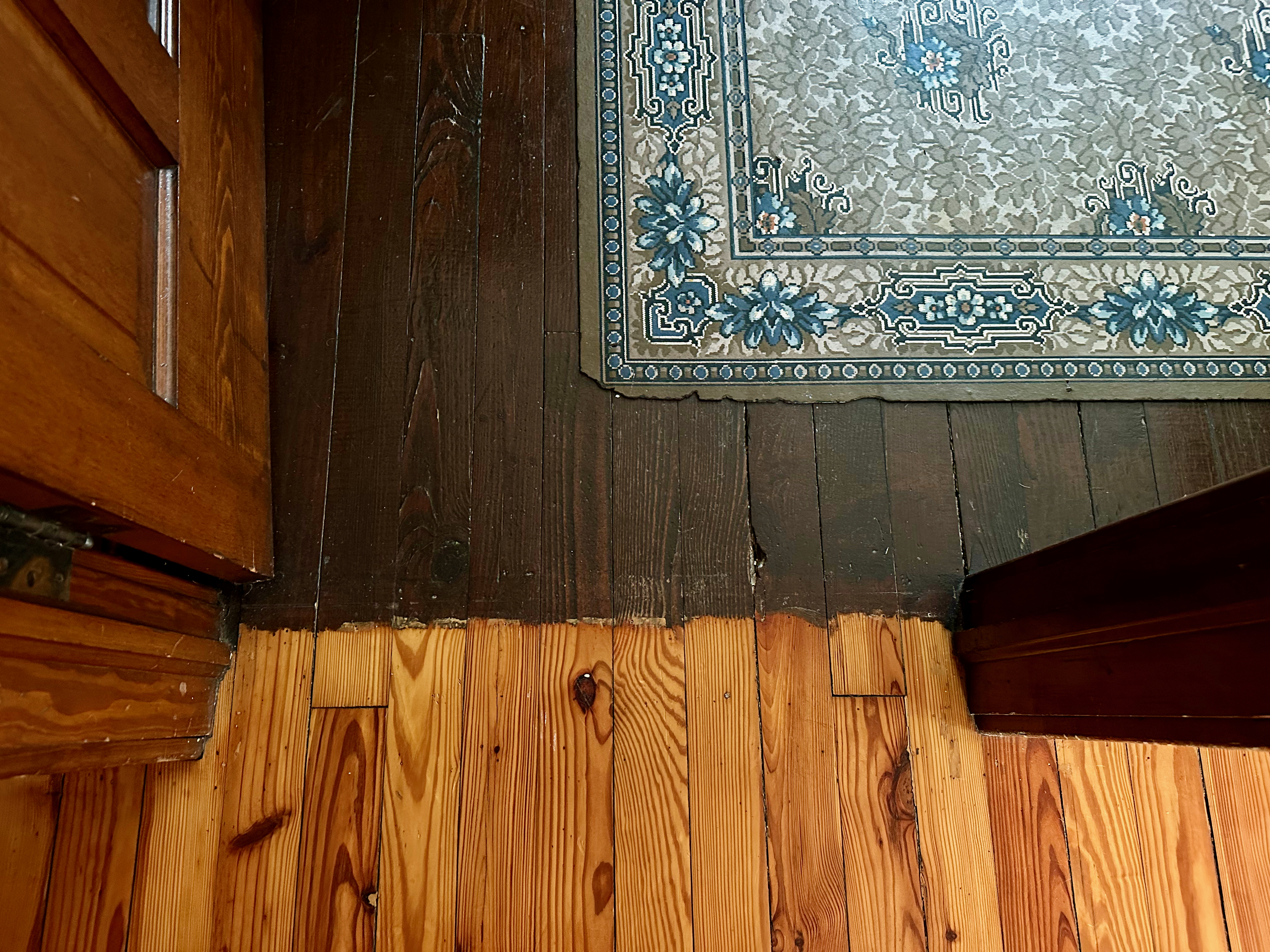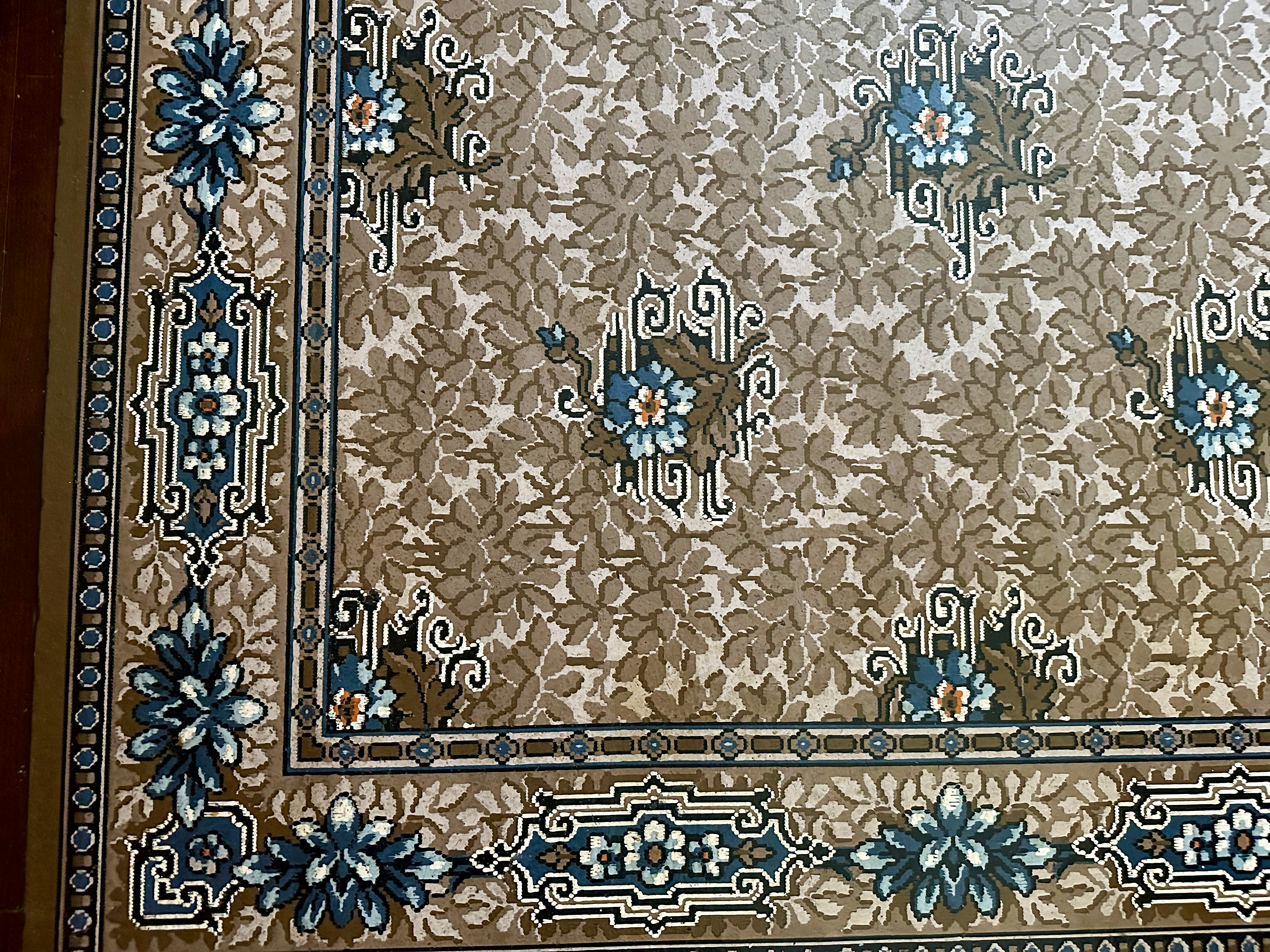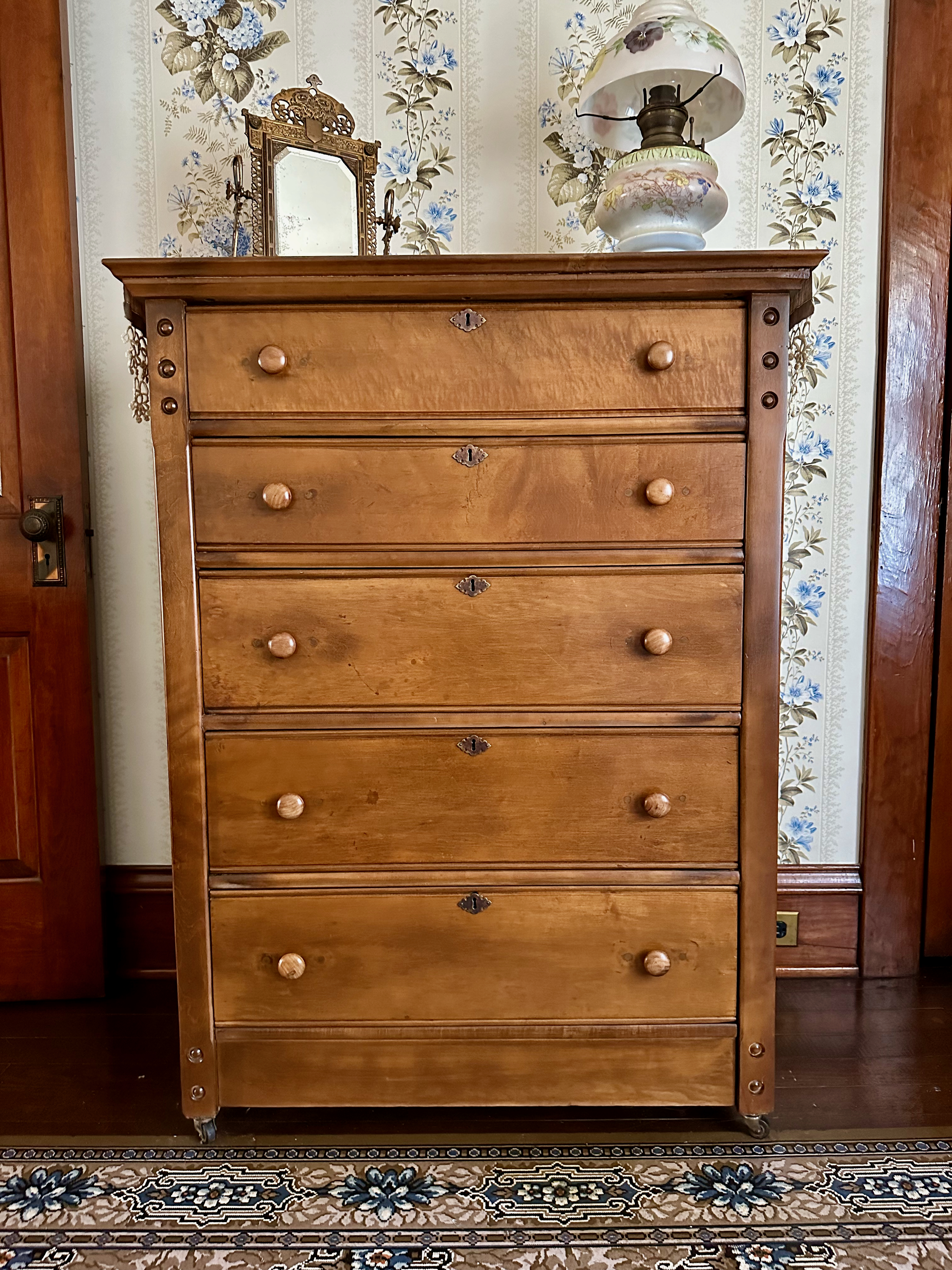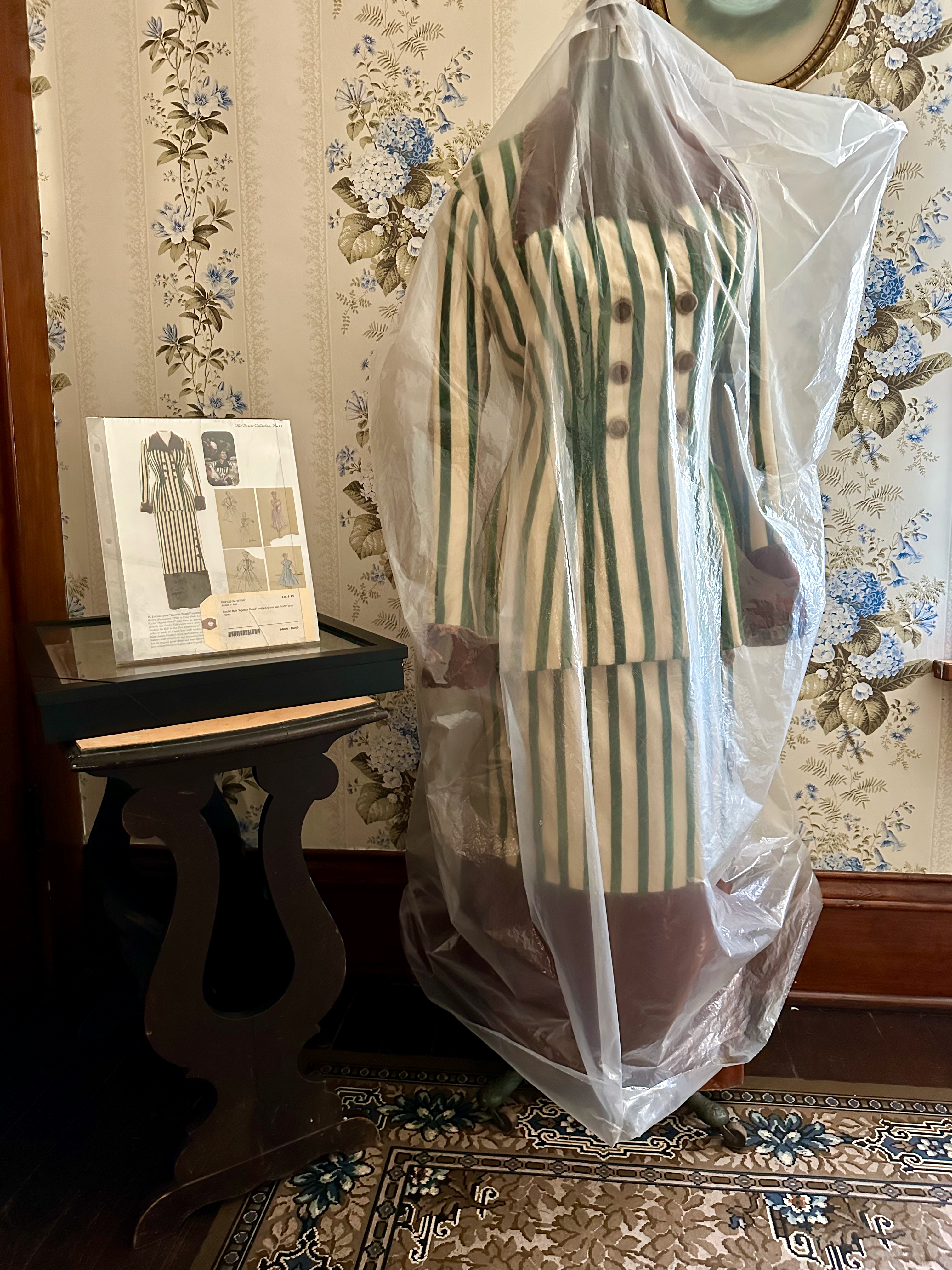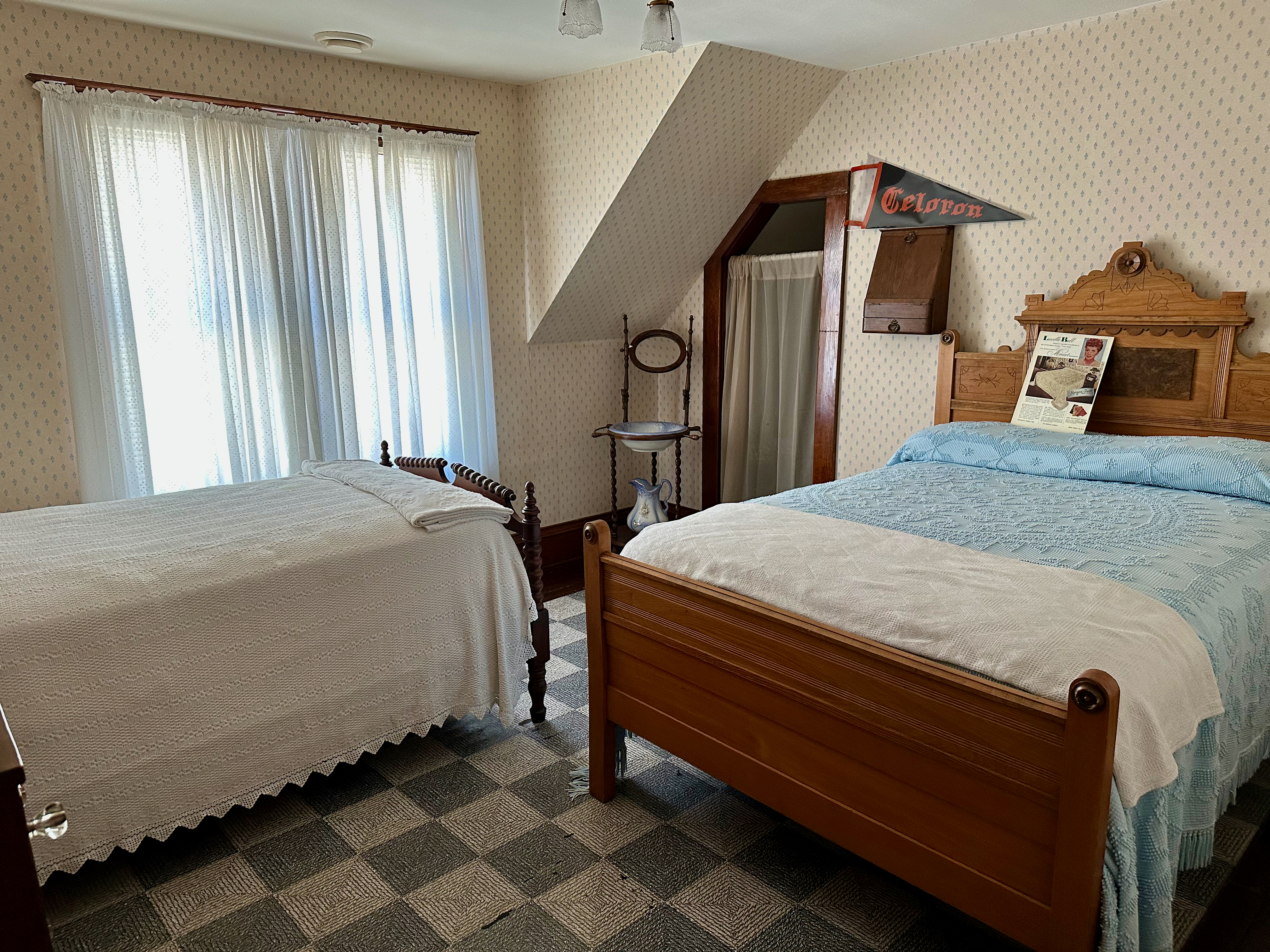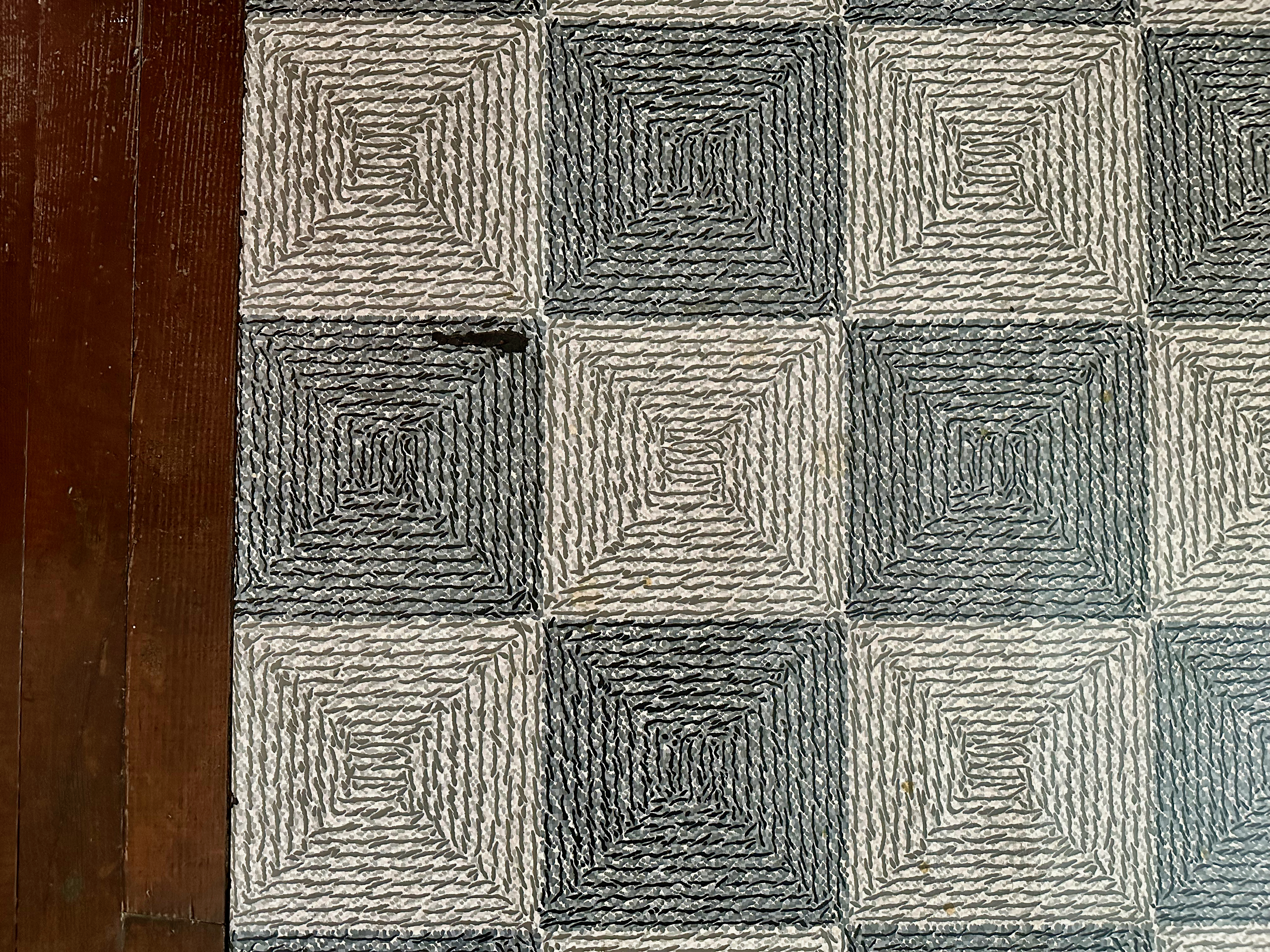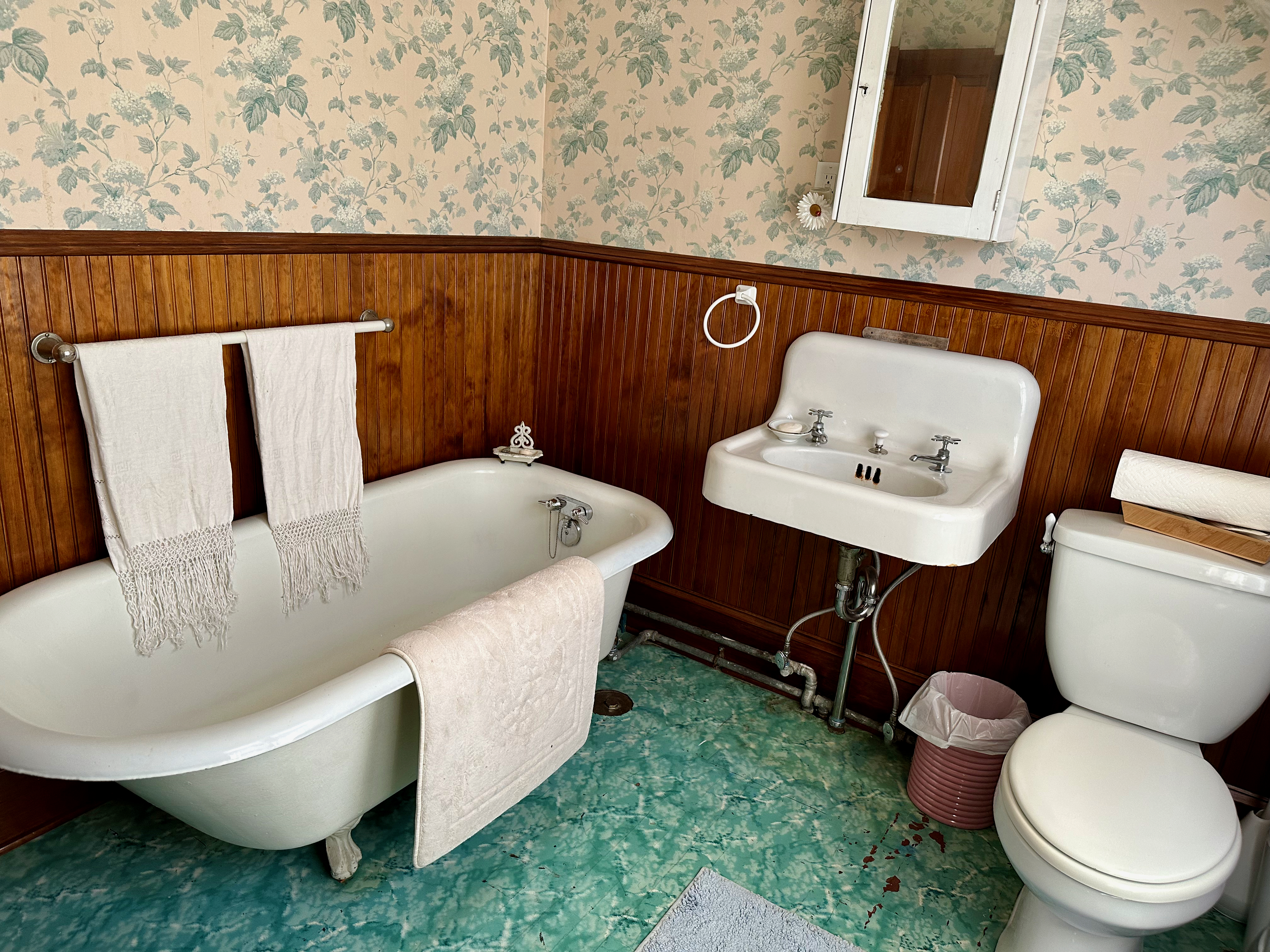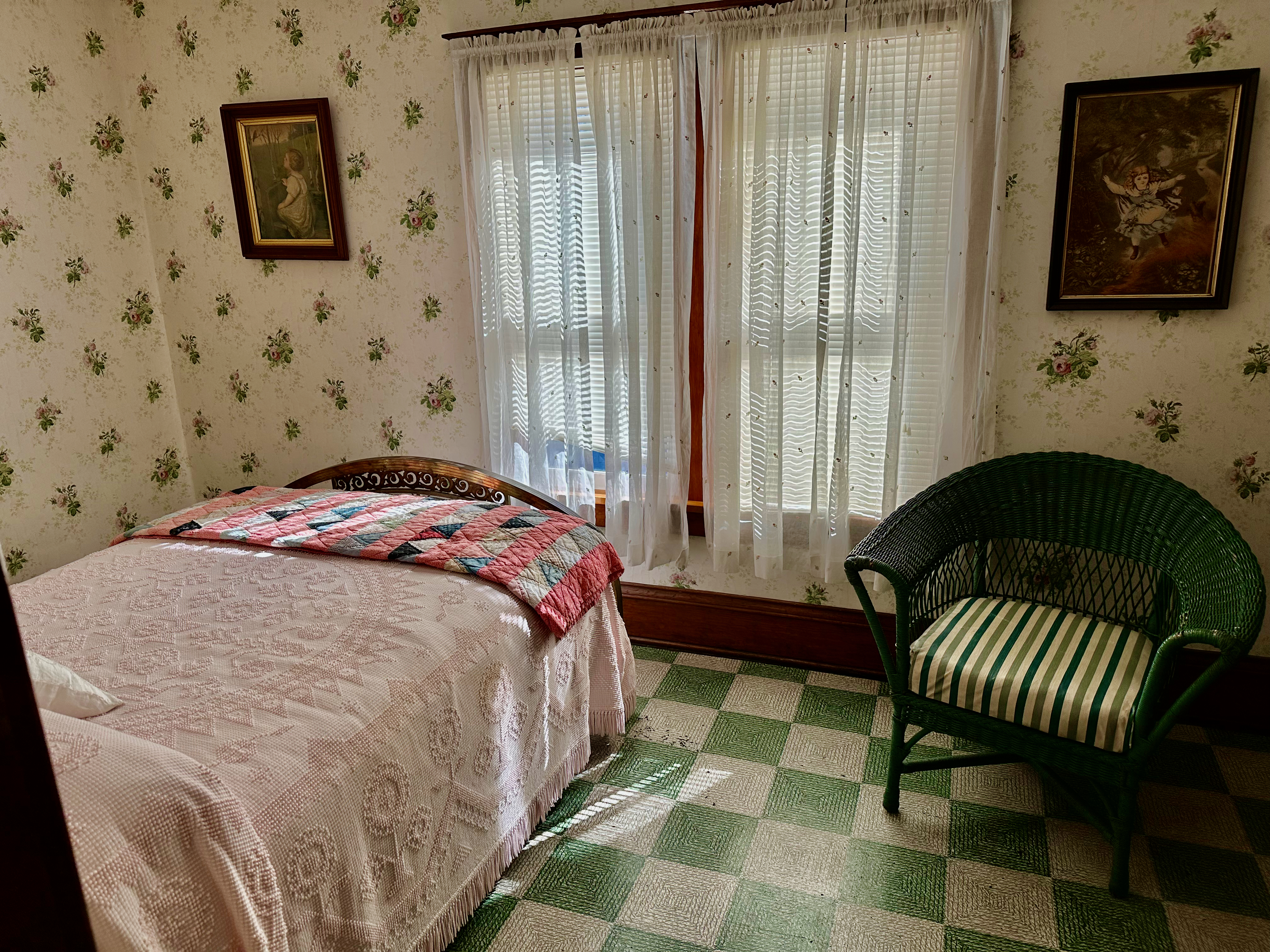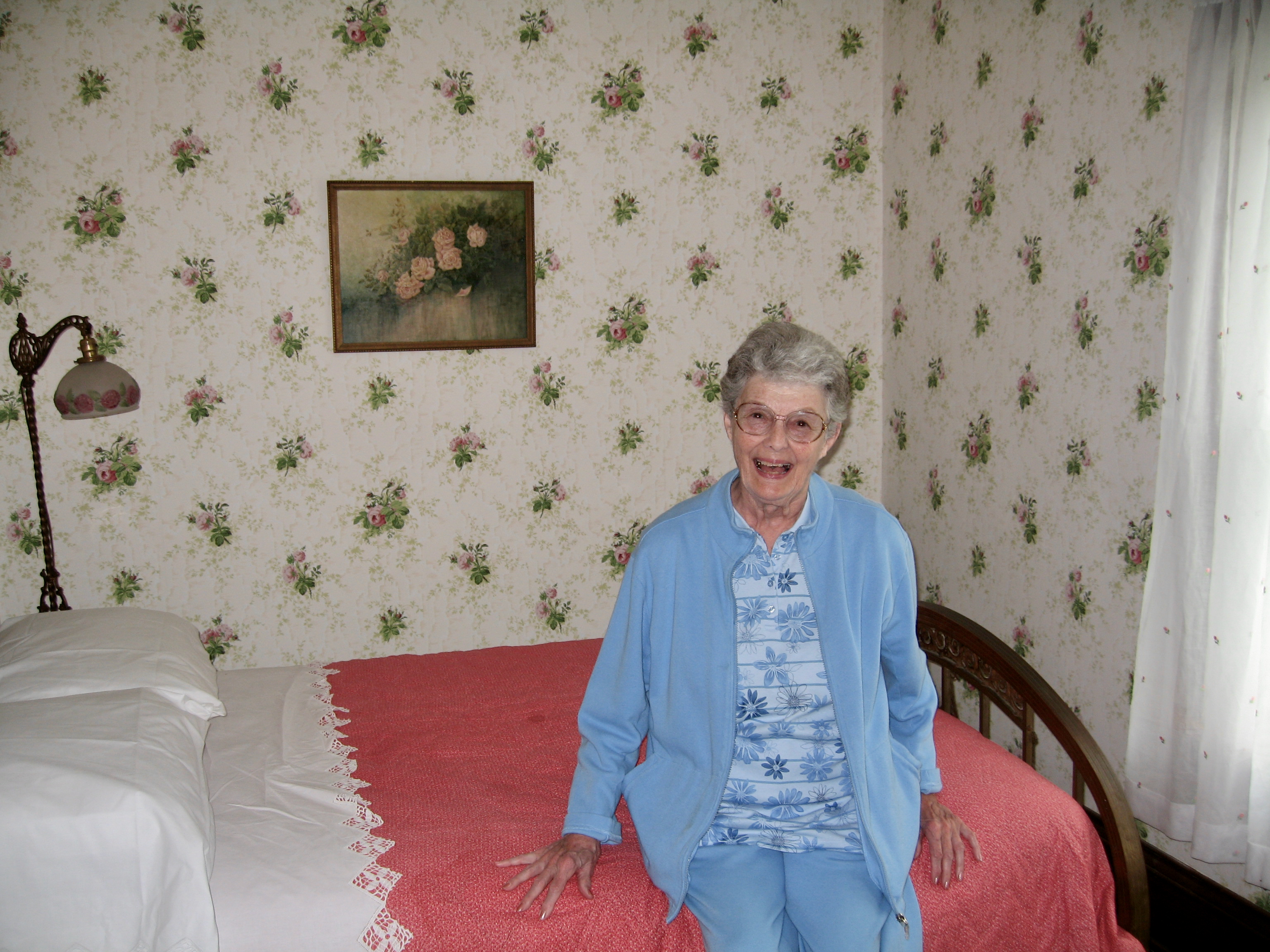There are also three
photos (downloaded from the internet). One dates from 1919, the year
before Lucy moved to the house, and is a
photo of her class at the 8th Street School in downtown Jamestown (not
8th St. in Celoron):
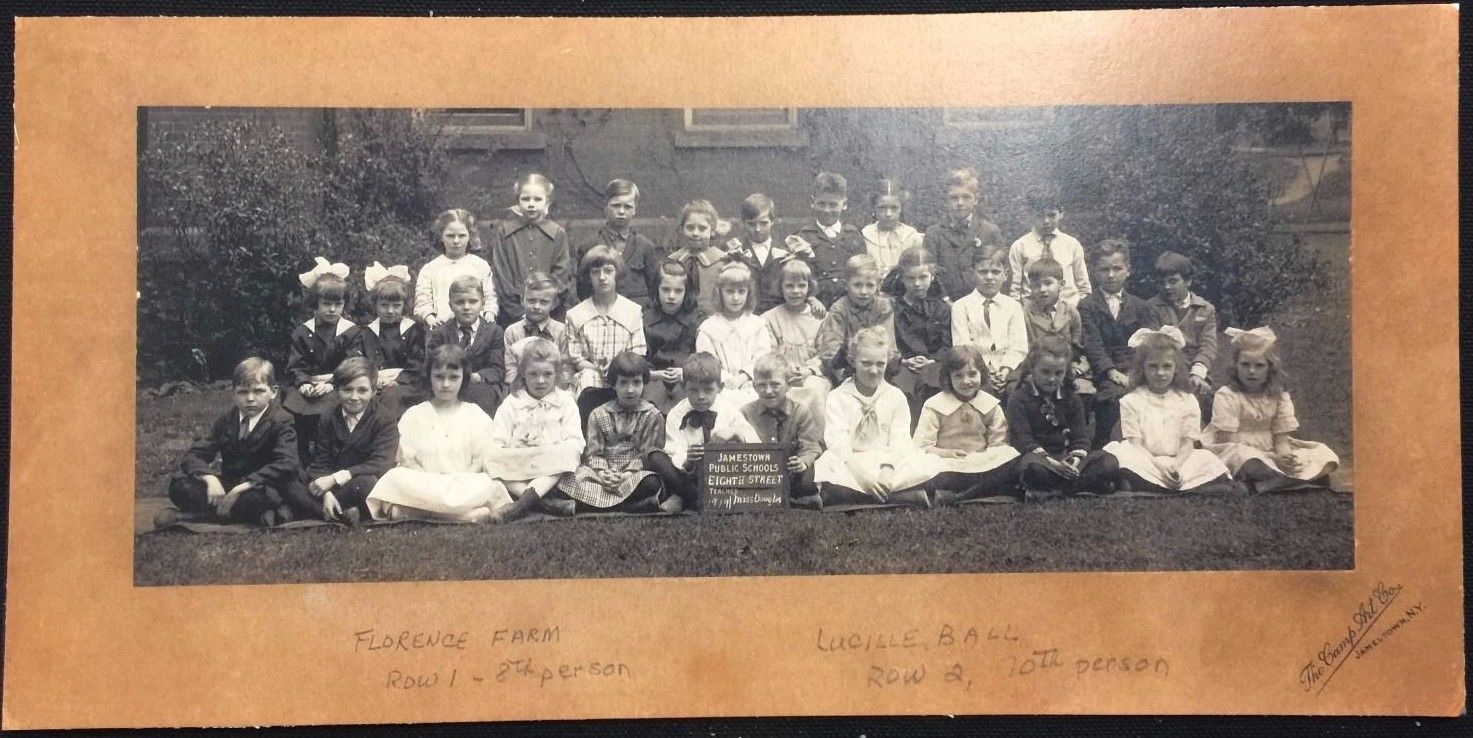
Lucy is in the middle row, 5th from the right.
The second photo is an enlargement of the portion showing Lucy:
The third is a photo of Grandpa and Grandma:
We sent copies of the
photos of Lucy and her grandparents to an artist friend of ours,
Chuck Dransfield,
who found photos of DeDe and Fred Ball; we commissioned him to
paint the family portraits that hang in the parlor:
For a letter from Dransfield to me that provides the sources of the
portraits of DeDe and Fred, along with some insight on his painting
process, link
here.
On the table in the center of the room, surrounded by souvenirs from the
amusement park and elsewhere in Western NY, is a display case on top of
which is a page from an
1881 Chautauqua County atlas
showing the James Prendergast Library Building on the corner of Main and
3rd St. in downtown Jamestown:

The original Prendergast Building.
The horse and buggy are driving south
on Main St.
Ahlstrom Pianos has their showroom on 3rd St.
(The present Prendergast Library building on 5th St. was
constructed in 1890.) This original Prendergast Building was torn down
around 1937, and the building that is there now was erected and leased
from the library for use as a Woolworth's:
After Woolworth's moved to Chautauqua Mall, the building housed a Rite Aid
pharmacy, and now houses the Lucy-Desi Museum. But of
more significance for us, the original building housed the showroom for
Ahlstrom Pianos (take a close look at the 1881 atlas figure).
So, the piano in the parlor was most likely purchased from the building
that used to be where the Lucy-Desi Museum is now!
In the display case underneath this atlas page is a December 1923 issue of
the
Jamestown Morning Post newspaper that Mary found
wrapped
as insulation around the outside of the "poop pipe" that leads from the upstairs
bathroom to the sewer. (It's not in great shape, but it is now nearly 100
years old; who are we to throw it out?)
There are also two photo albums on the coffee table under the front
window. One contains photos from the 2005 visit by Fred and Zo Ball,
Cleo and Cecil Smith, and Lucie Arnaz, as well as photos from the 2007
visit by Zo (Fred had passed away earlier that year), Cleo, and Lucie.
The 2005 visit was videotaped (including Fred and Cleo's re-enactment of
the shooting!), and a DVD of it is in the DVD player next to the piano.
Here a few of those photos:

.jpeg)
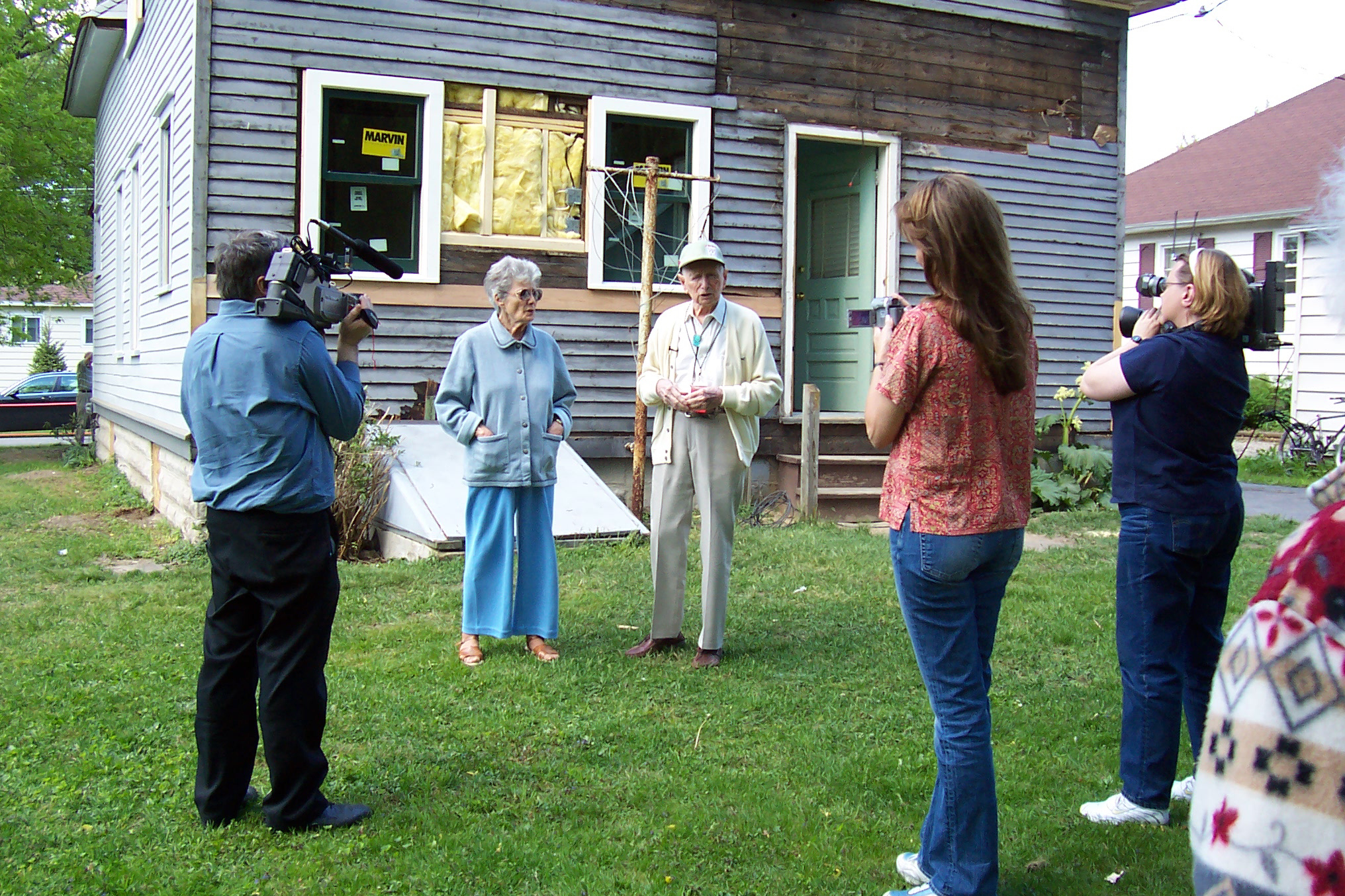
Left: Fred Ball and Mary Rapaport
Middle: Fred Ball, Mary Rapaport, and Zo Ball
Right: Cleo, Fred, and Lucie in the back yard

Fred and Cleo re-enacting the shooting
The other photo album
contains historical photos of the house, beginning with a photo
that may have been taken around 1927 and that I found in a
TV Guide article about the family. It shows Lucy,
an unidentified little girl
Fred (holding a dog), and Cleo, standing in the driveway
of the house. (This is the only other photo I have of the family at the
house. The dog might be Lucy's dog Whoopie, according to Michelle
Zimmerman [personal email, 9 May 2023), who identified the dog in
another photo with Lucy.)
The photo also shows a house across the street, but the house in the
photo doesn't quite look like the house that is currently across the
street, so either the one in the photo was torn down and replaced, or else
remodeled. (In nearly a hundred years, anything can happen!)
But the most interesting question is who the little girl might be. We know
that the photo could not have been taken after 1928, because that's when
the lost the house. But given Lucy's apparent age, perhaps the photo was
taken in 1927. And it looks like it was summer, so let's say it was taken
in July. That's when the shooting took place!
Could she be Johanna?!
This is followed by a series of photos given to us by Lloyd Faulkner that
were taken when Lucy and Desi visited Jamestown in 1956 for the world
premier of their movie
Forever Darling
at the
Palace Theater in downtown Jamestown (now the
Reg Lenna Center
for the Arts).
(The full story of this visit, with many photos, is told in
Christopher T. Olsen's Lucy Comes Home: A Photographic
Journey" (New York: G-Arts, 2018).
(You can look inside Olsen's book at its
Amazon.com page.)
Lucy had been back to Celoron in the 1940s.
Here are two photos from Lucy's visit in 1946:


Left: Lucy at Celoron Park, with Edward J. Keller (mayor) on left and Harry
Illions (owner of the park, with hat)
Right: Lucy at Celoron Park, with Caresse Bush "photobombing" on the
left!
But this was the first time she had returned to her childhood home. And, of
course, it was Desi's first visit to the area. The photos show Lucy,
Desi, Mrs. Faulkner, Lloyd's toddler son, and several neighbors.
The two central
photos show Lucy in the parlor; in one of them, she touches the curtain rod:
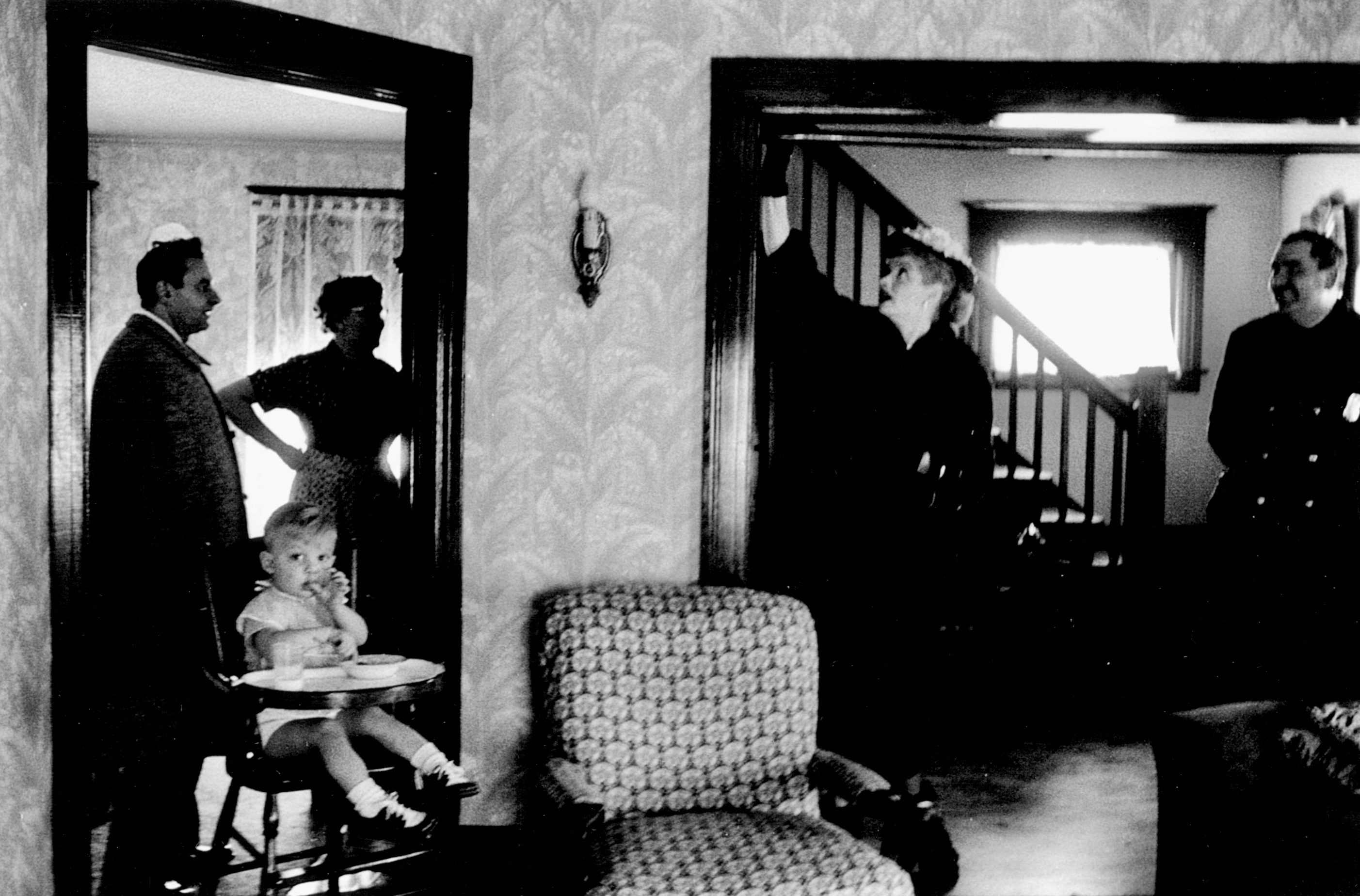
(That's Mrs. Faulkner on the left and Lloyd's son Craig in the high chair.
For the record, other photos (not in this document) show Desi
with Craig's
younger brother Clark, who was upstairs sleeping.)
Besides perhaps being used to provide privacy for Flora Belle, Lucy also
used the curtain rod when she put on plays (along with Pauline Lopus and,
perhaps, Fred and Cleo) in the foyer, with the adults seated in the parlor
as the audience. Lucy would put a sheet over the curtain rod to use as a
curtain:
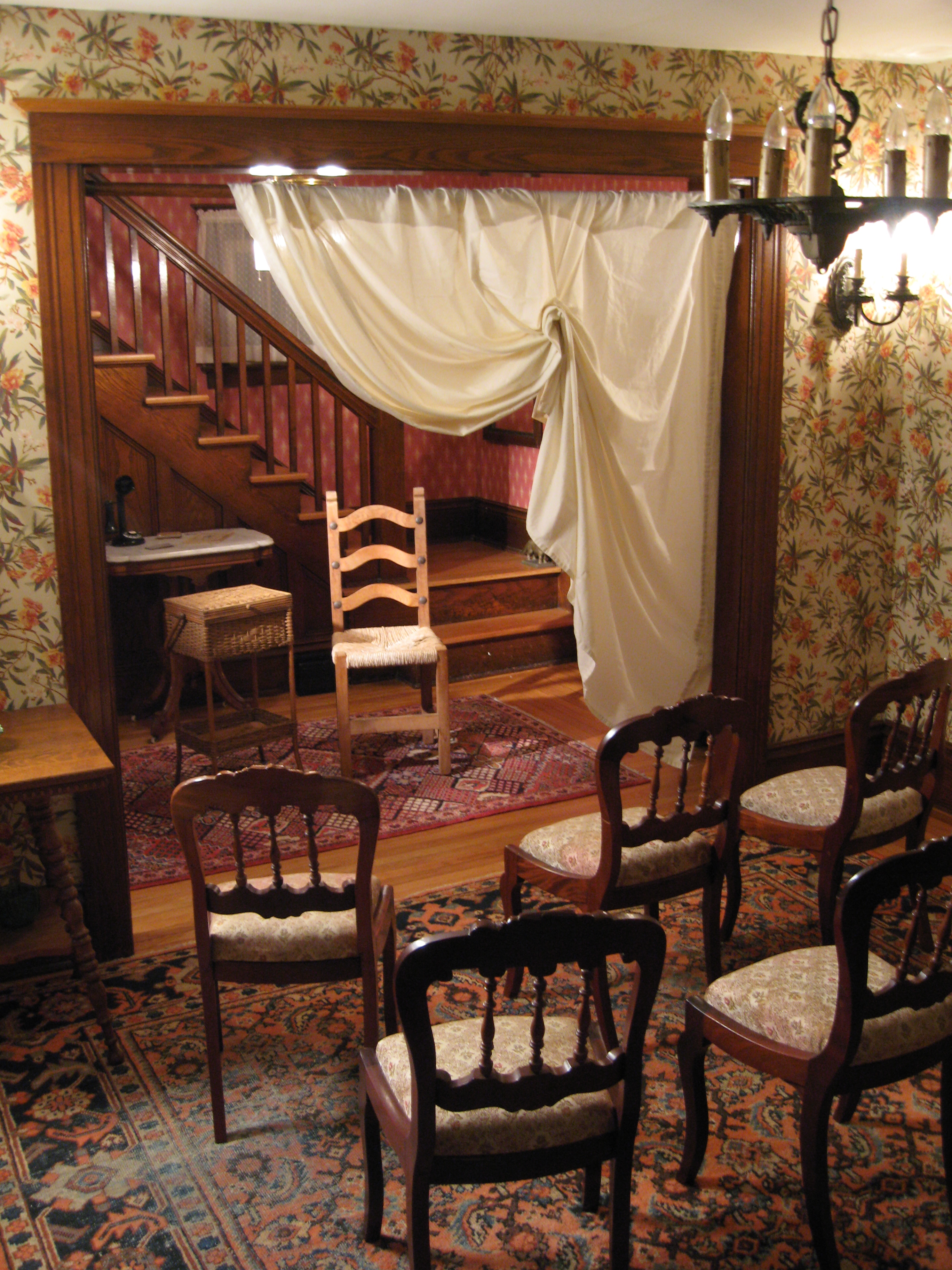
A possible set-up for Lucy's home theater.
There is one other possible use of the curtain rod: As we'll see later,
there are three bedrooms, one for DeDe, one for Grandpa and Fred, and one
for Lucy and Cleo. But where did Lola sleep? The 1926 Jamestown and
Celoron city directory lists Lola as working downtown at a hair salon
but with her residence in Celoron,
yet she is not listed in the
Celoron section of that directory. Presumably, she was living at the house
and, perhaps, sleeping in the parlor — where she would have
needed something hanging from the curtain rod to give her privacy.
Courtesy of Michelle Zimmerman, here are two other photos from that 1956
visit:
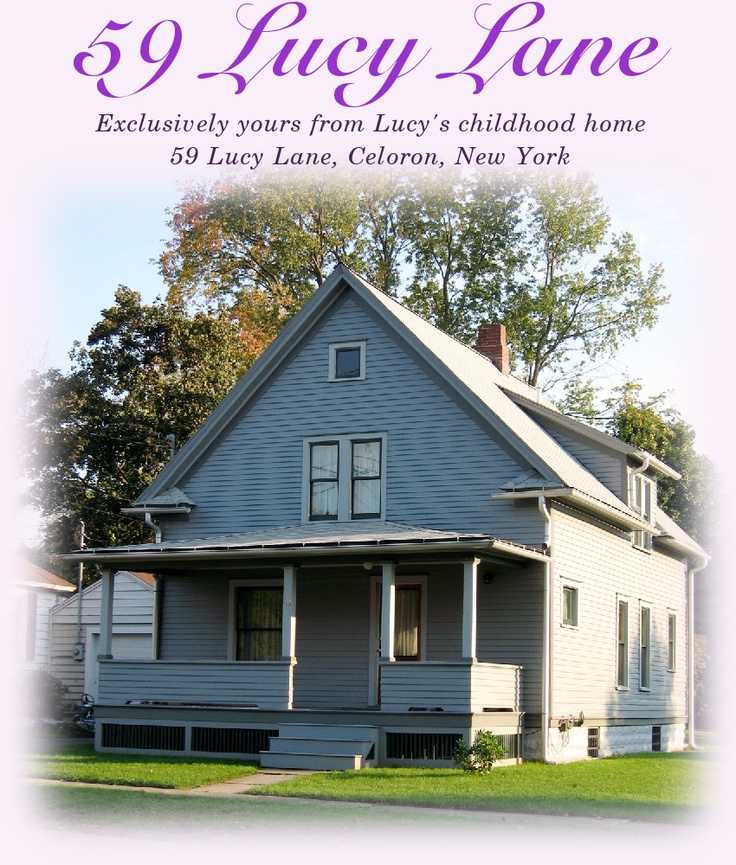

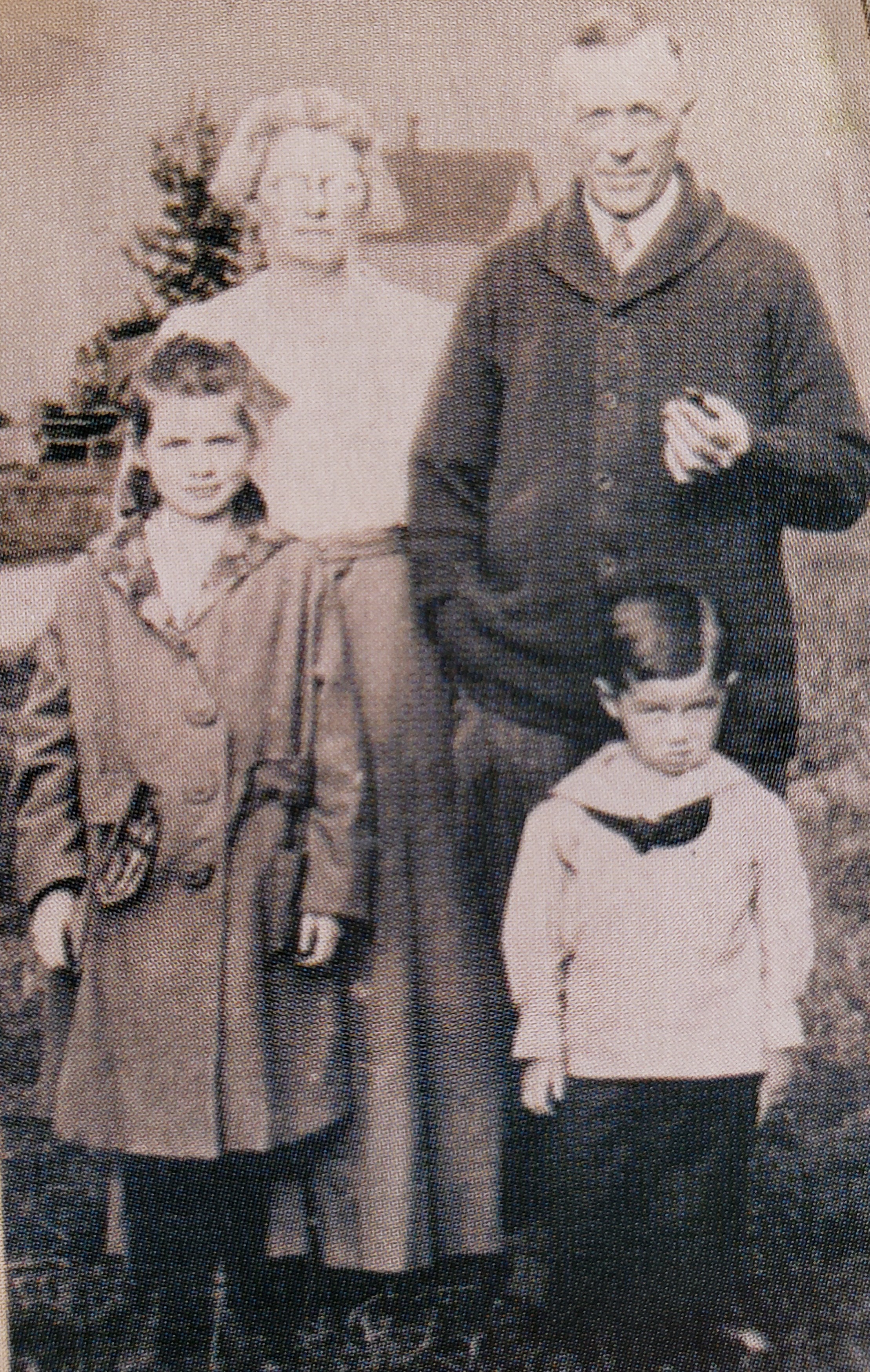
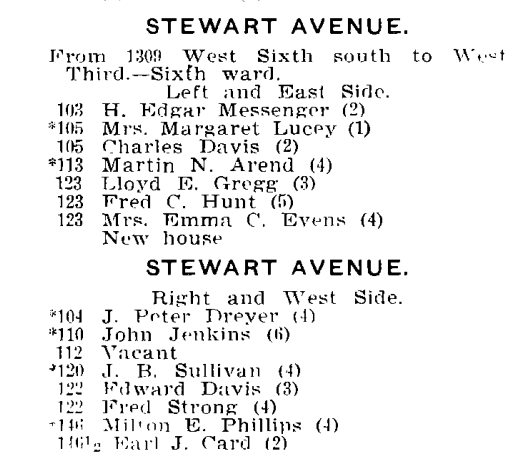
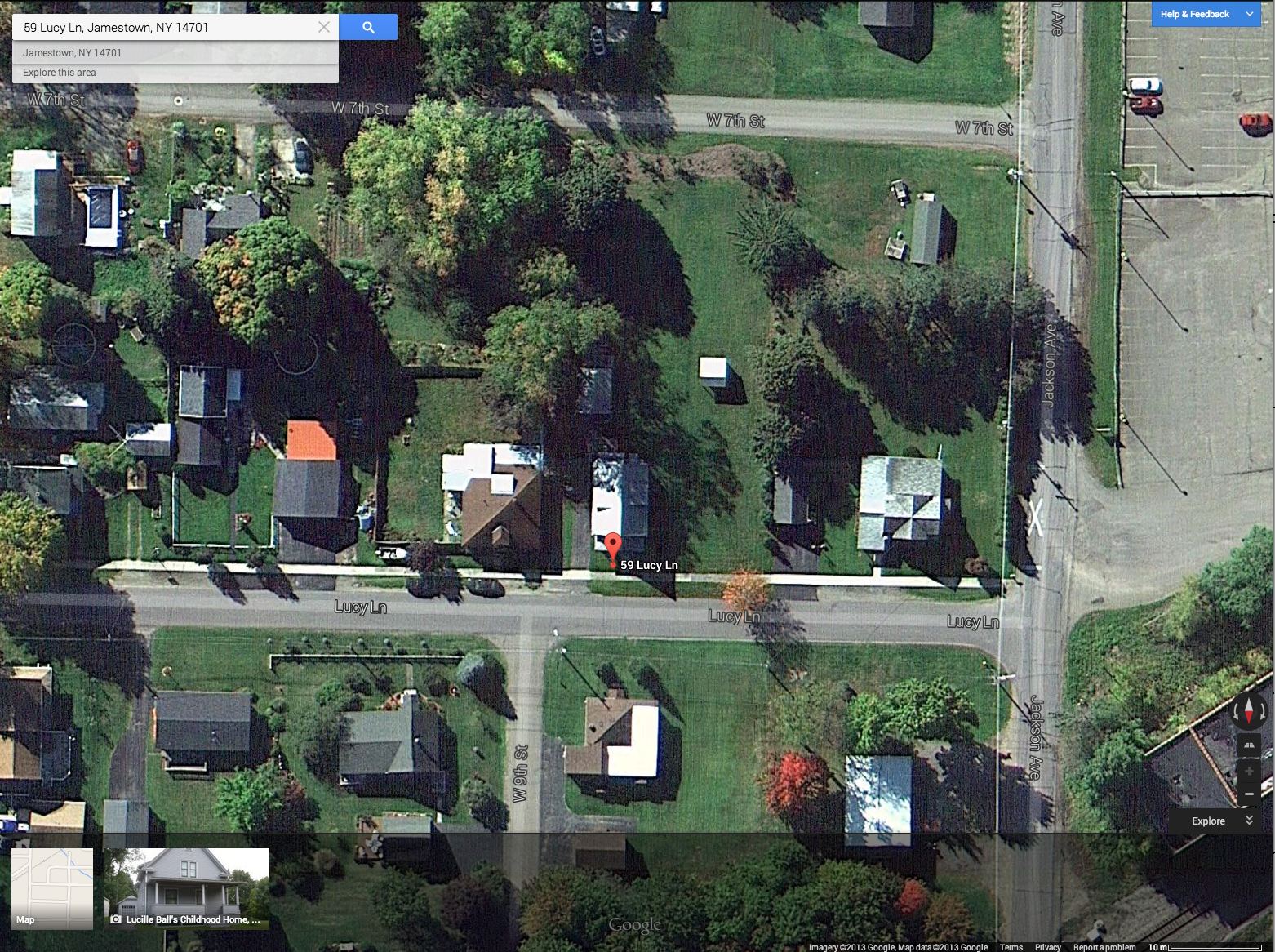
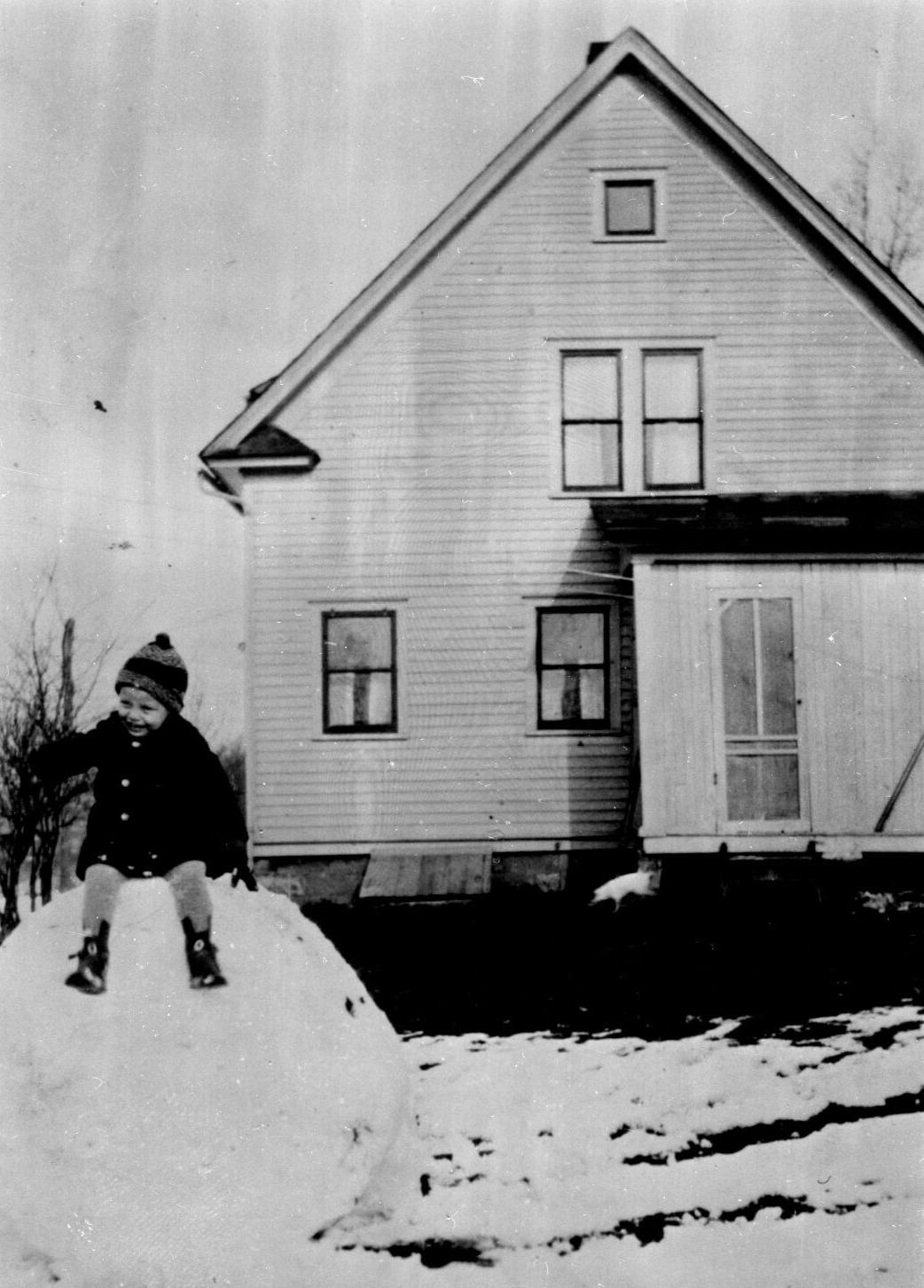

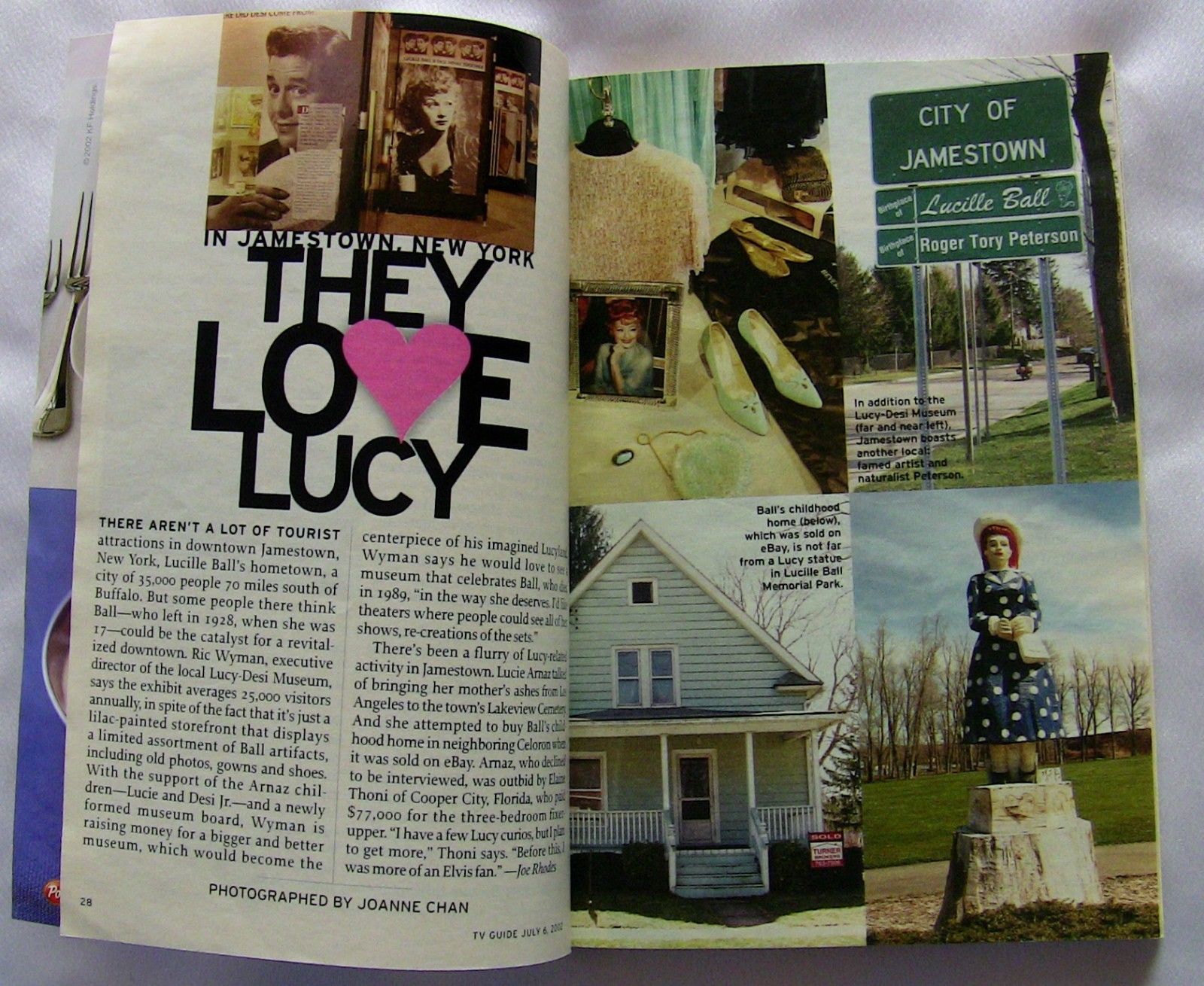
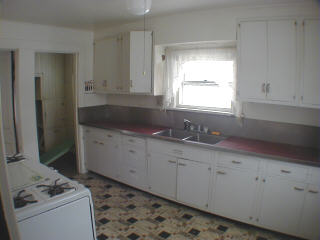
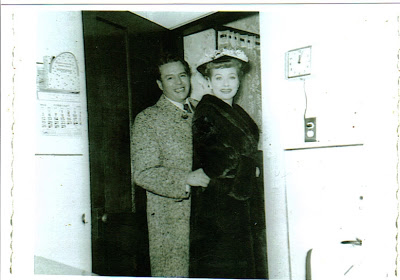
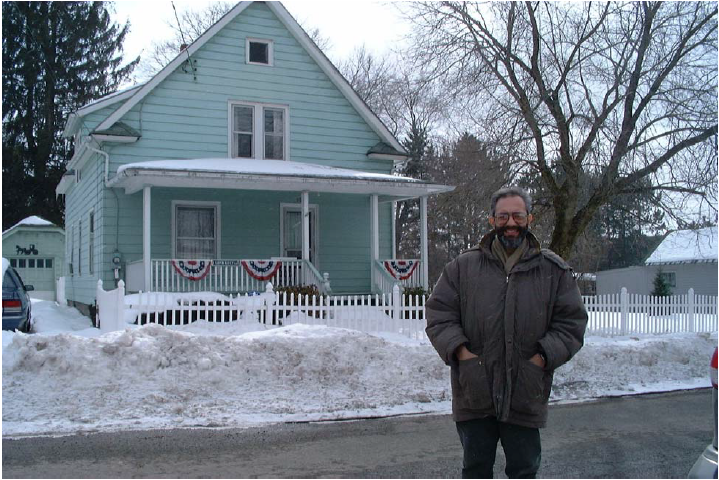
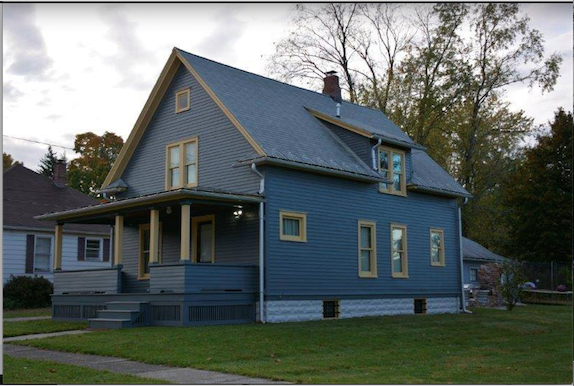
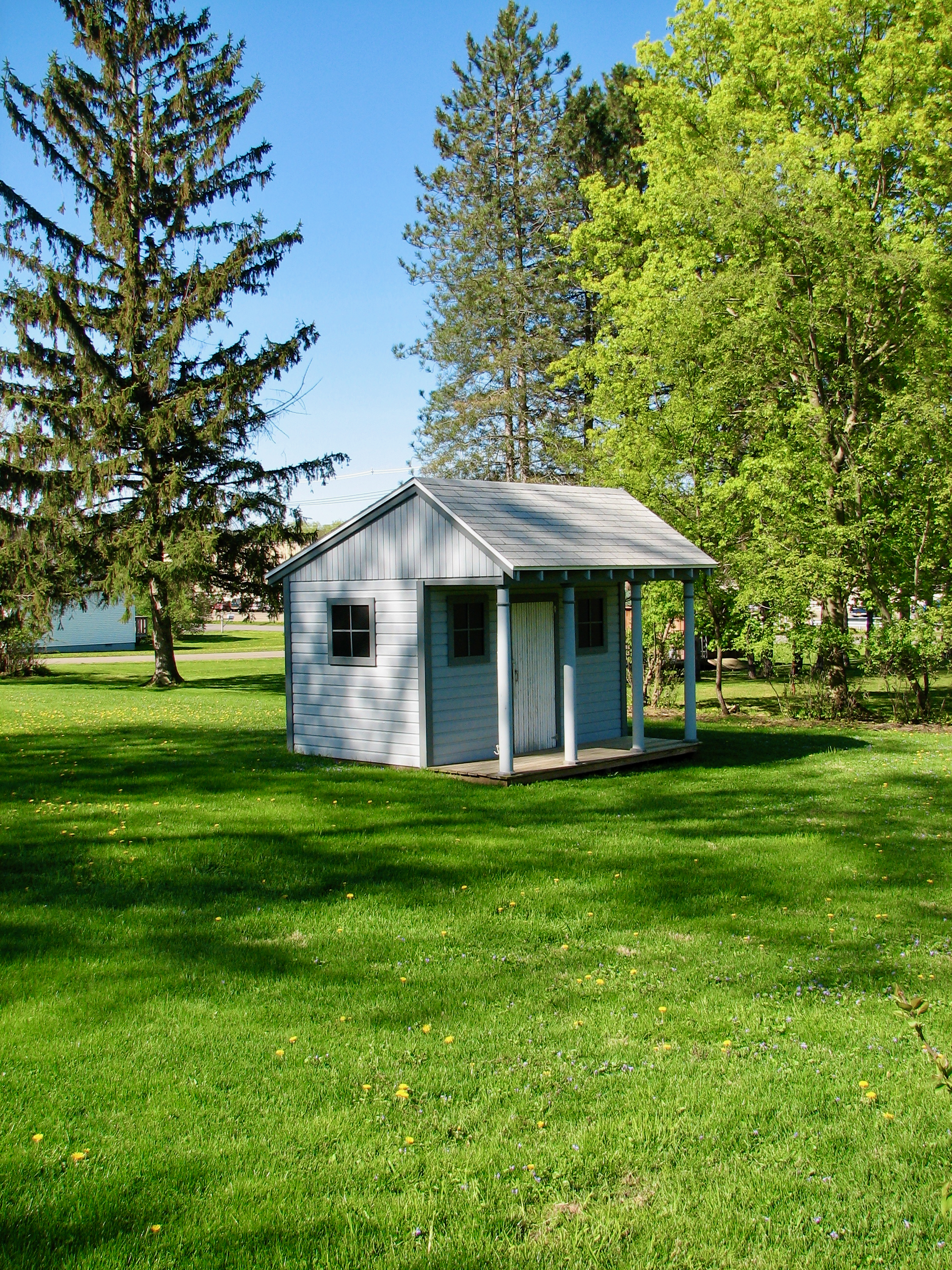
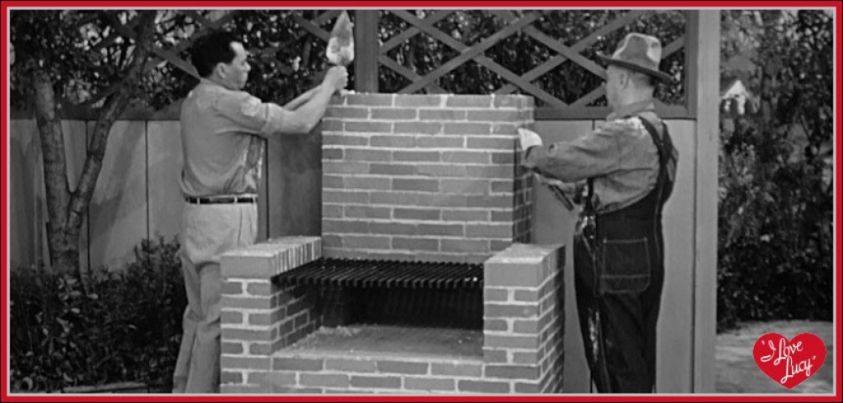
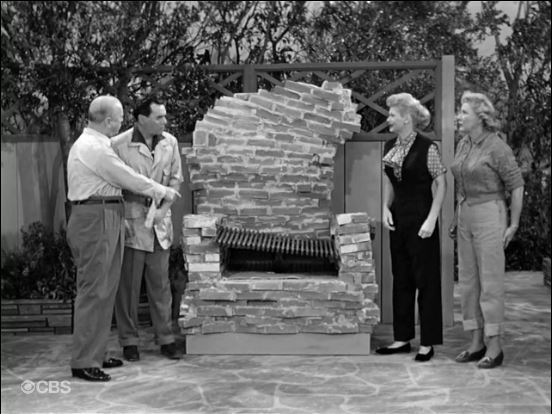

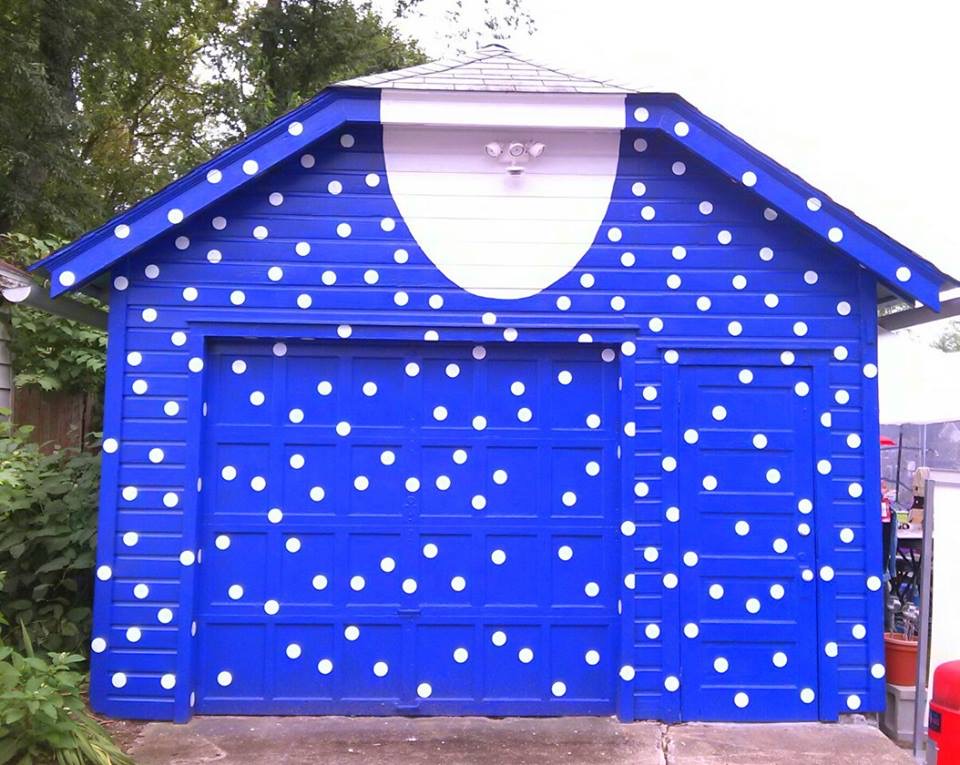
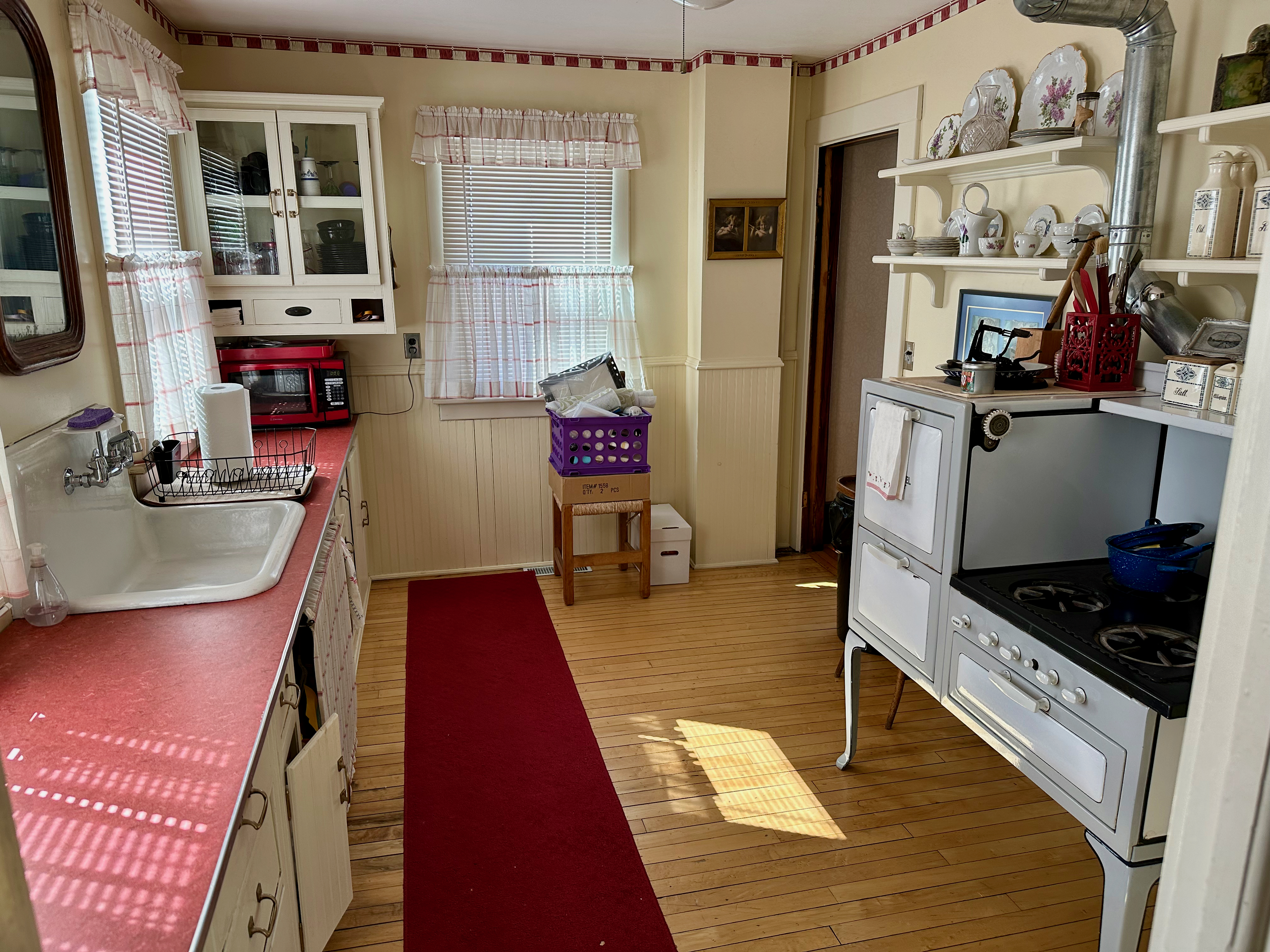

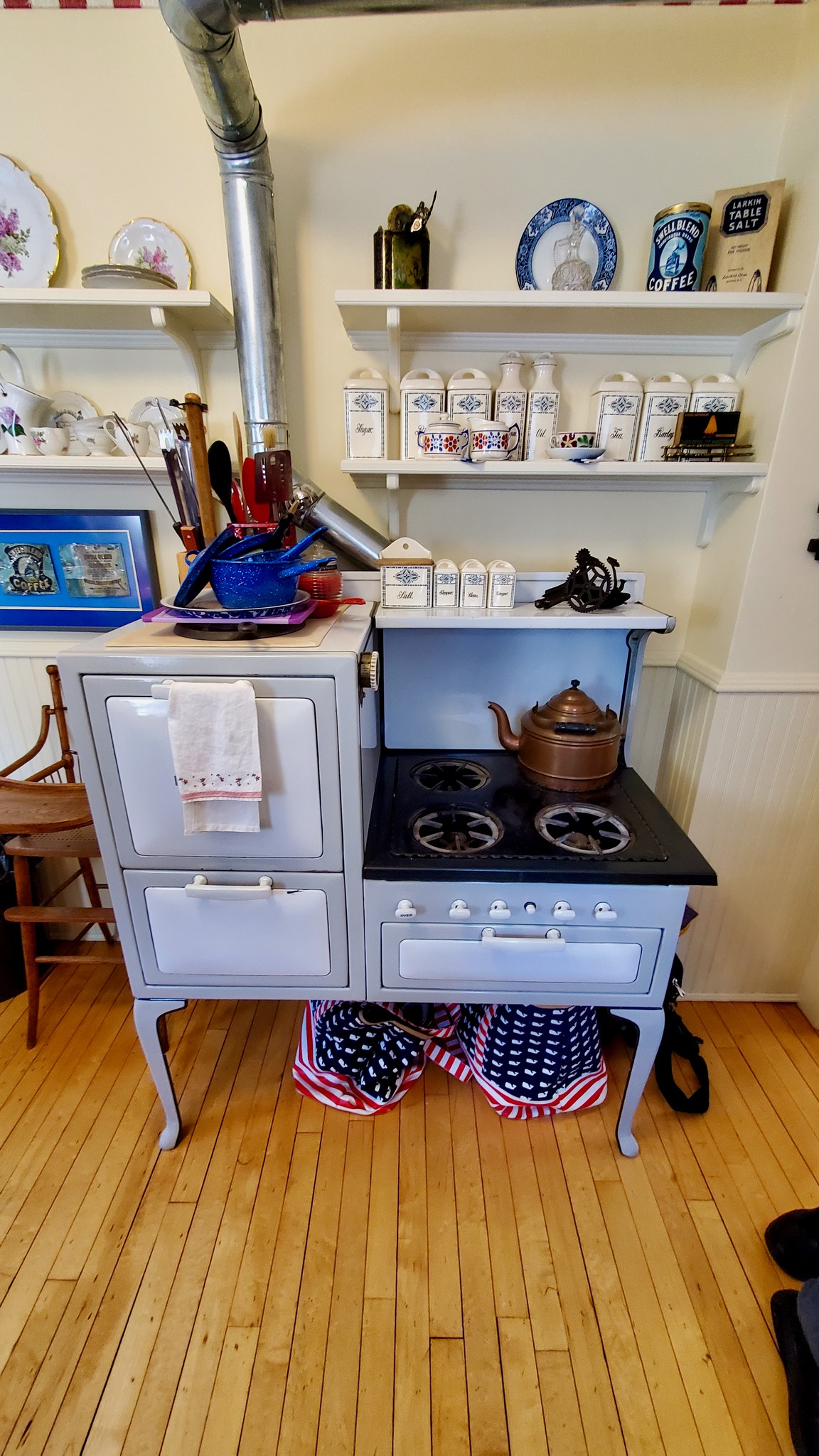
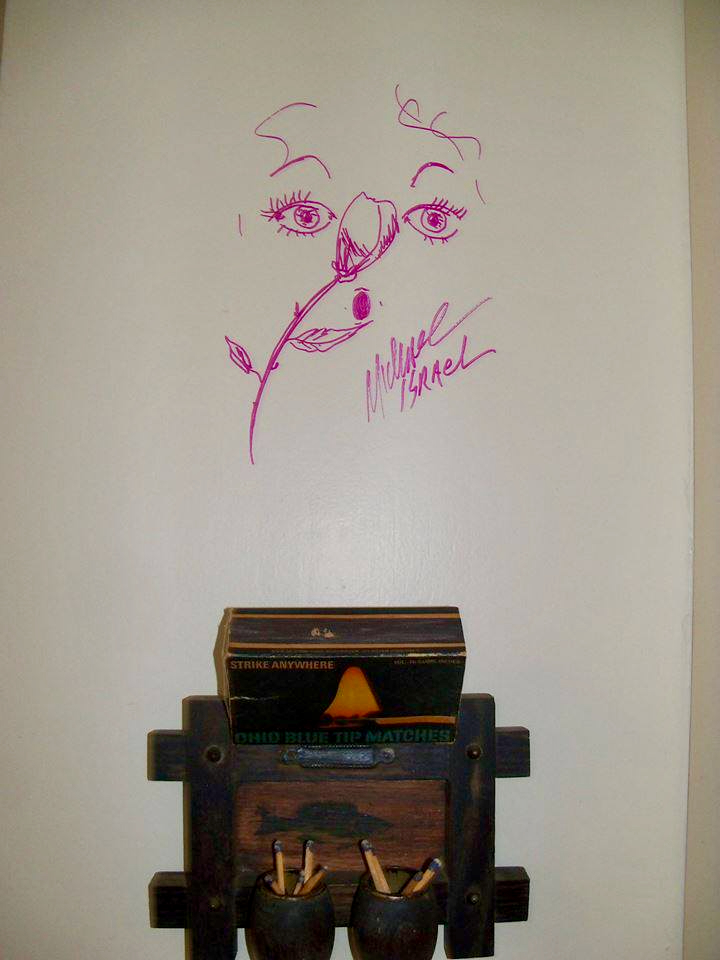

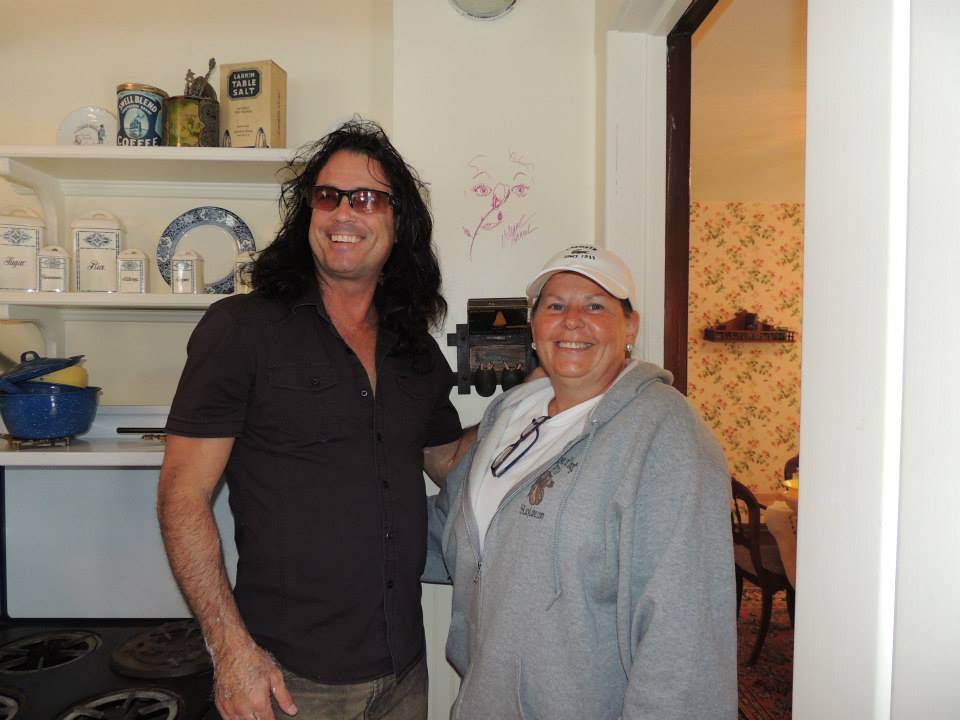
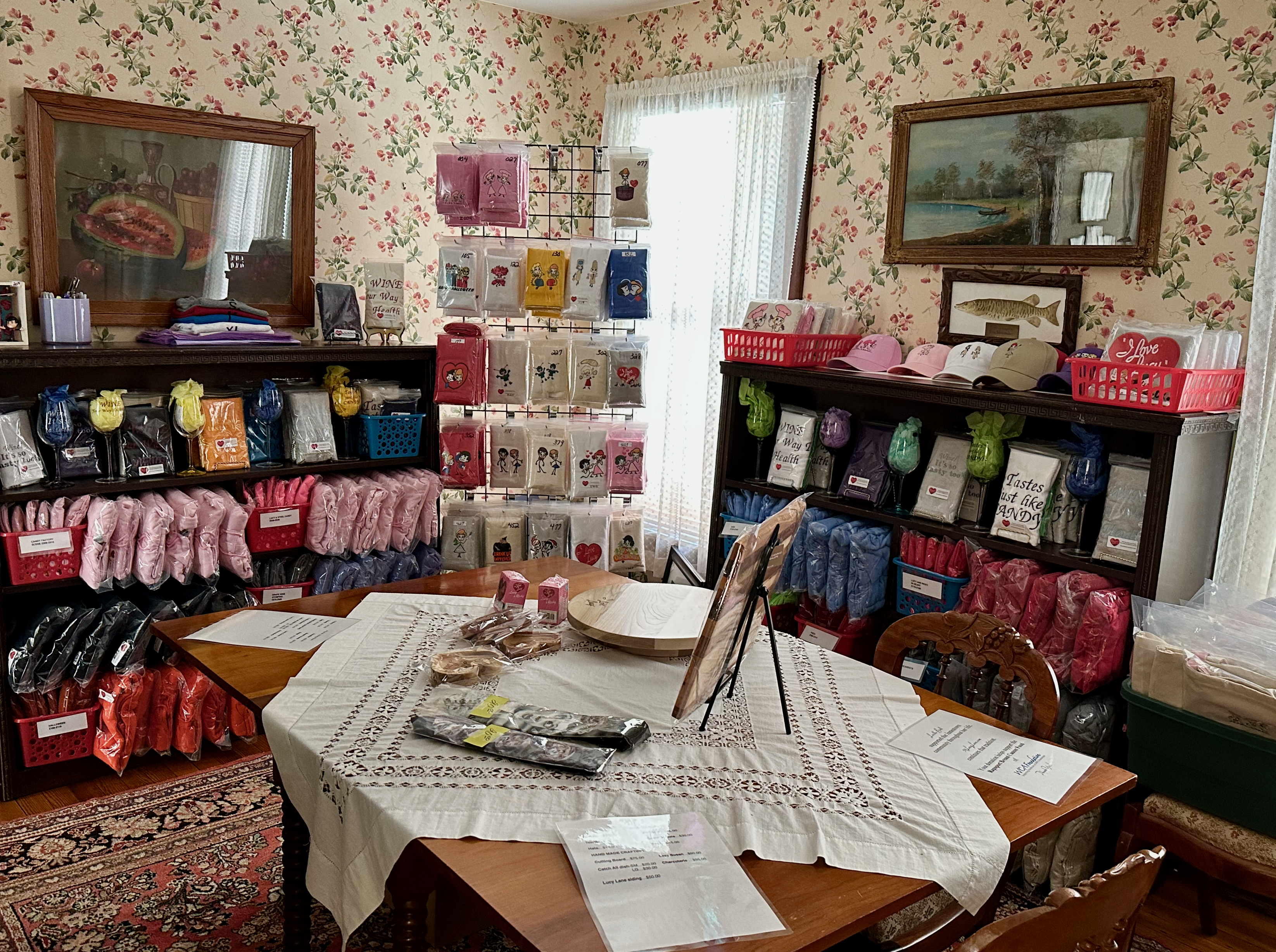
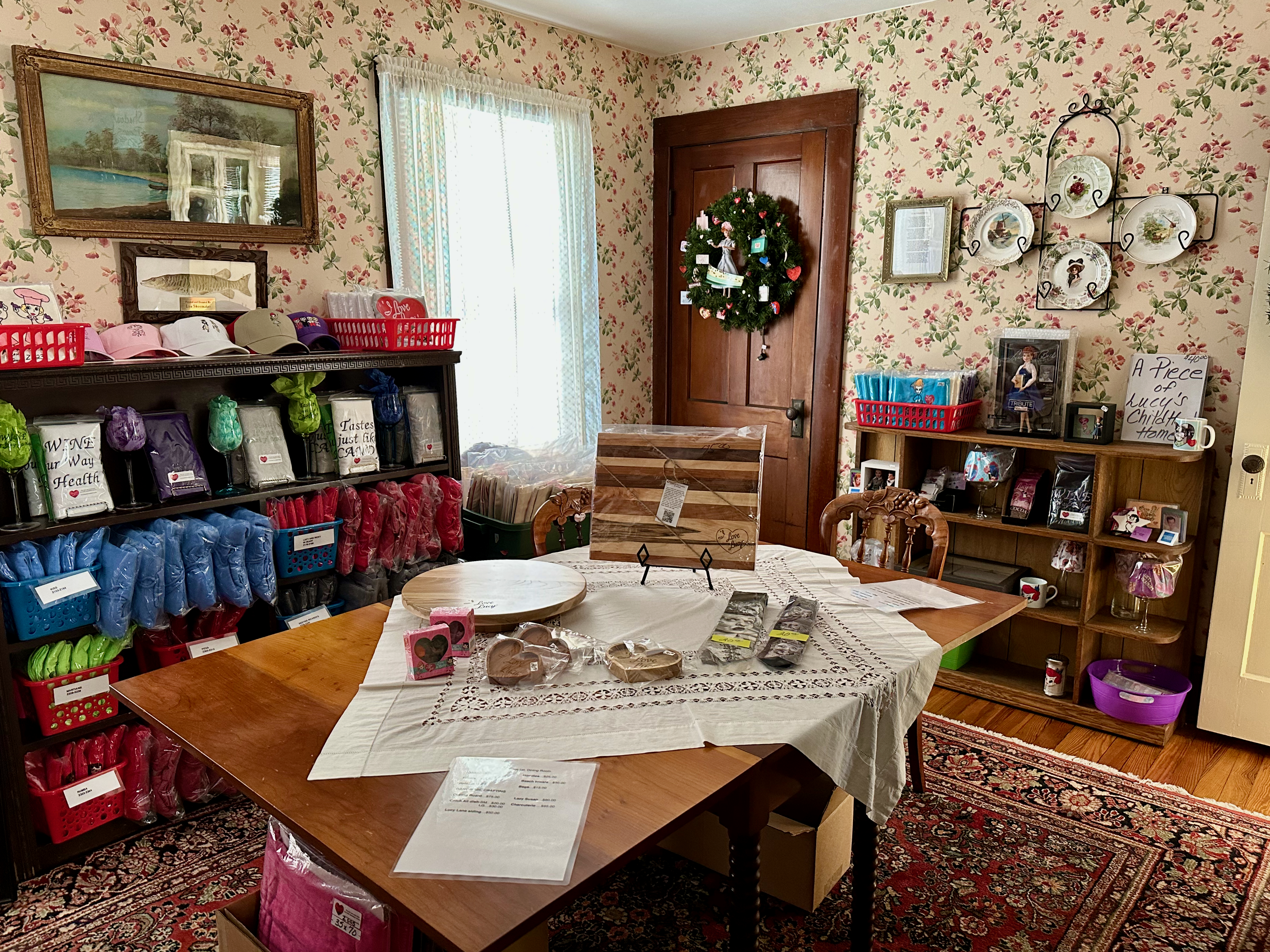
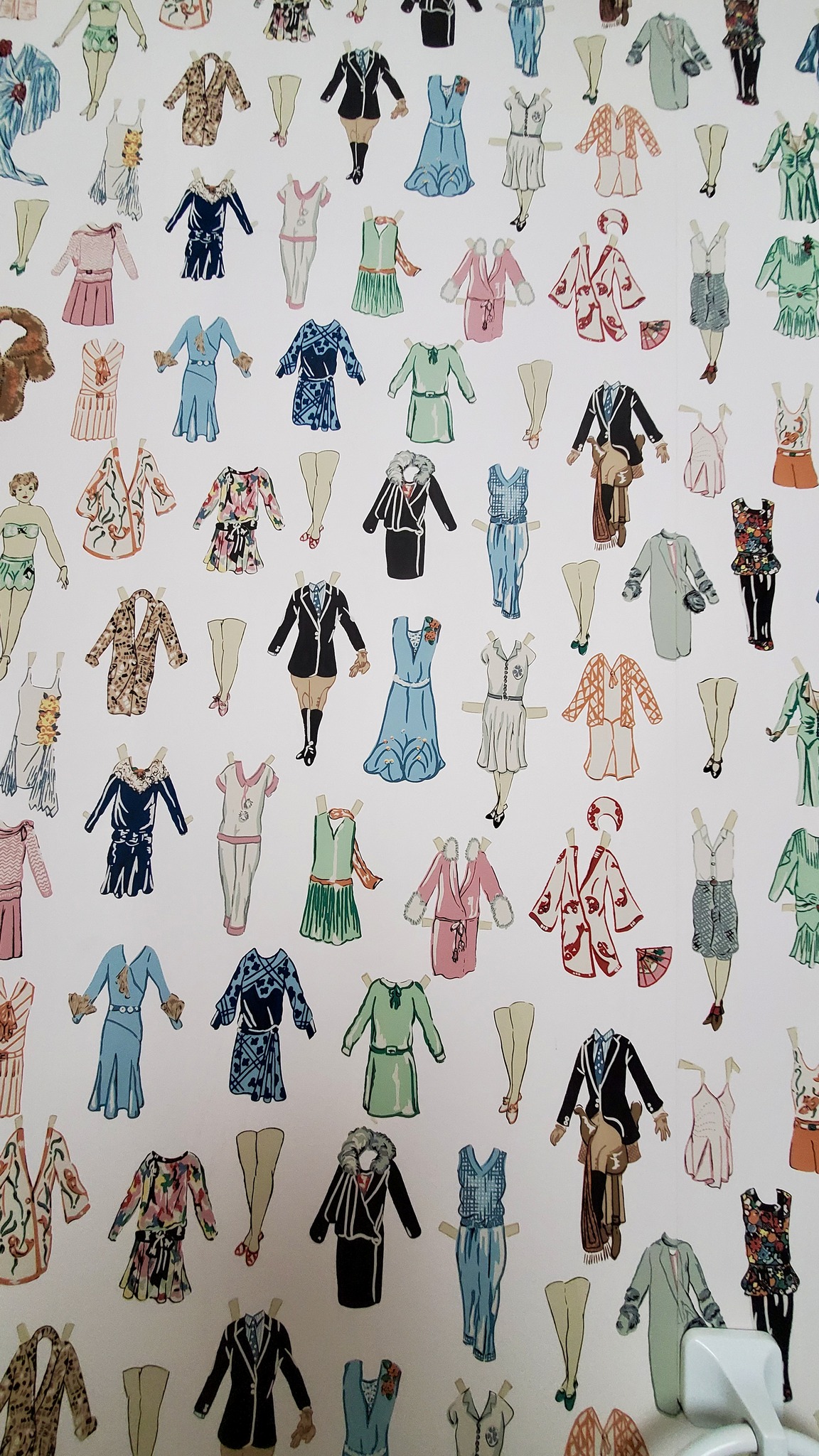
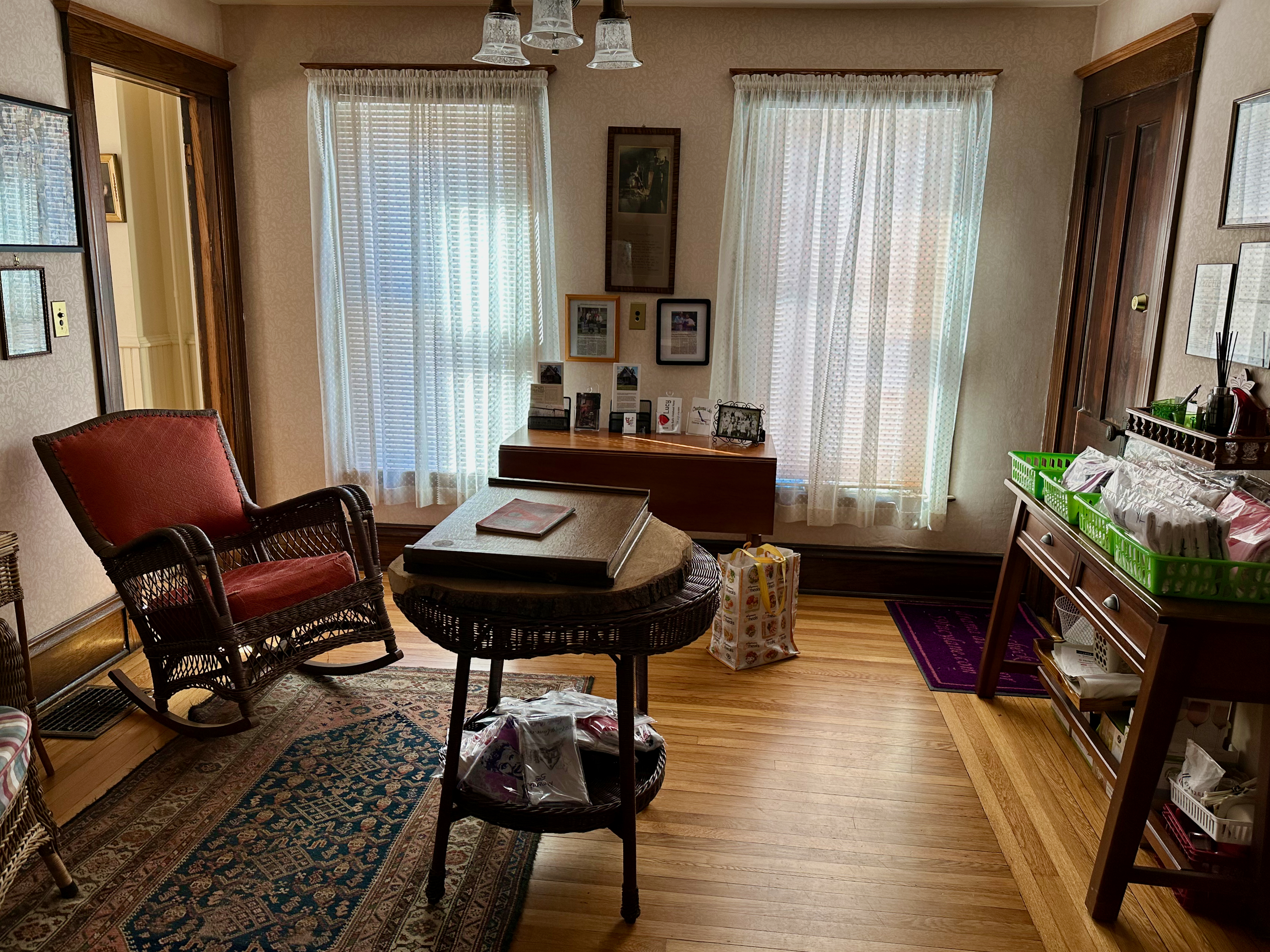
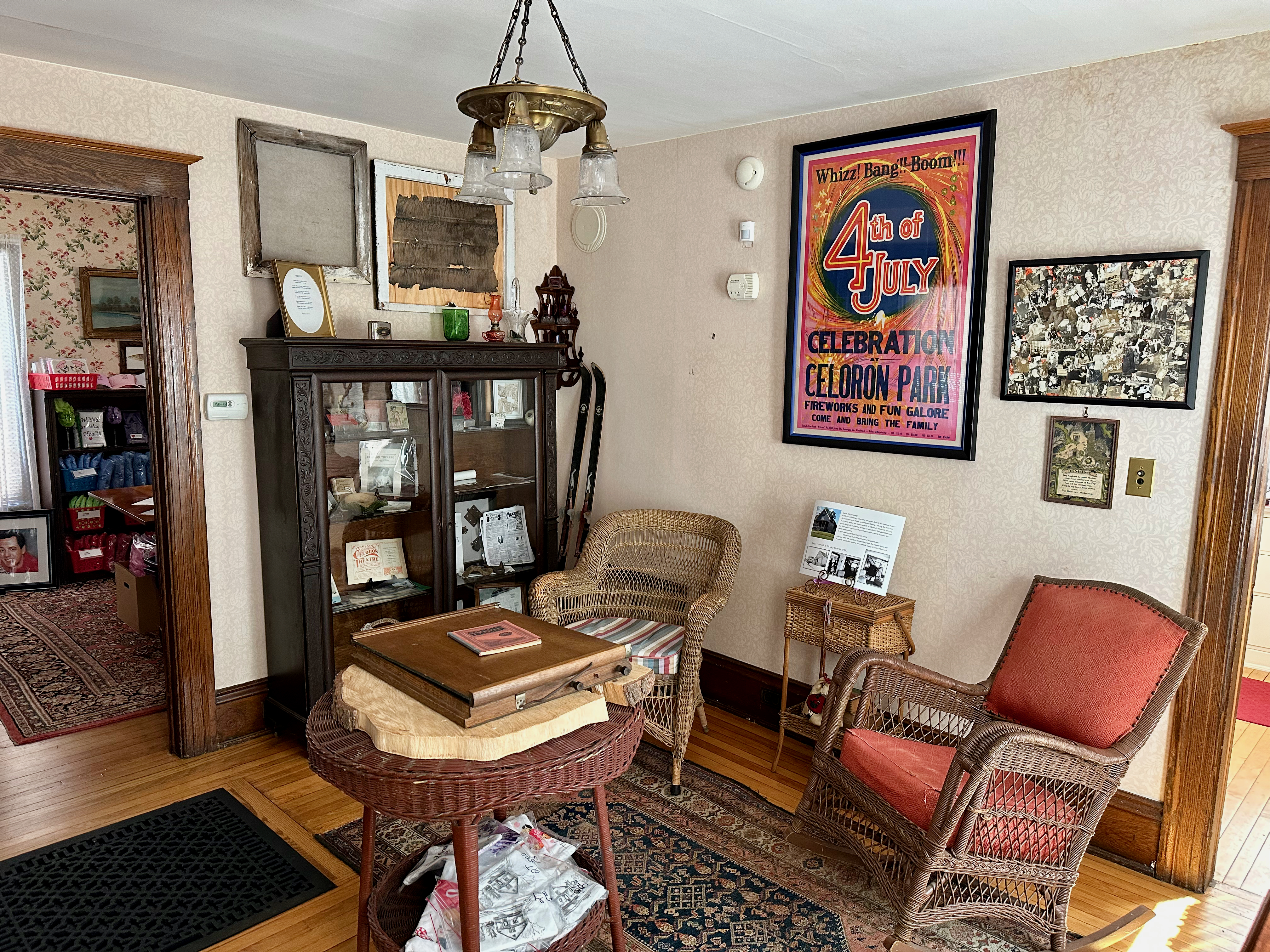
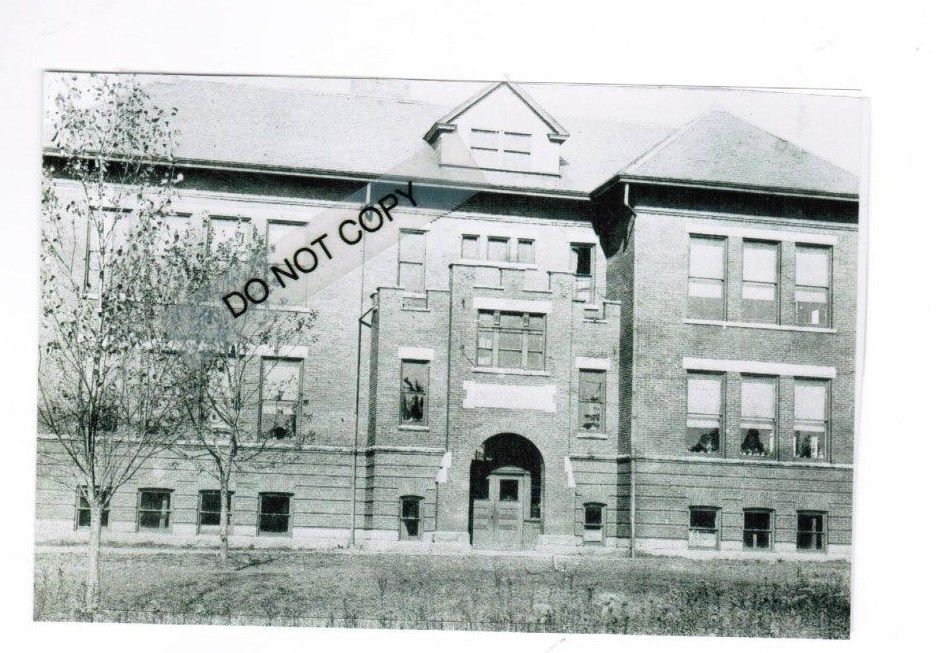

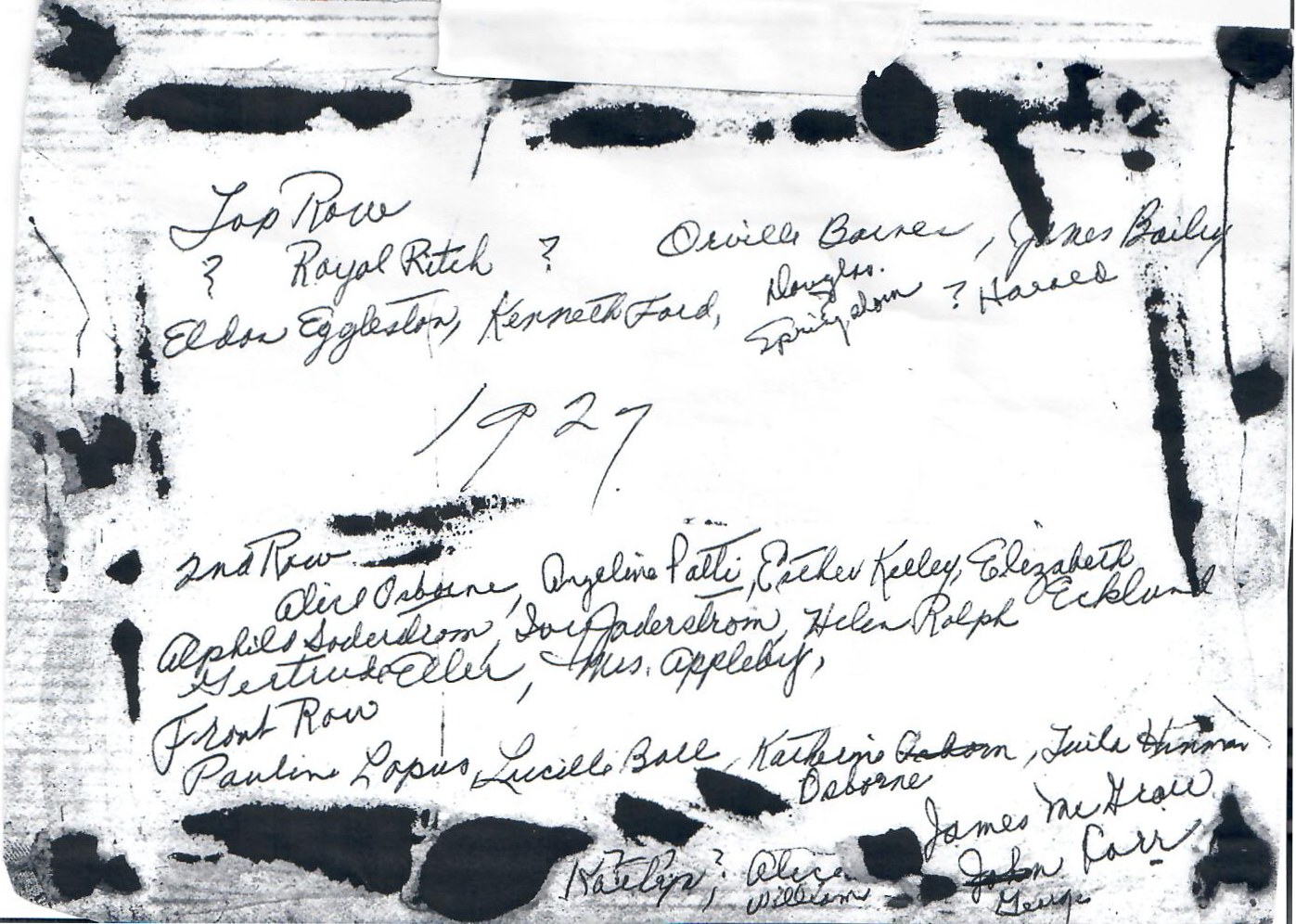
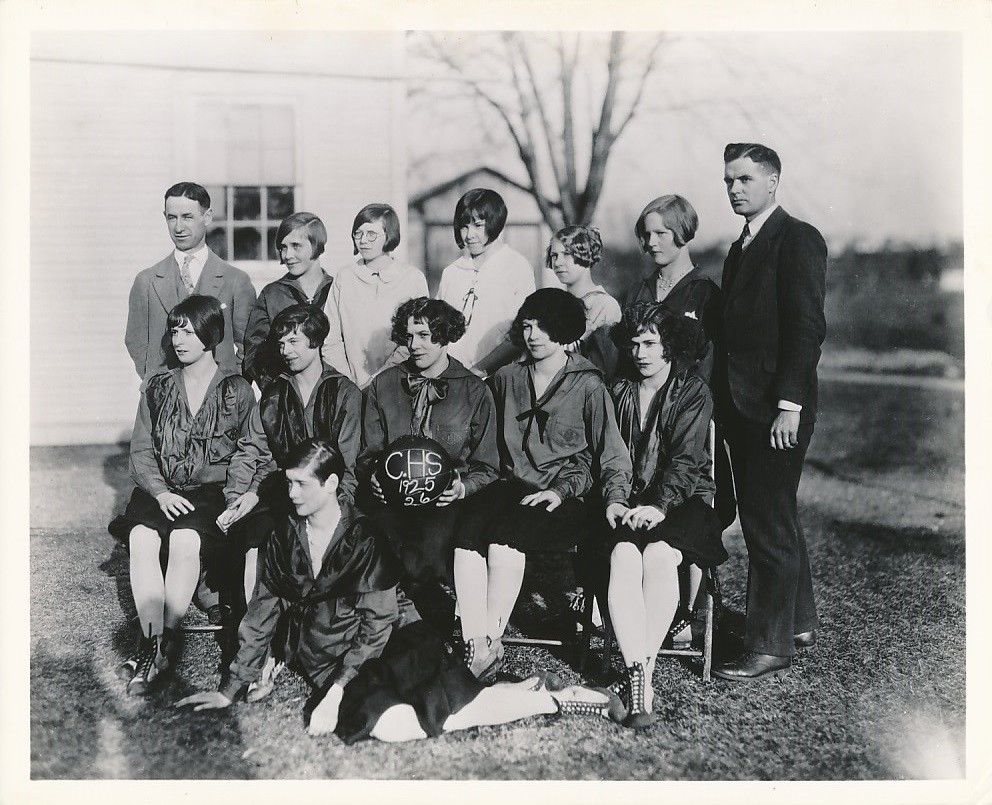

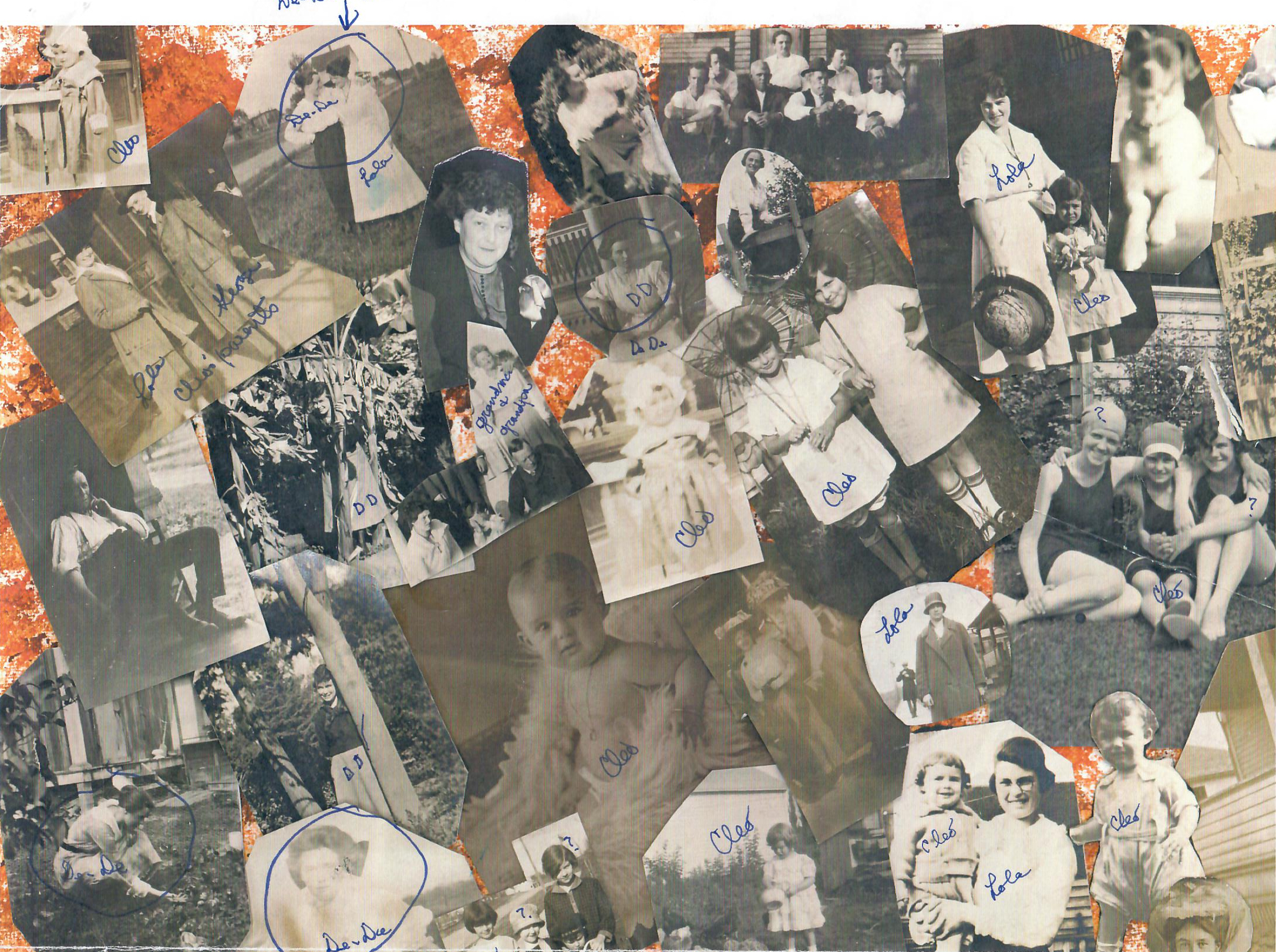
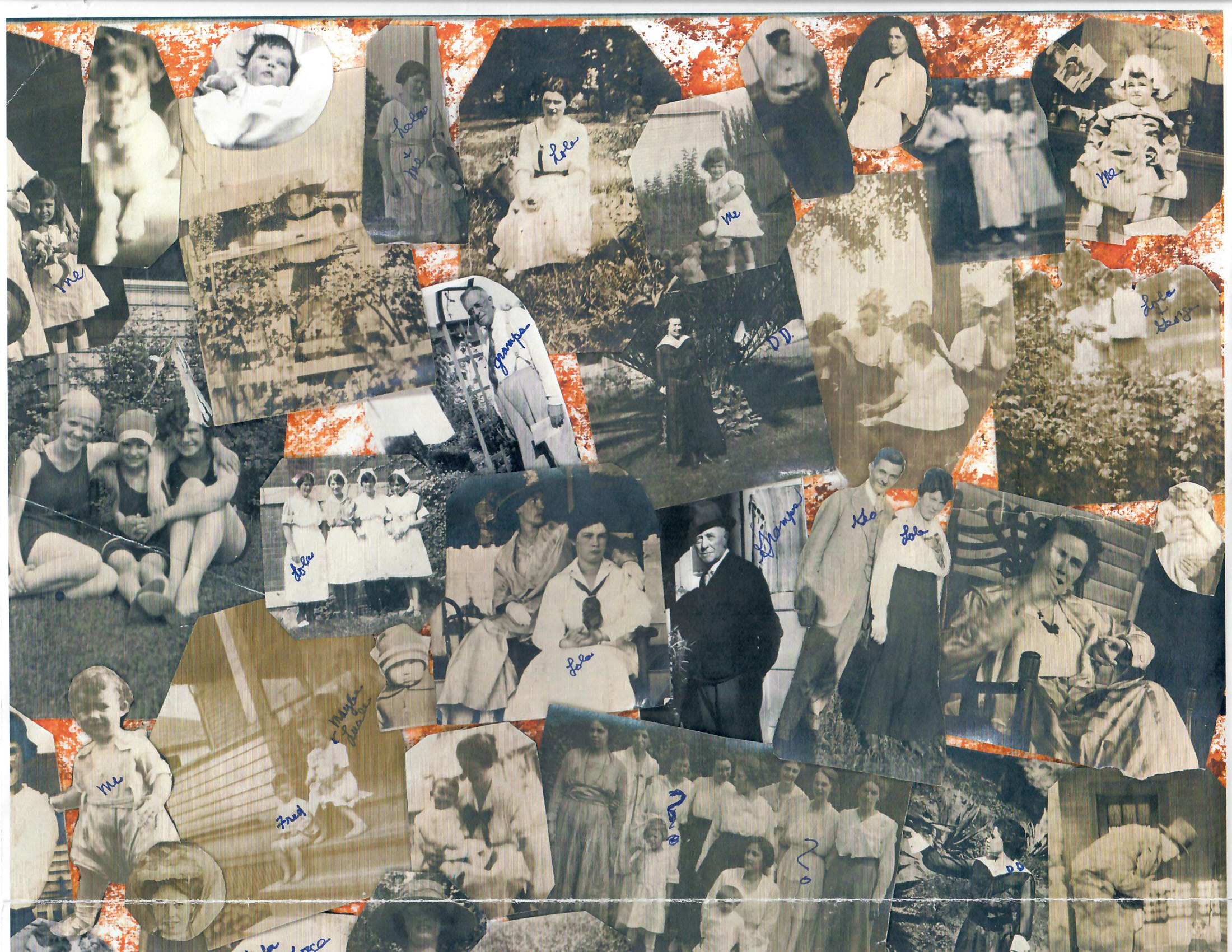

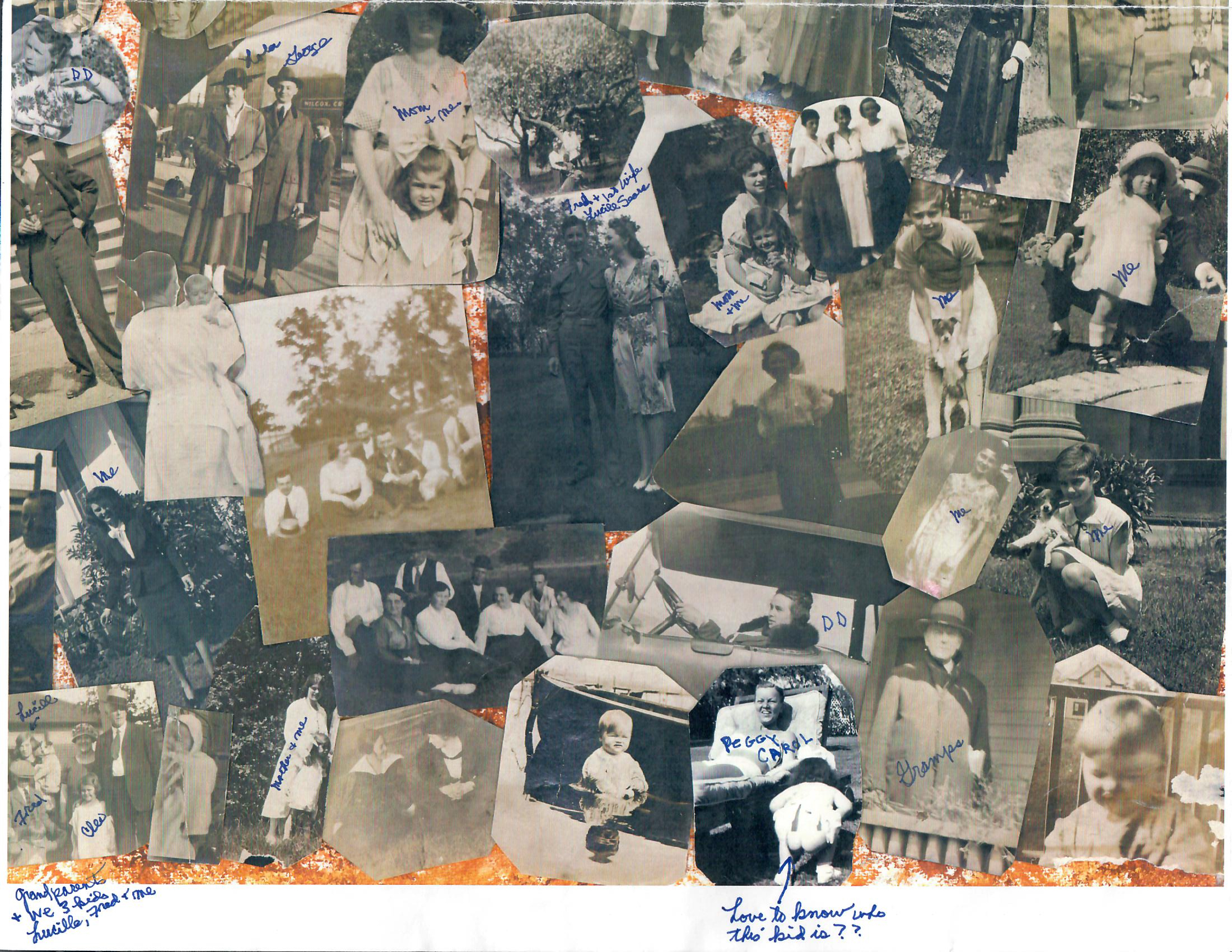
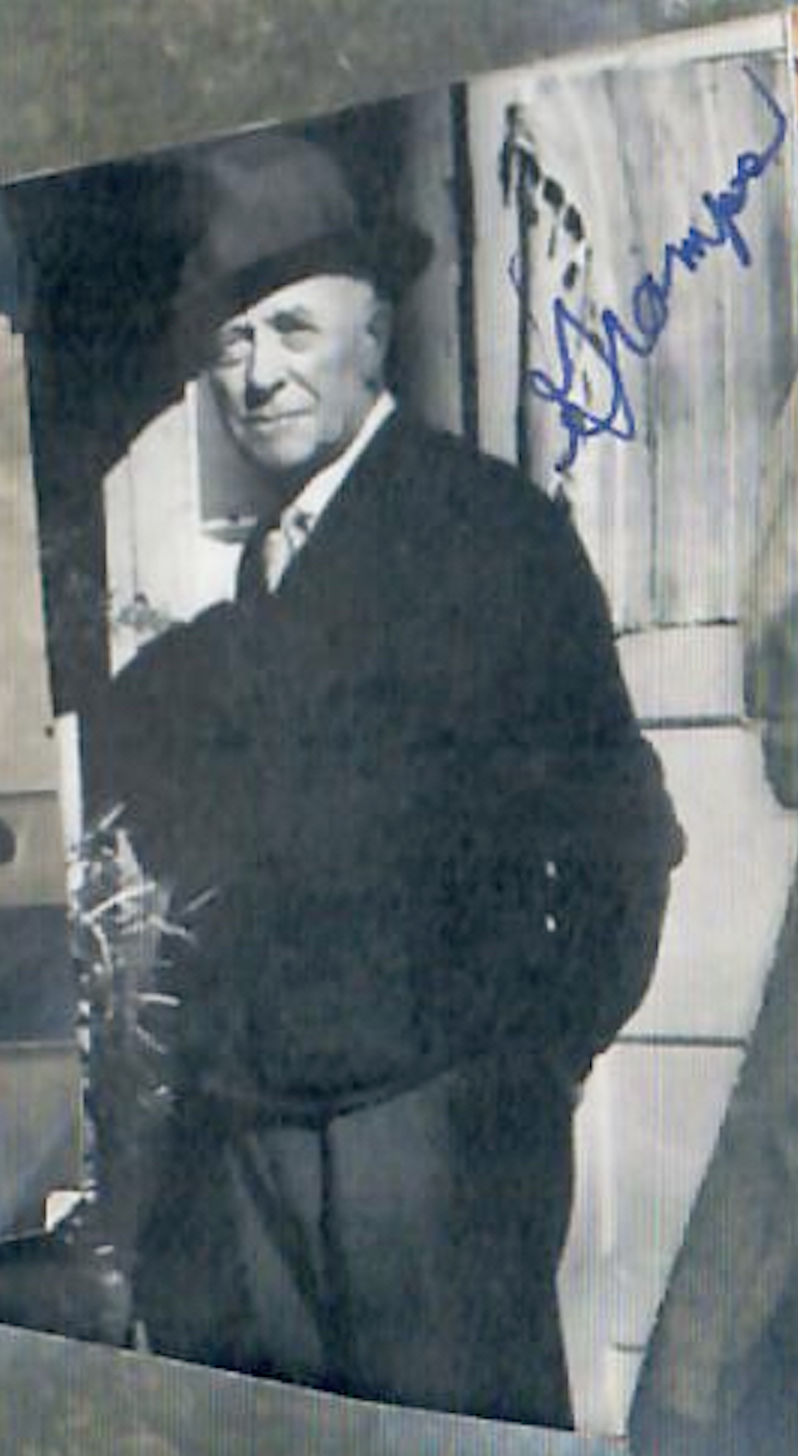
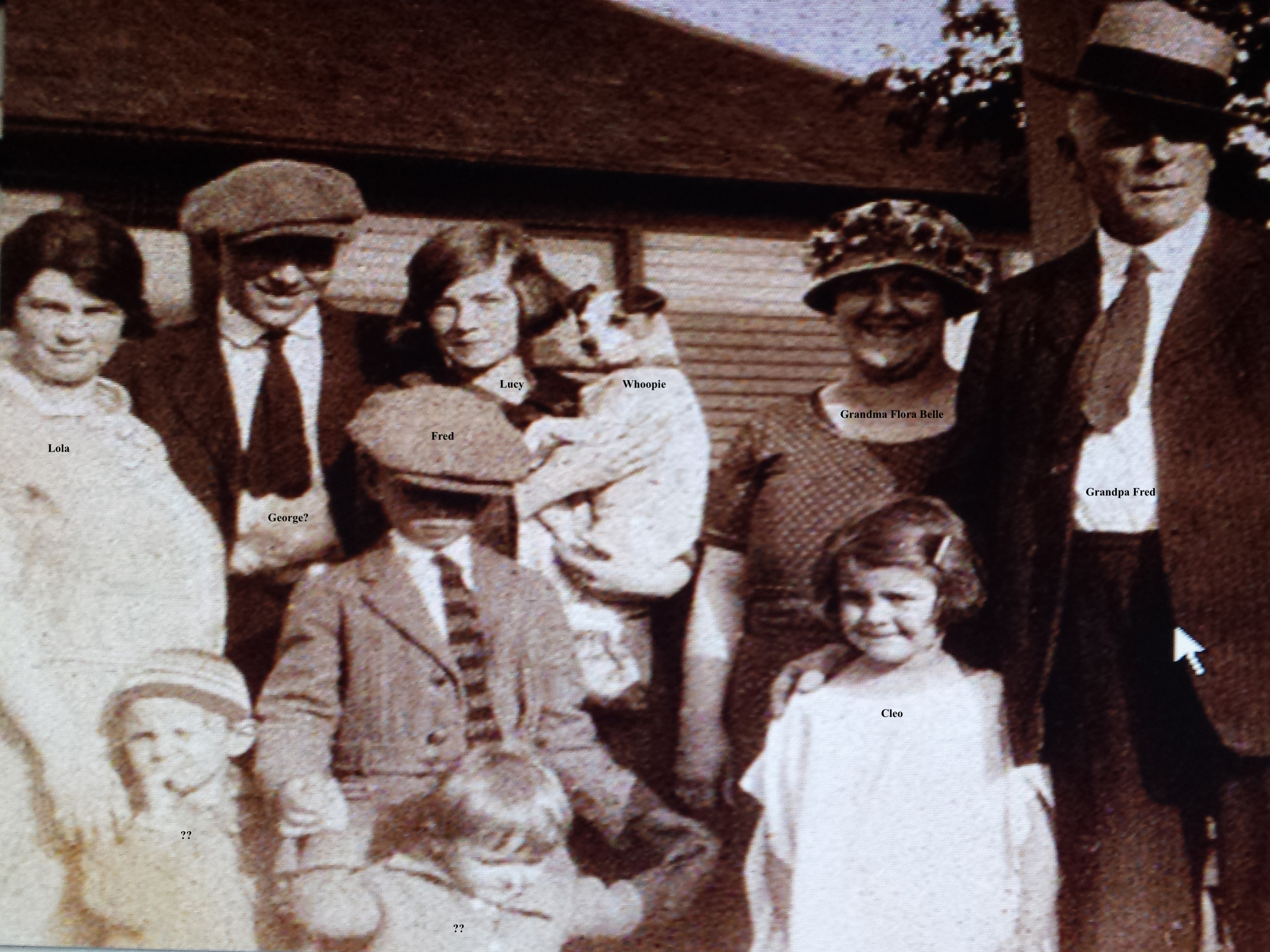
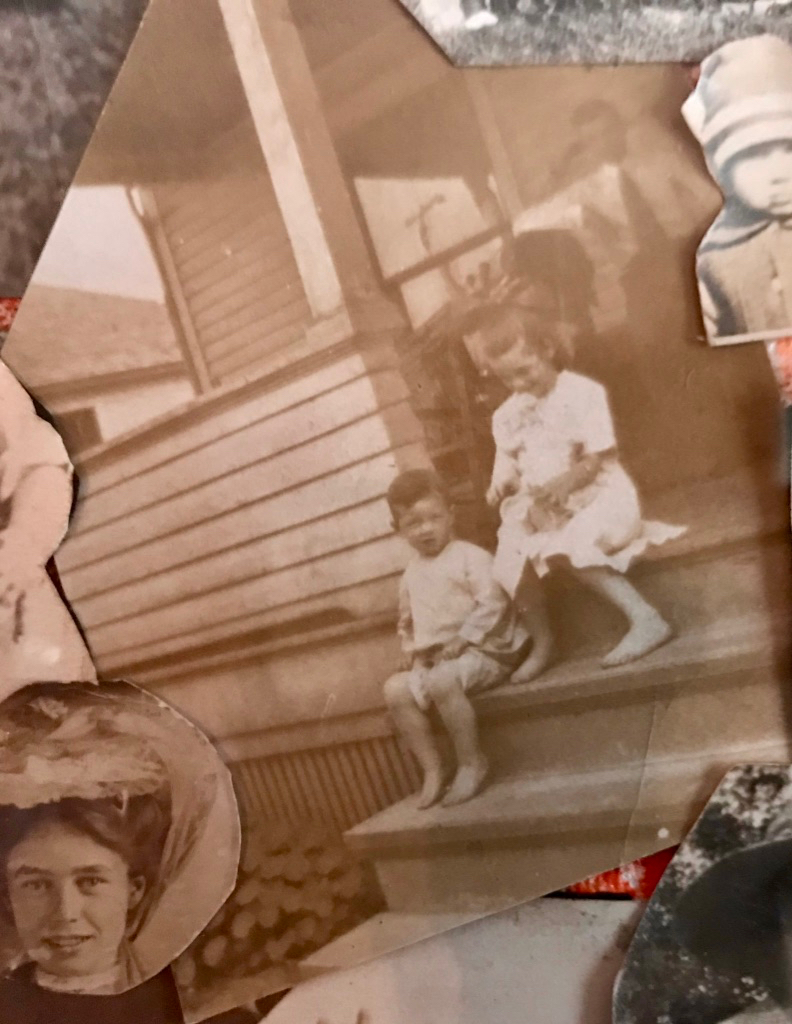
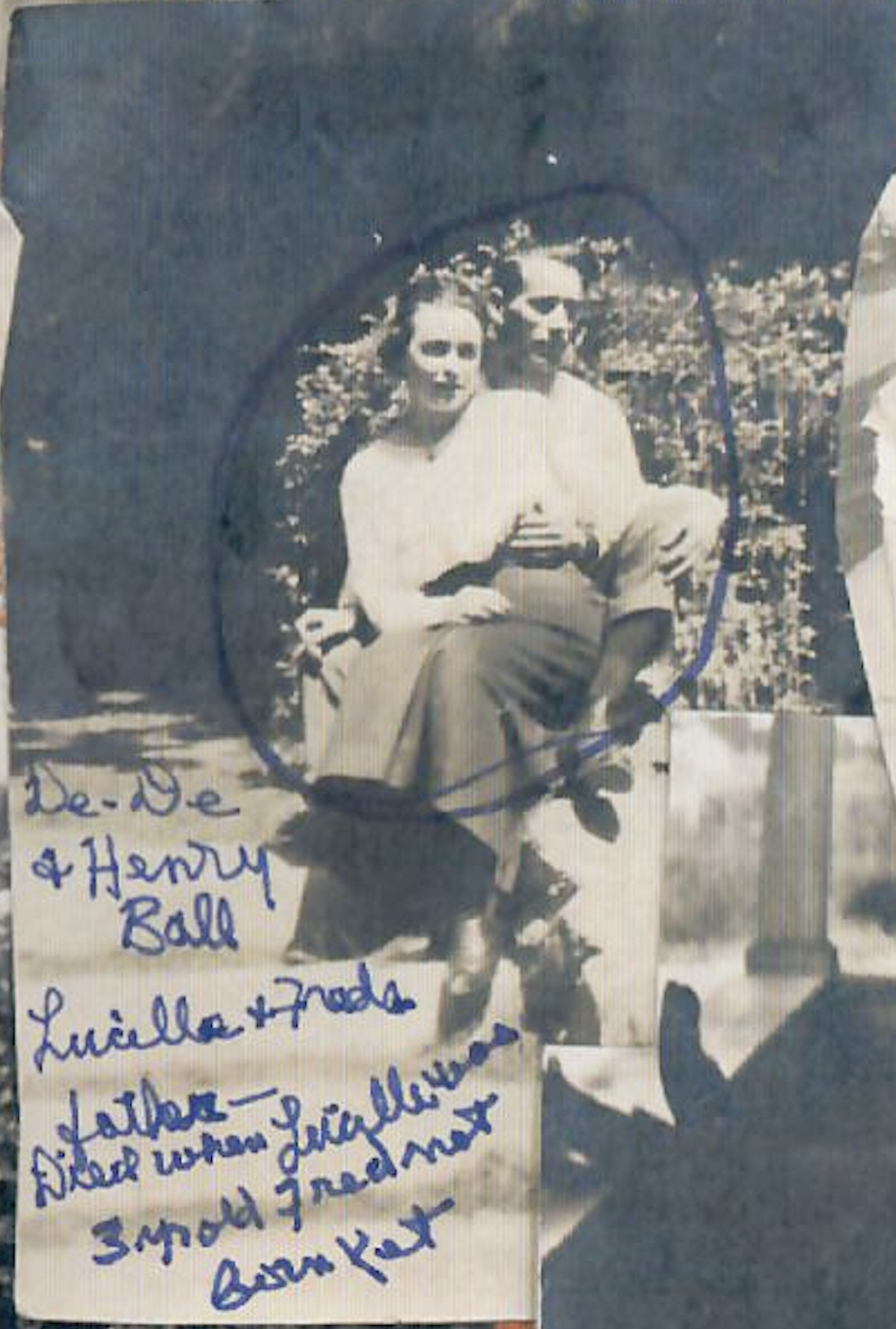
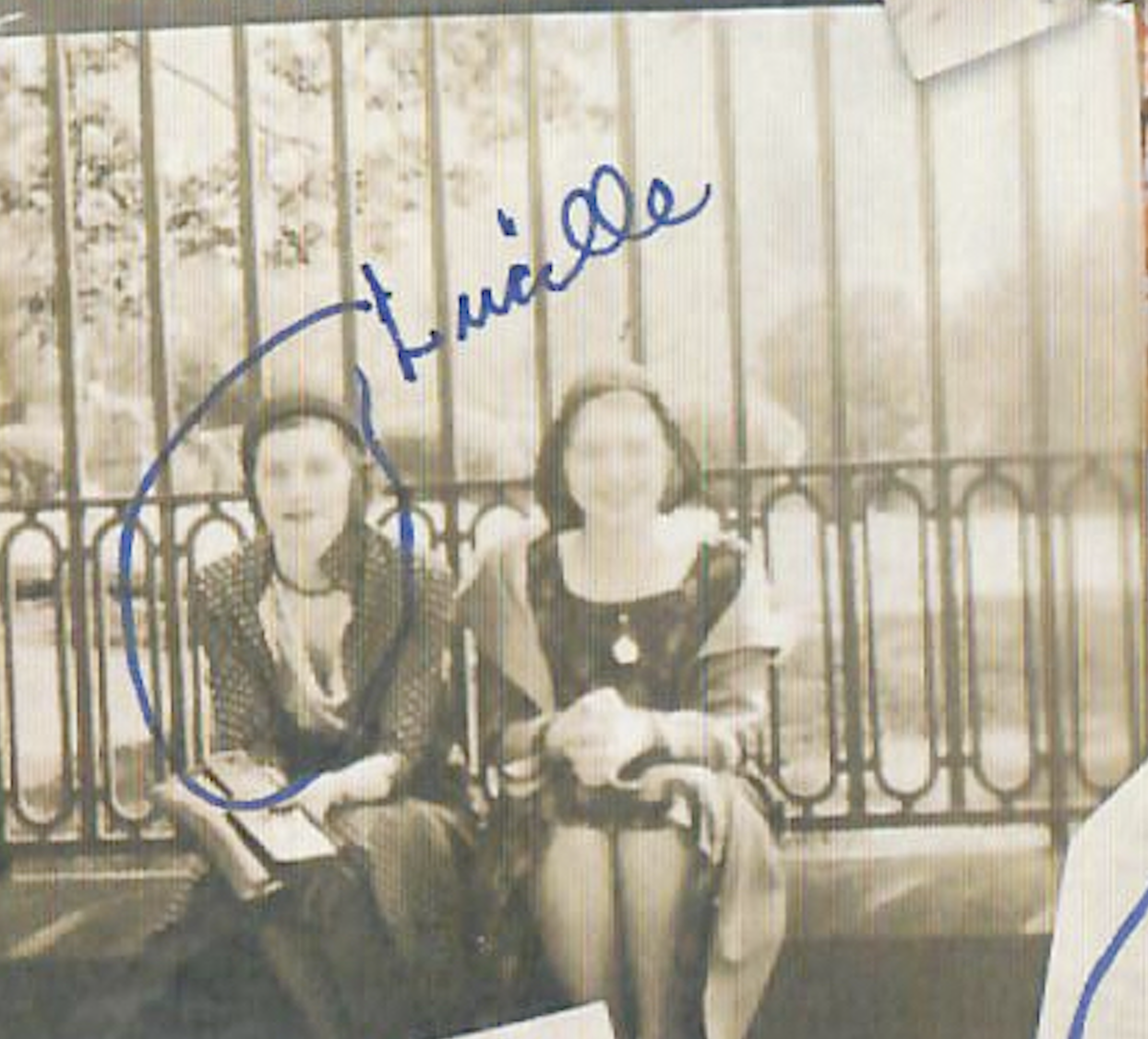
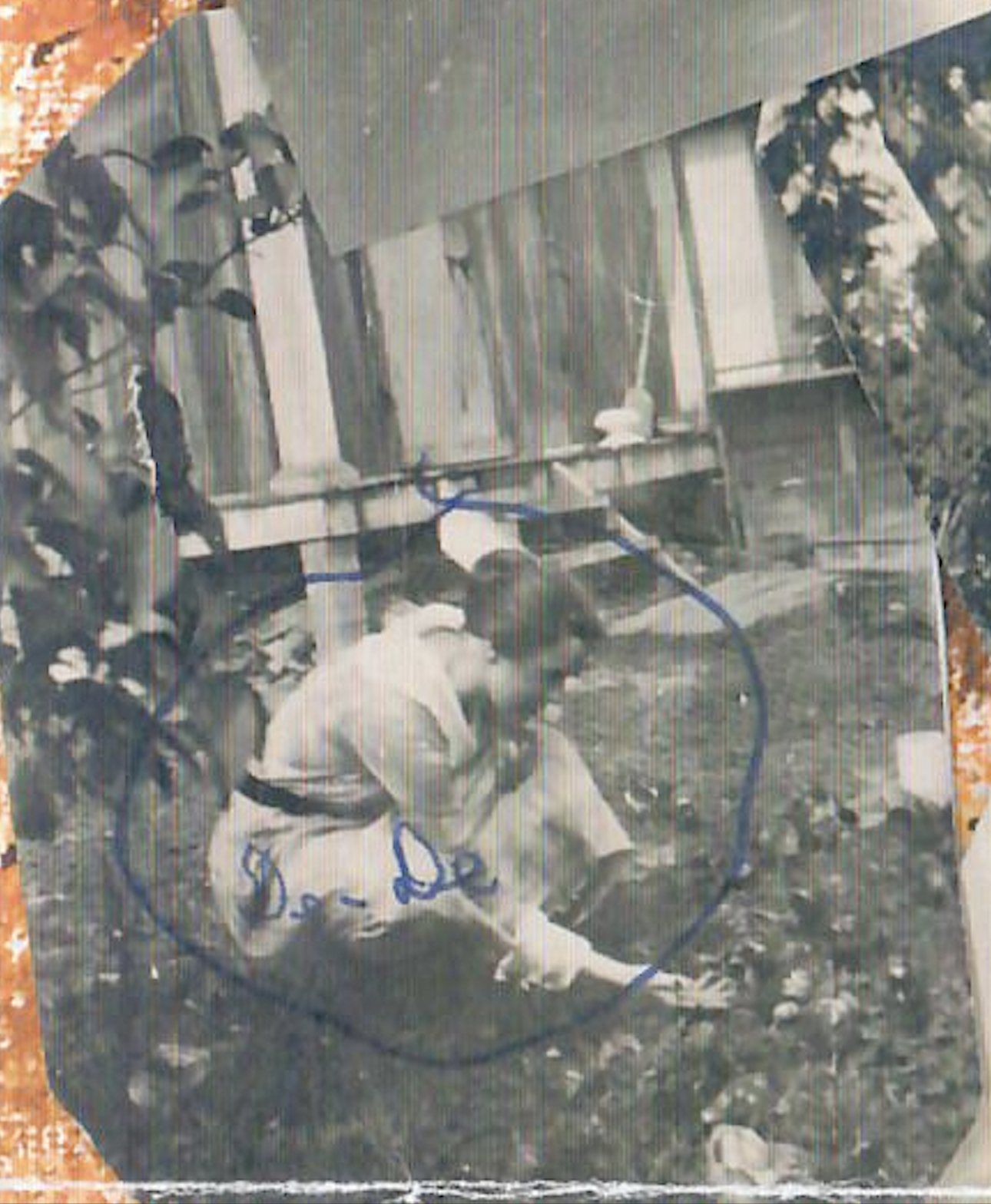
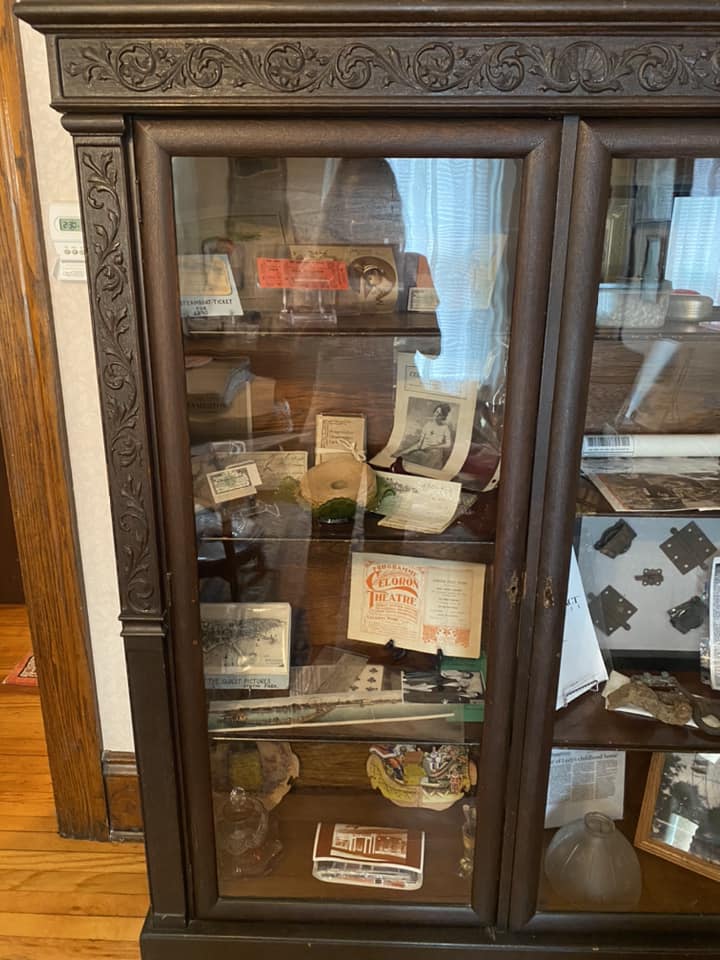
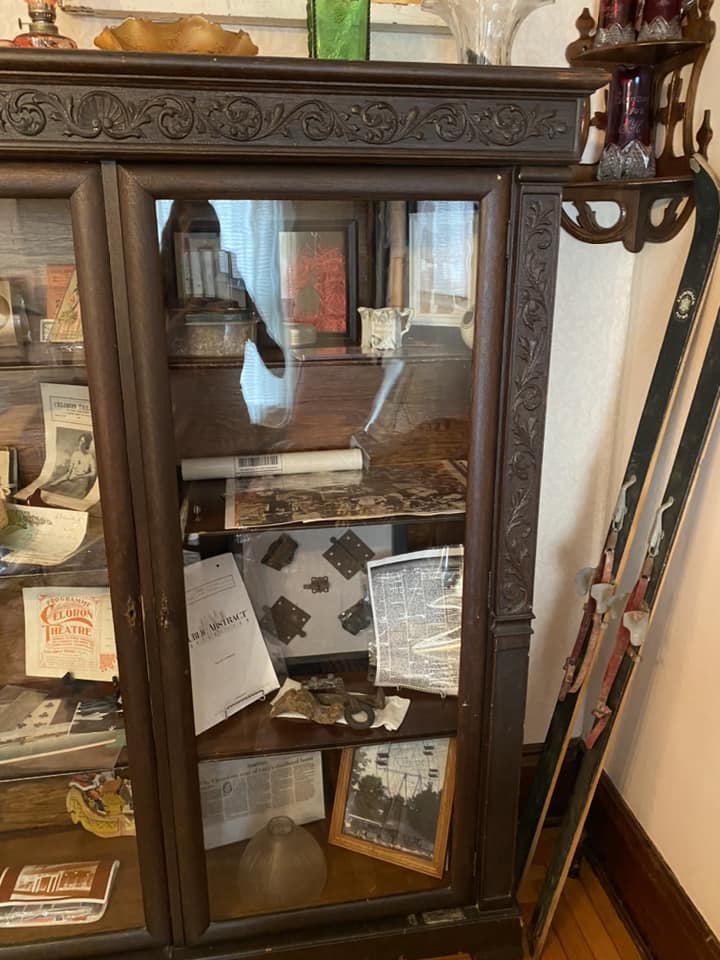
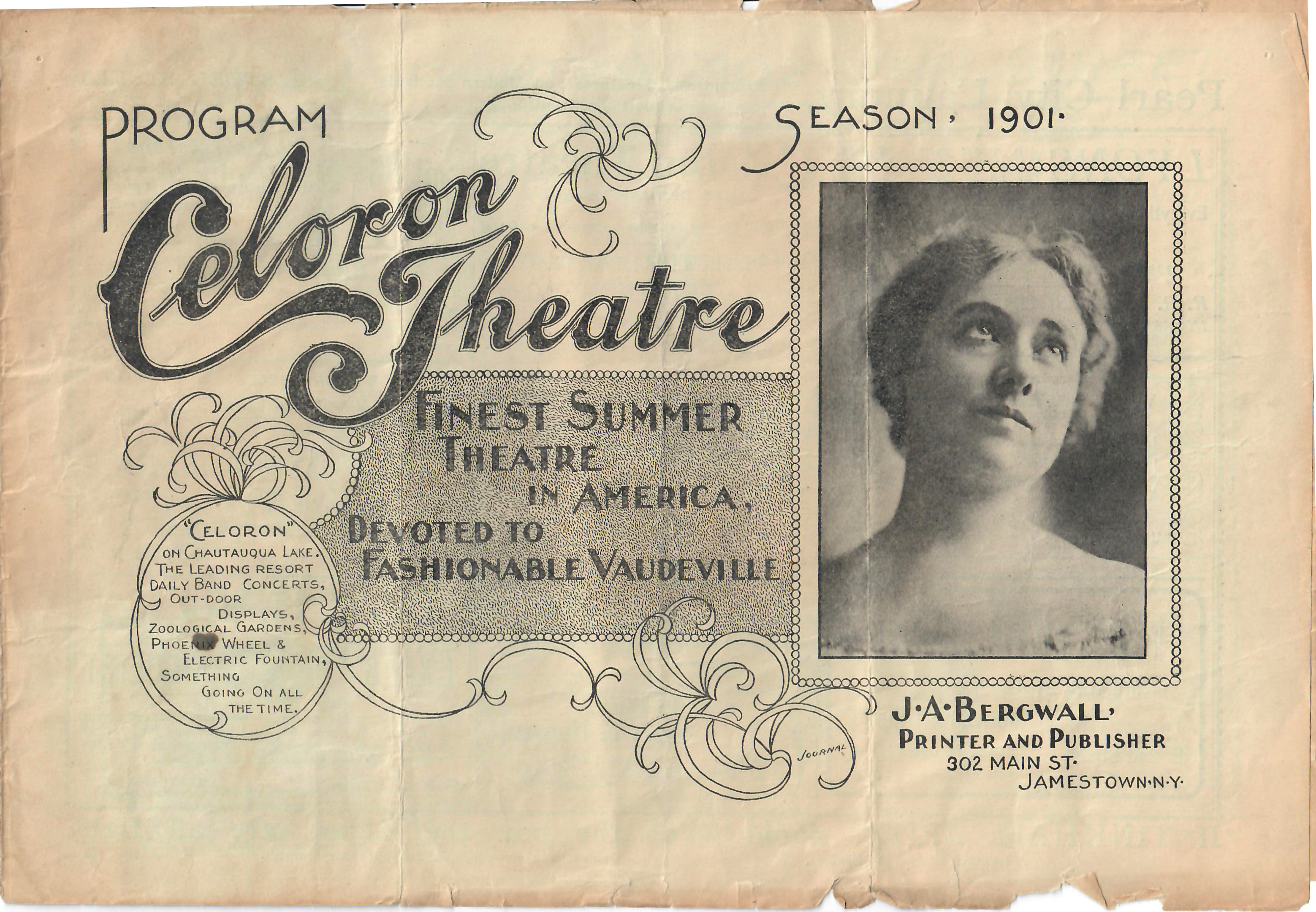
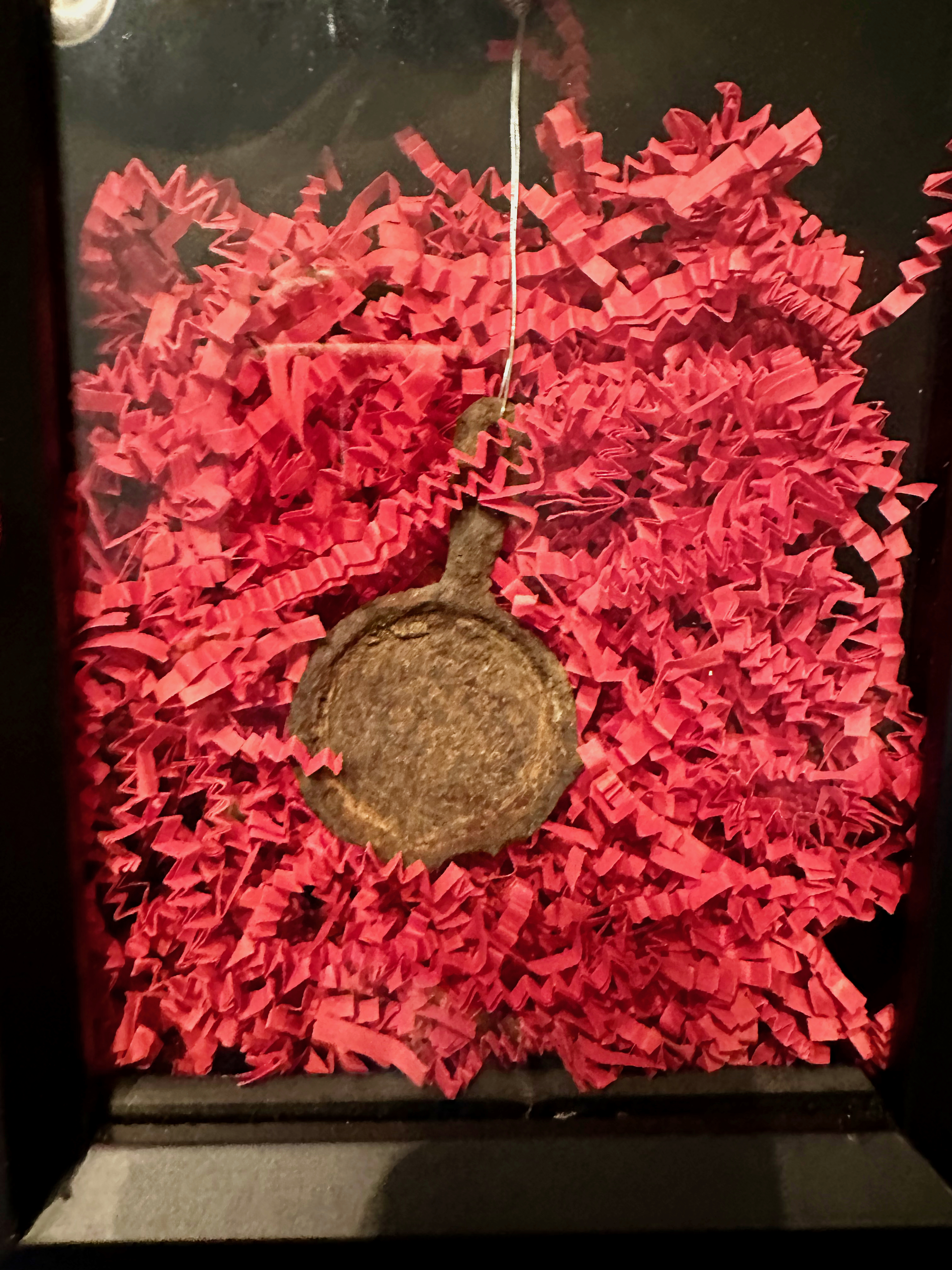
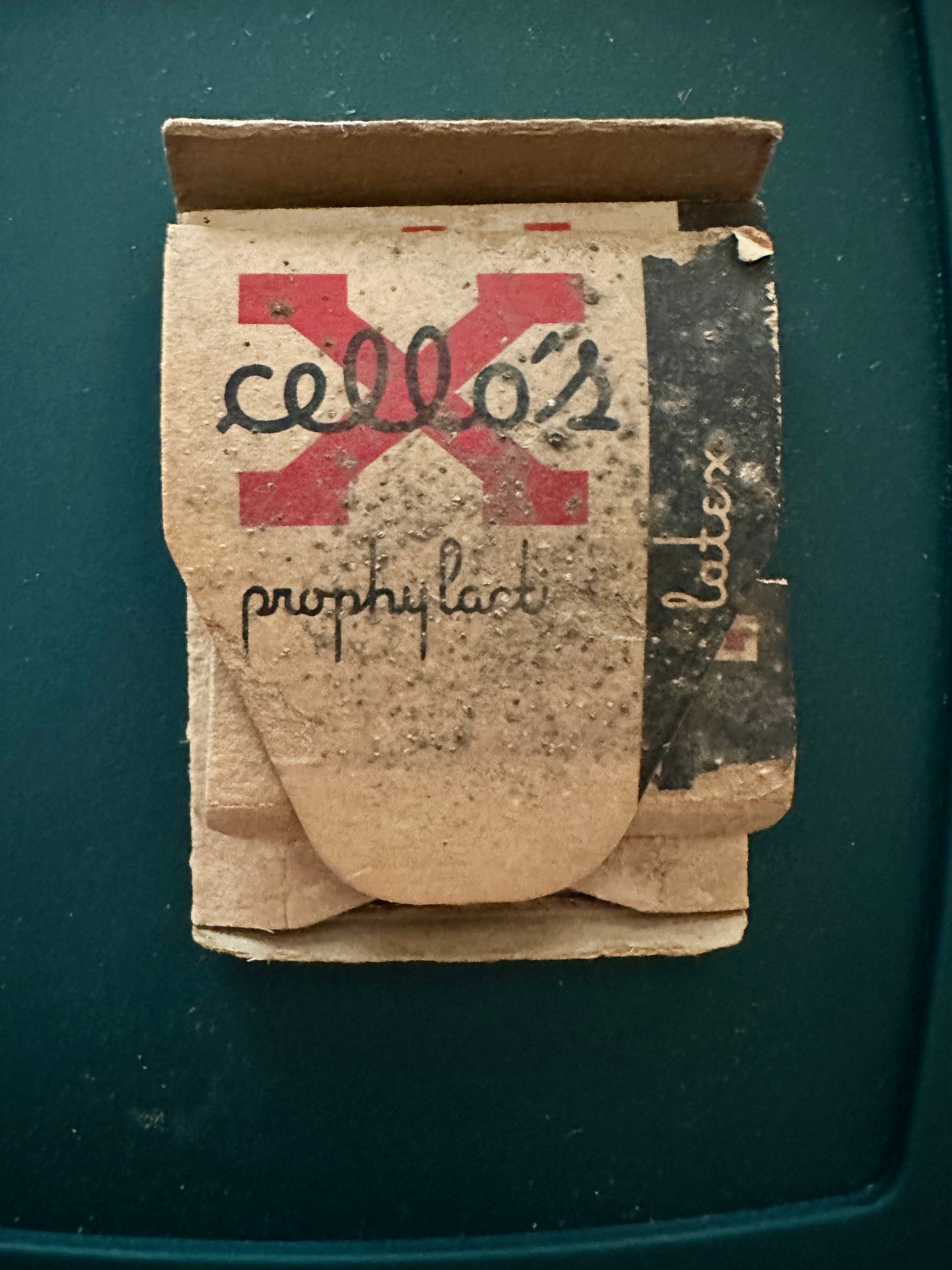
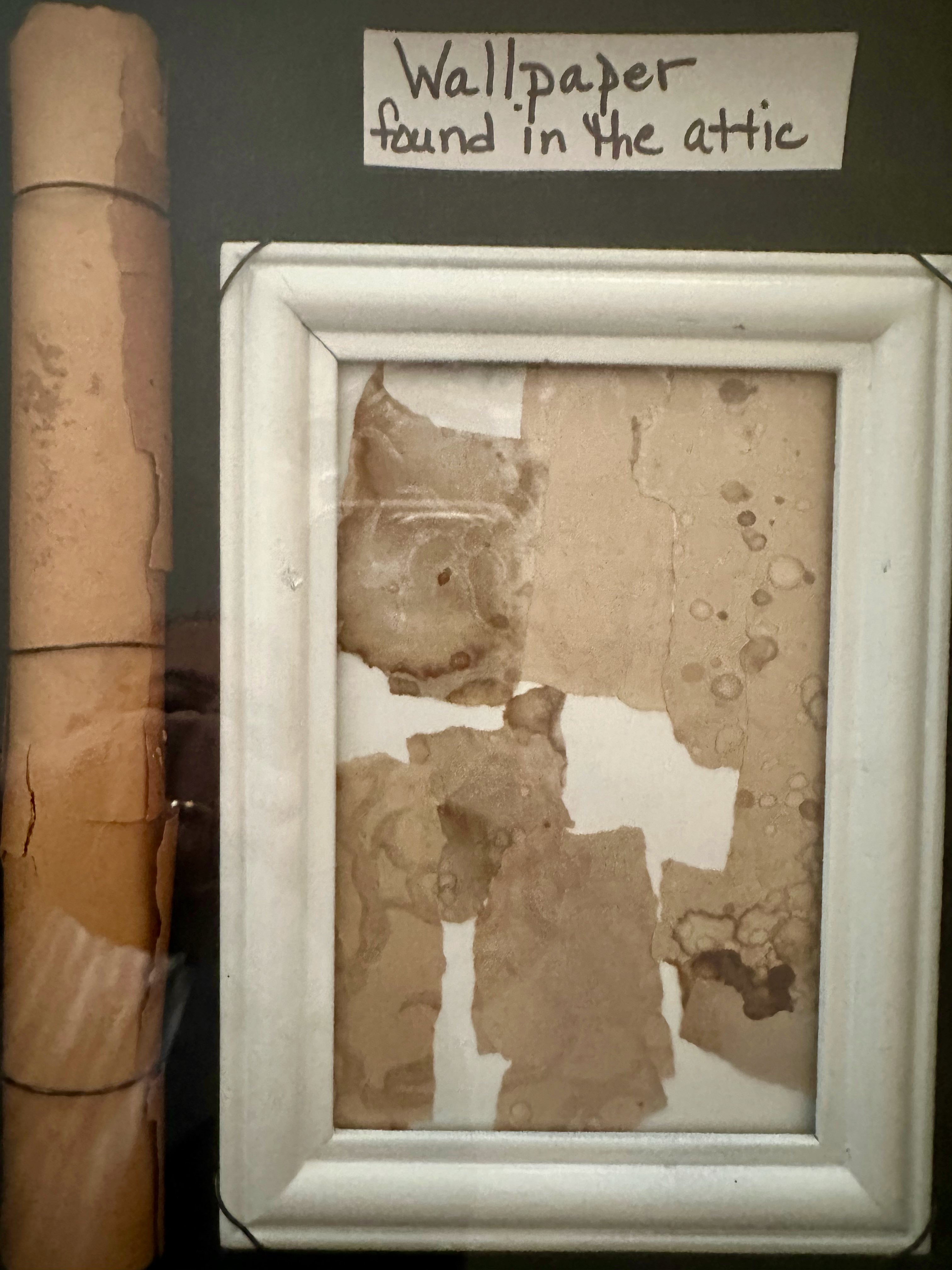
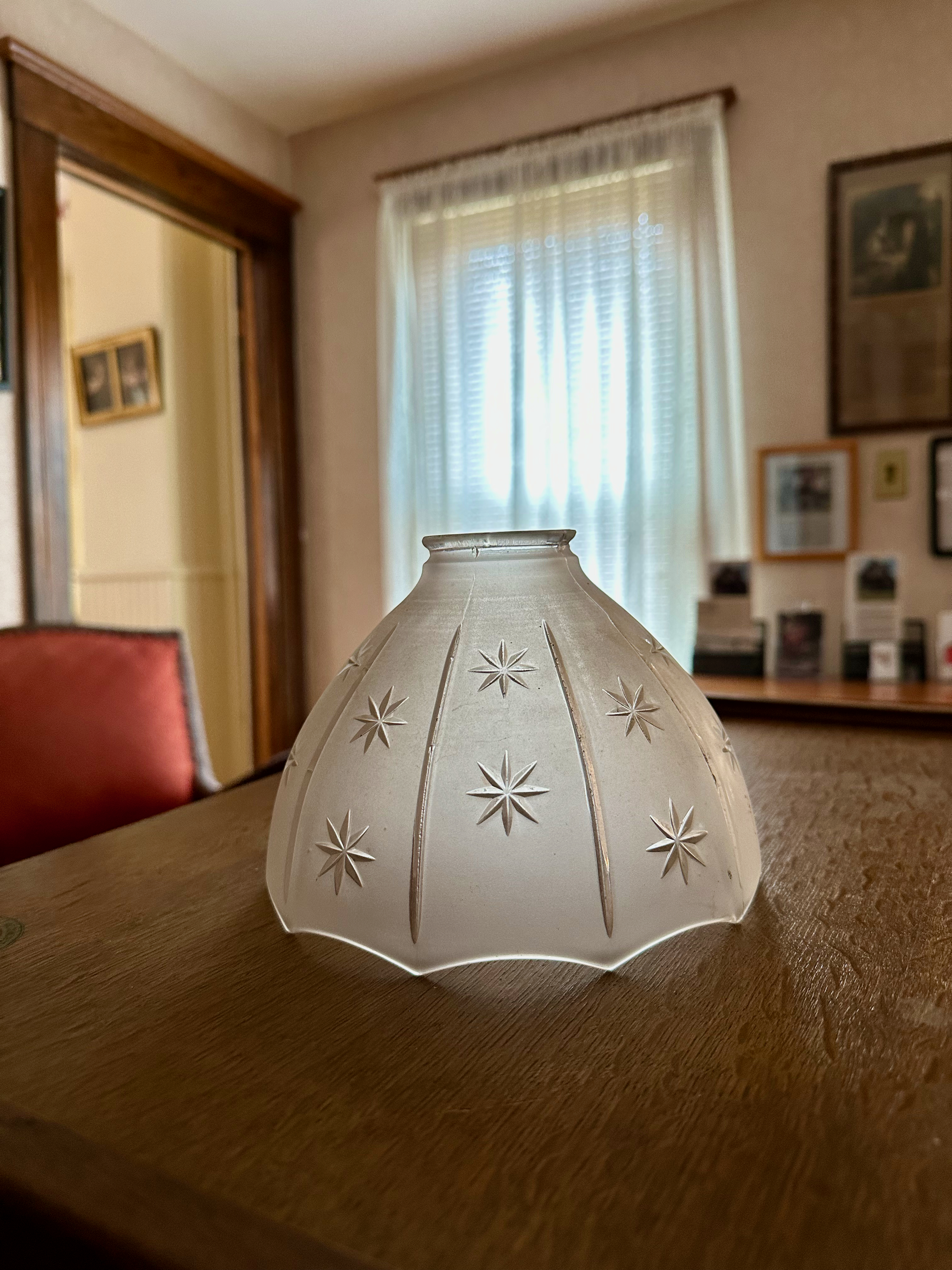

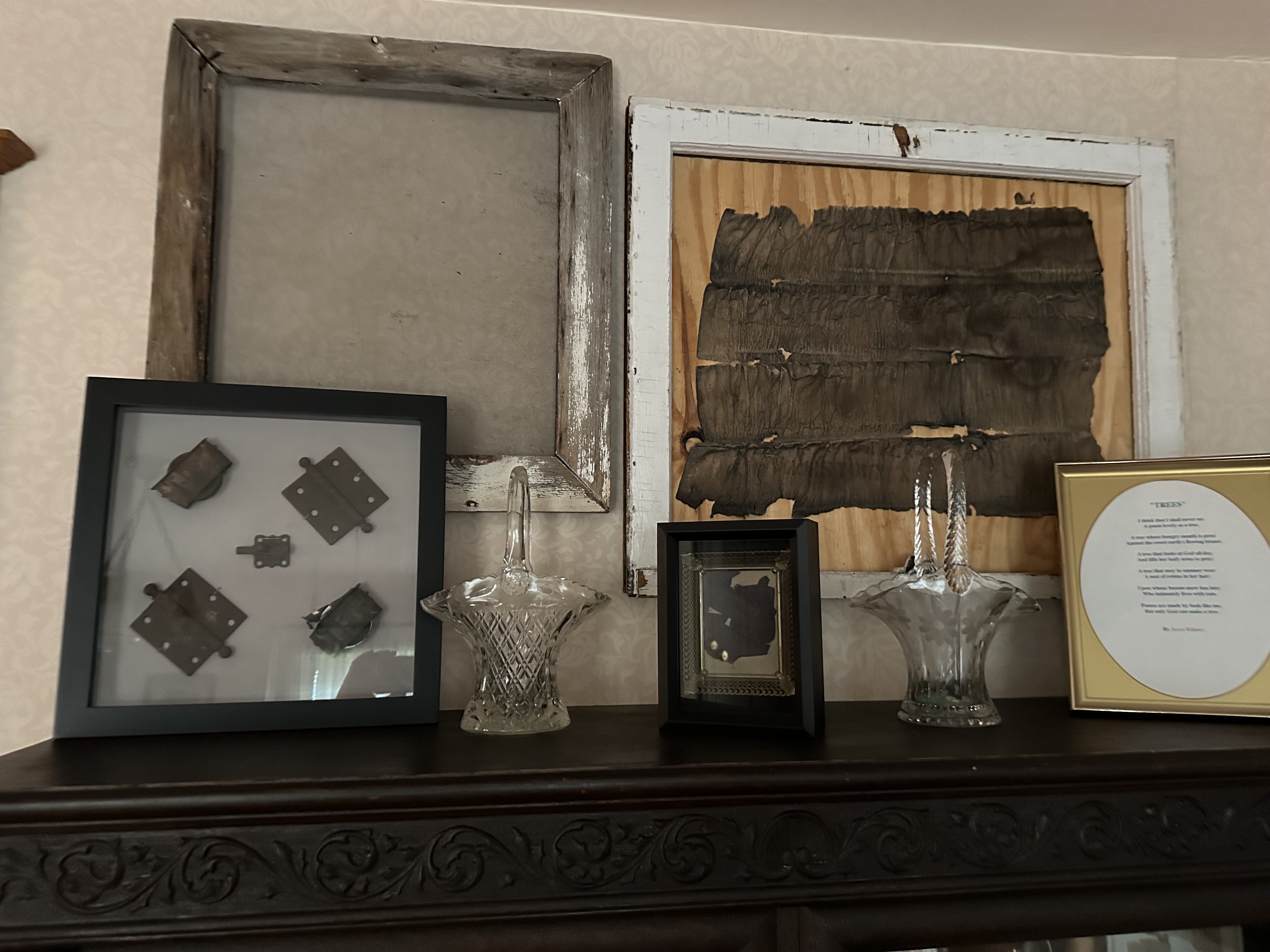
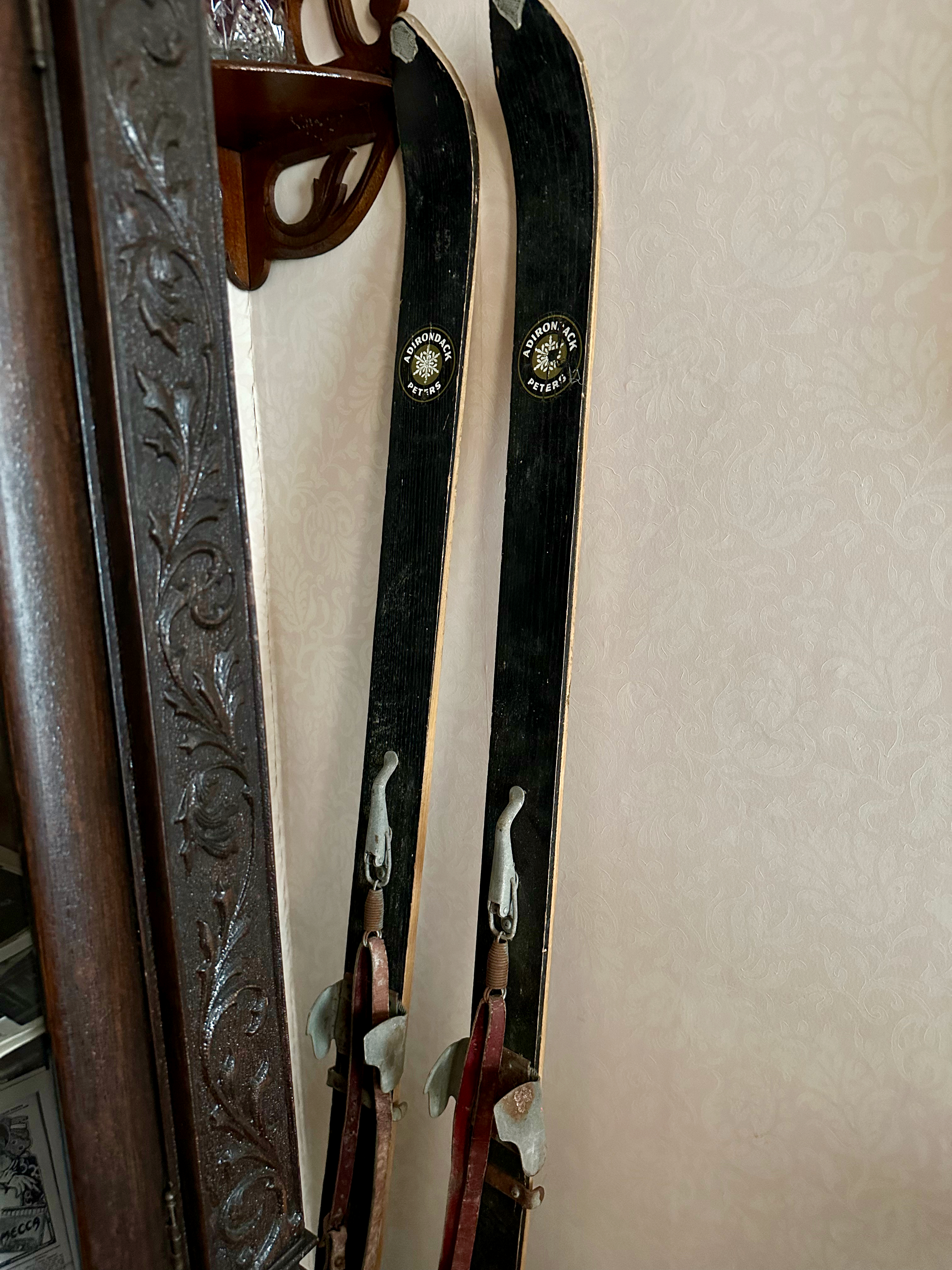
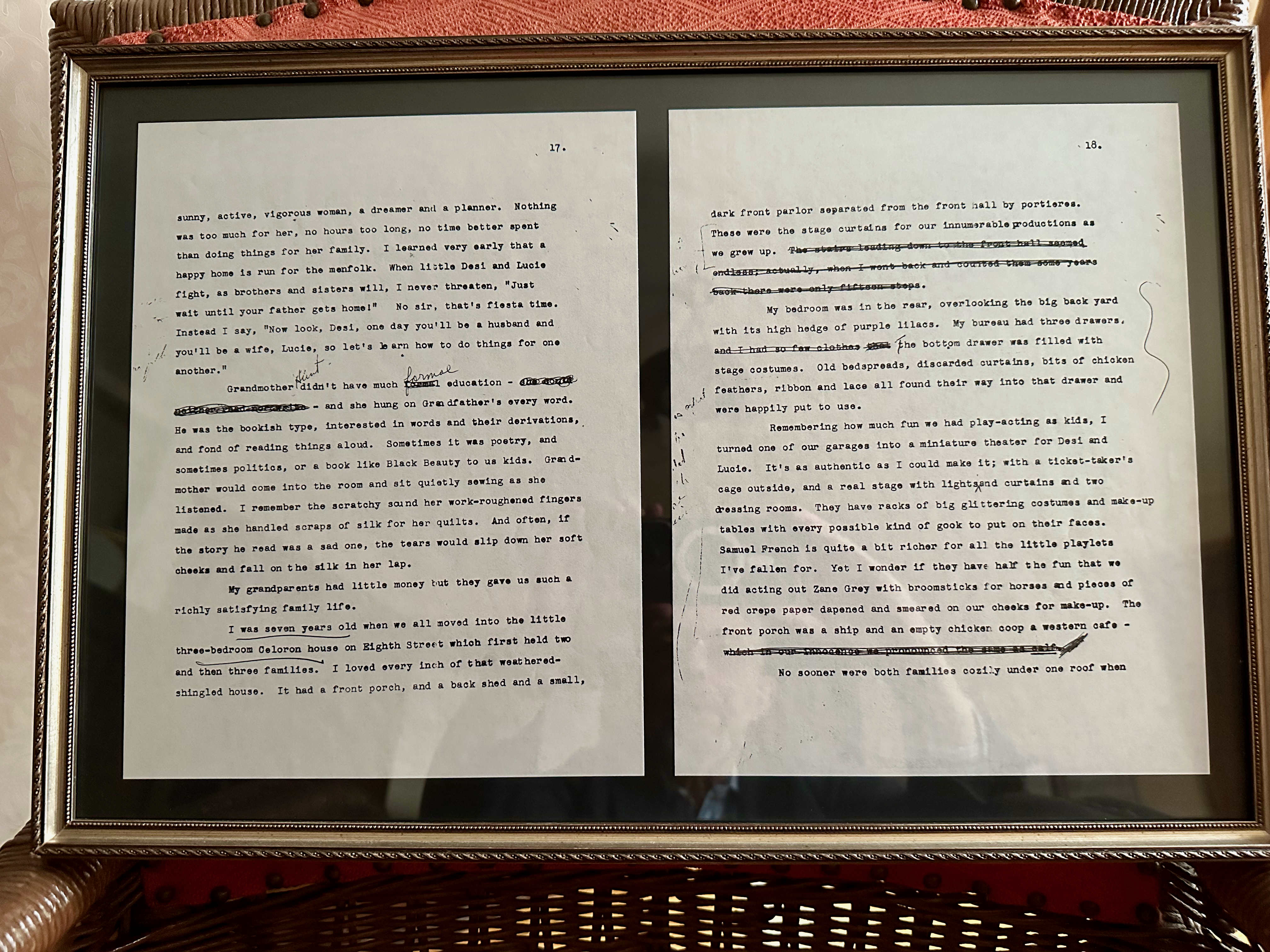
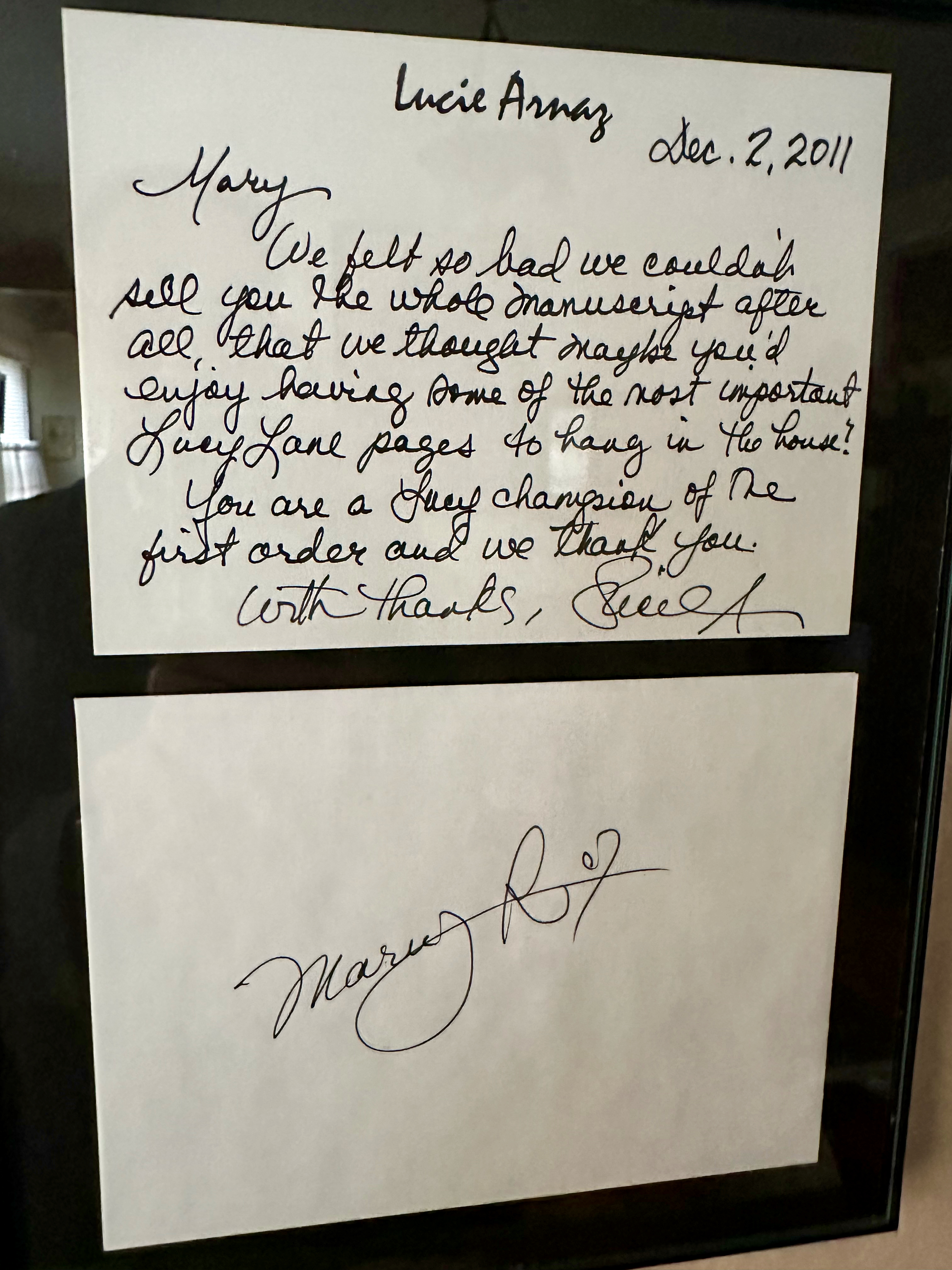
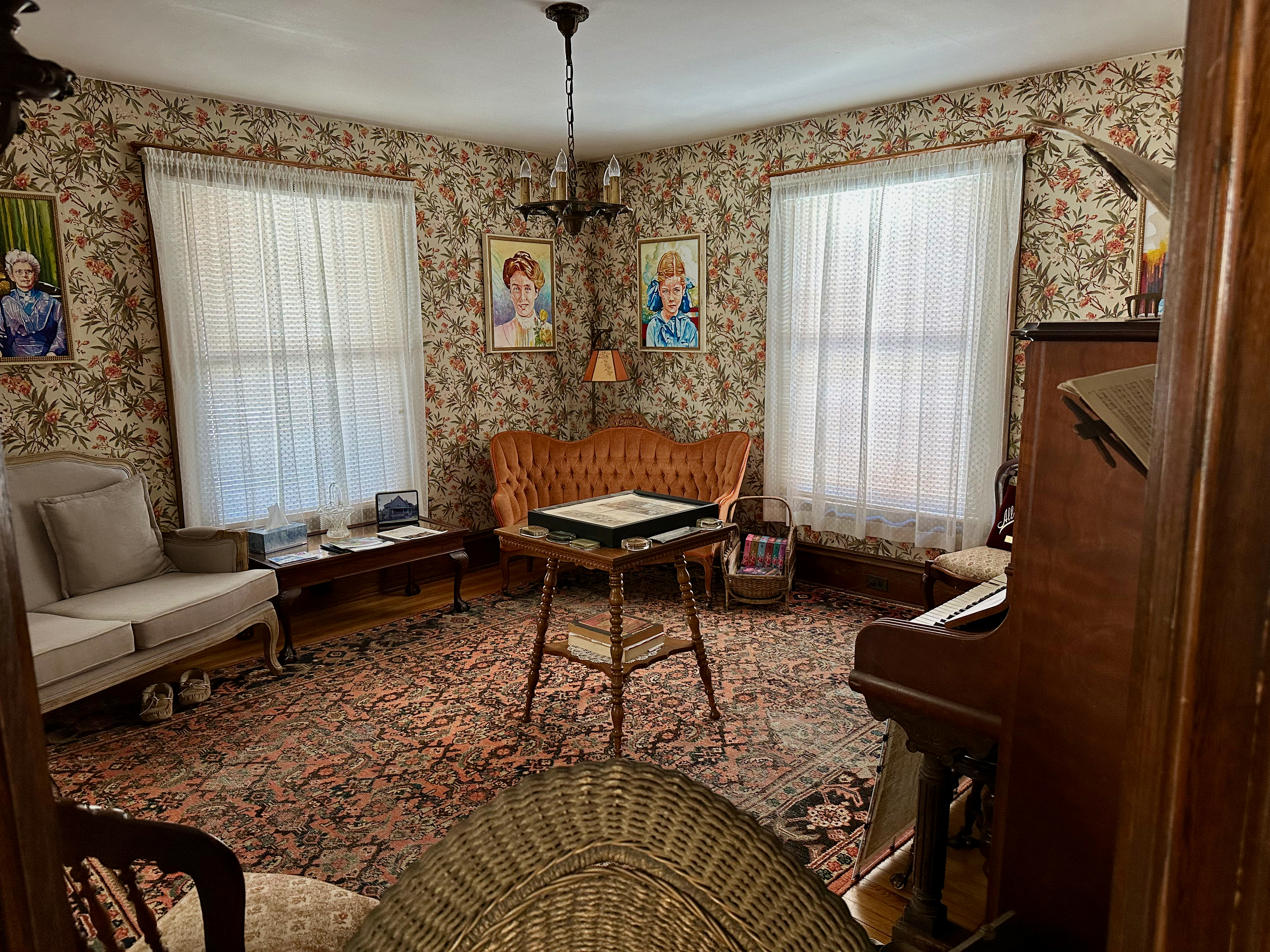
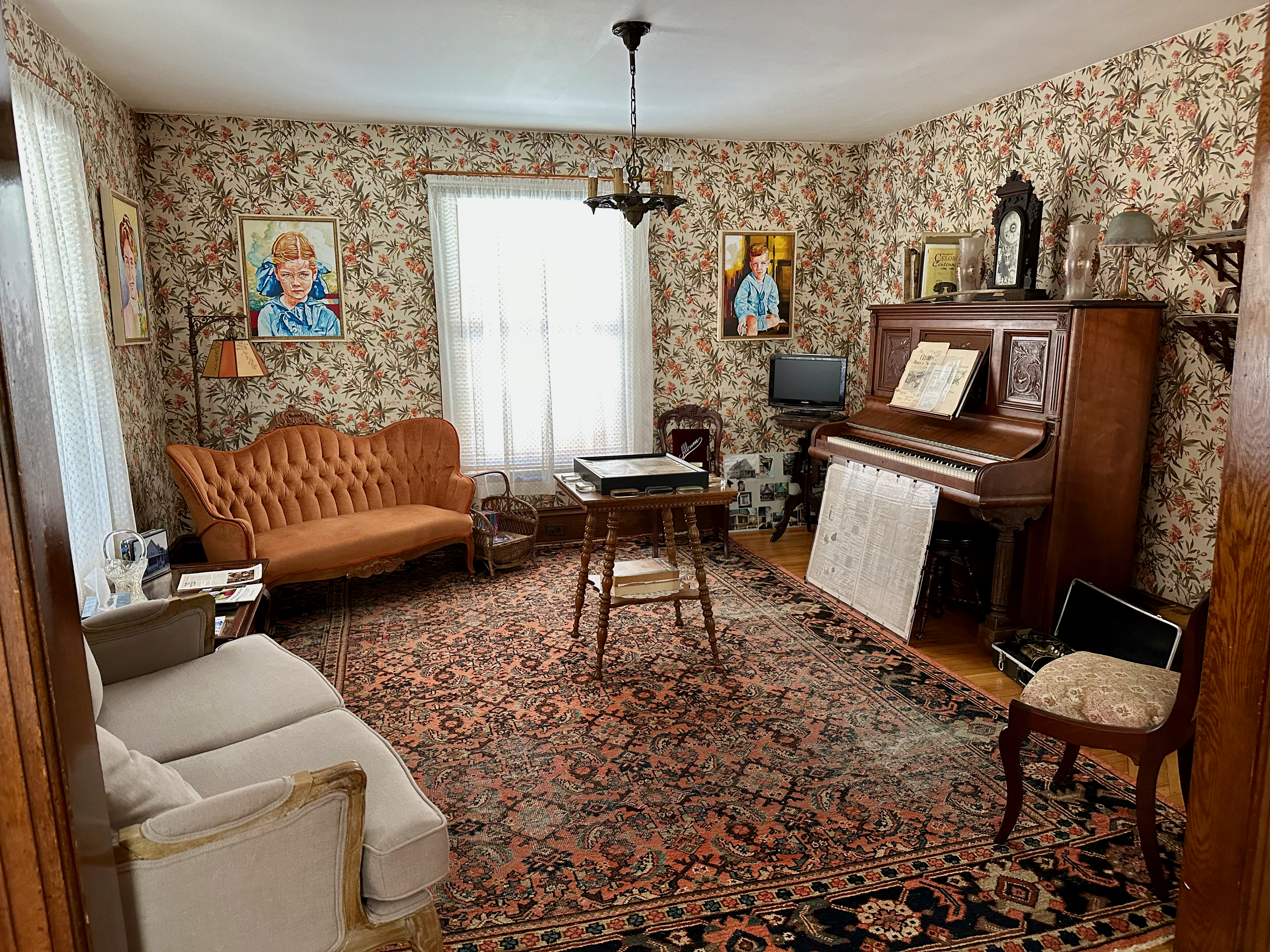
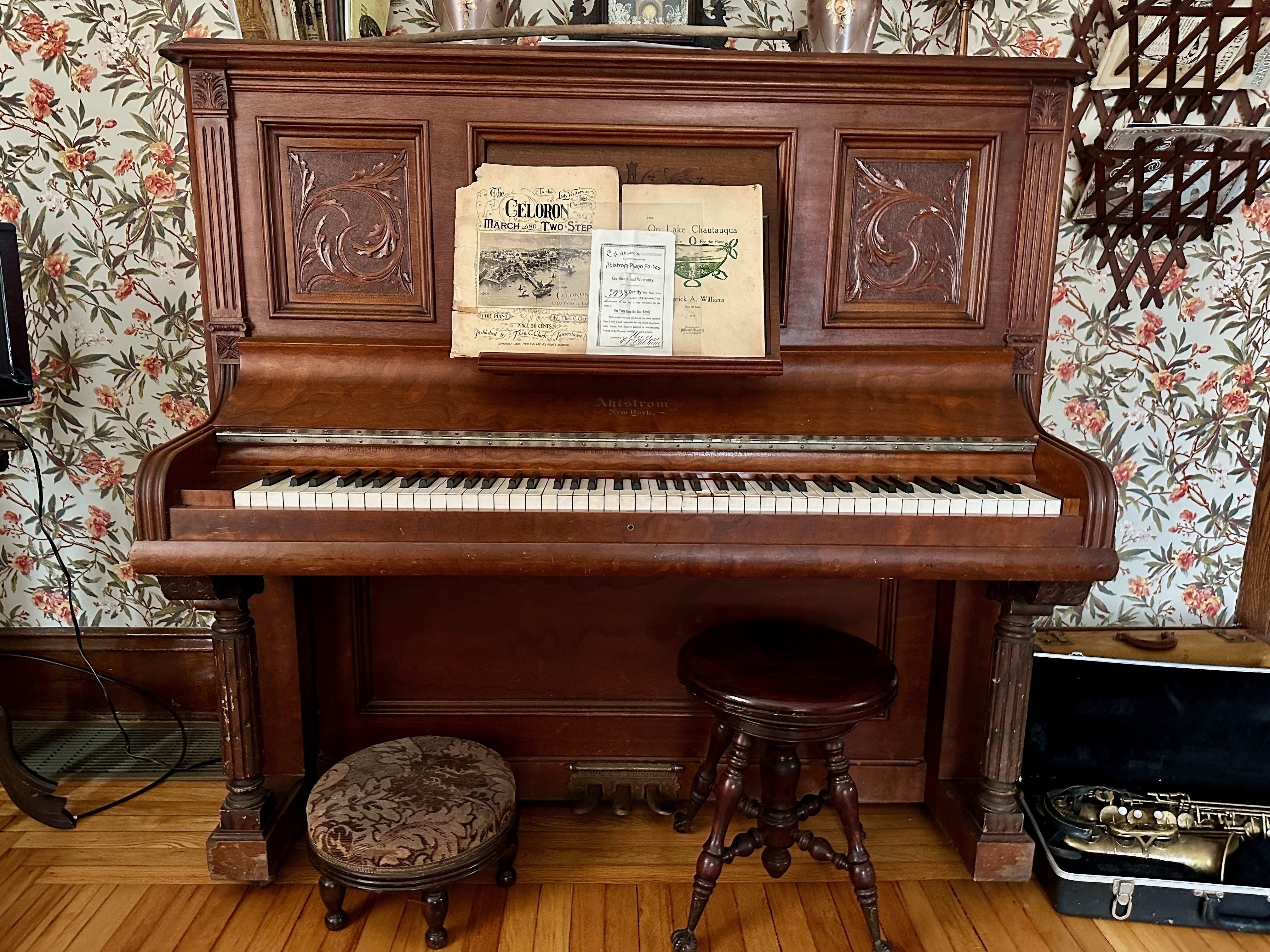
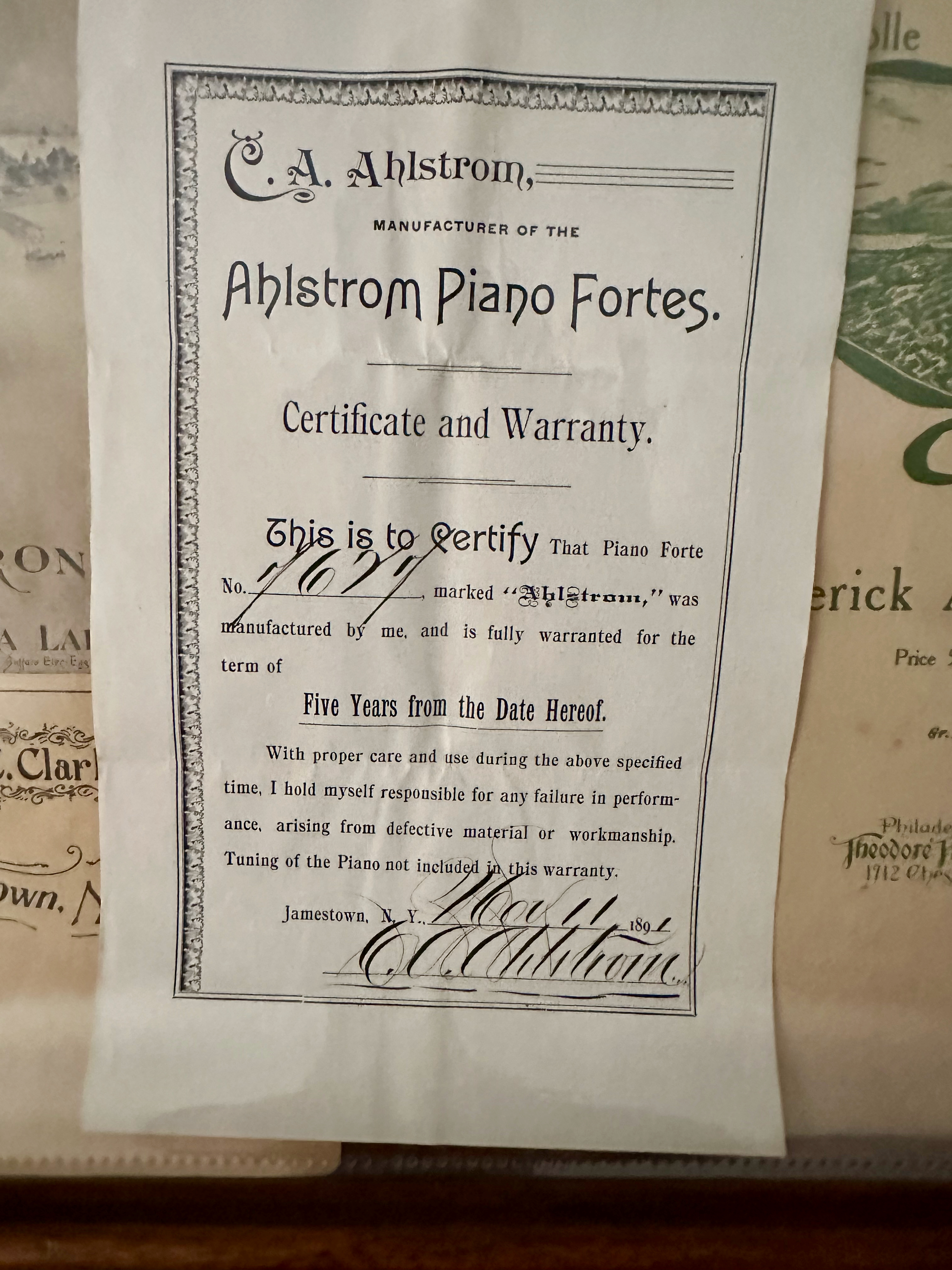
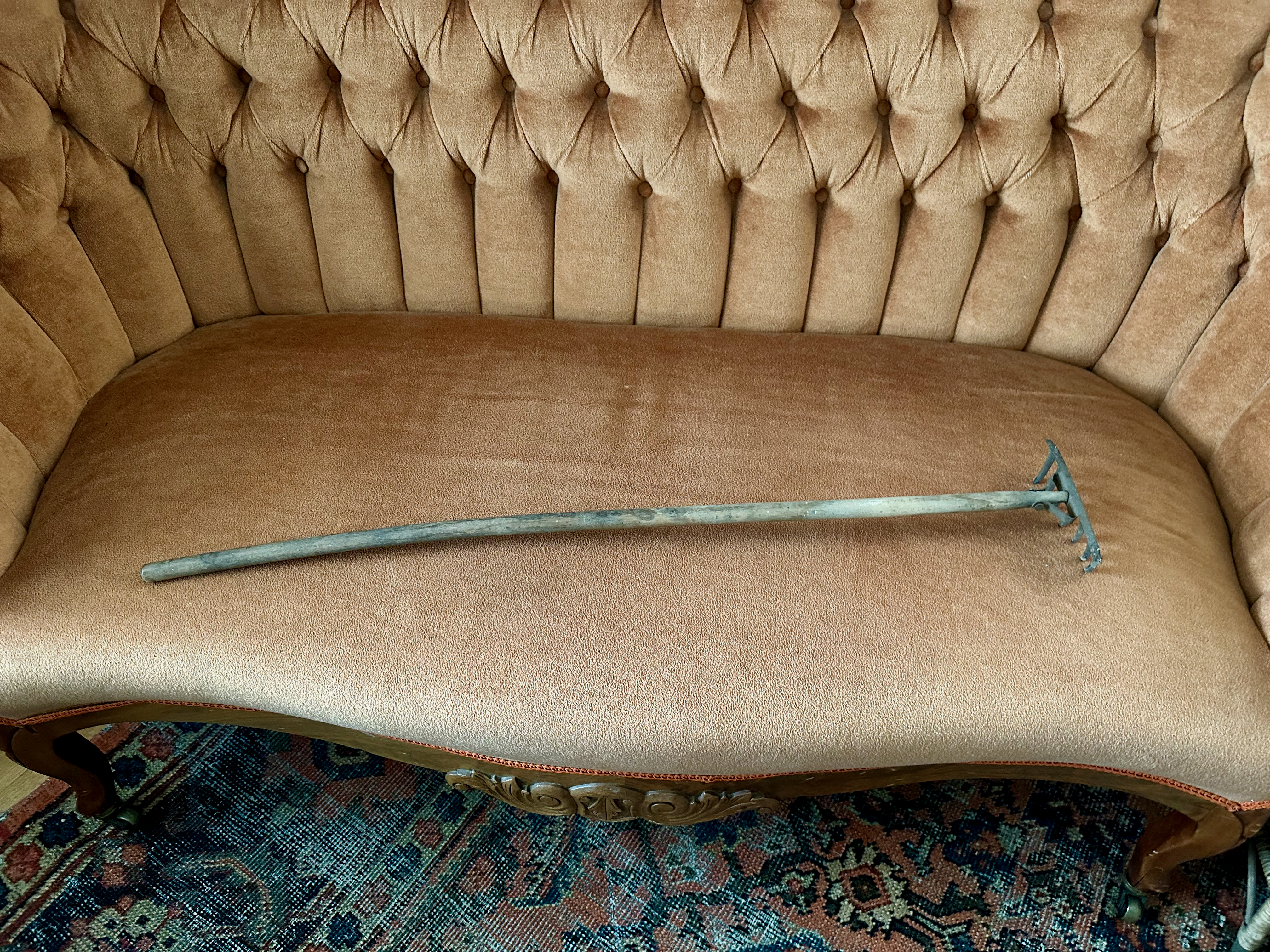


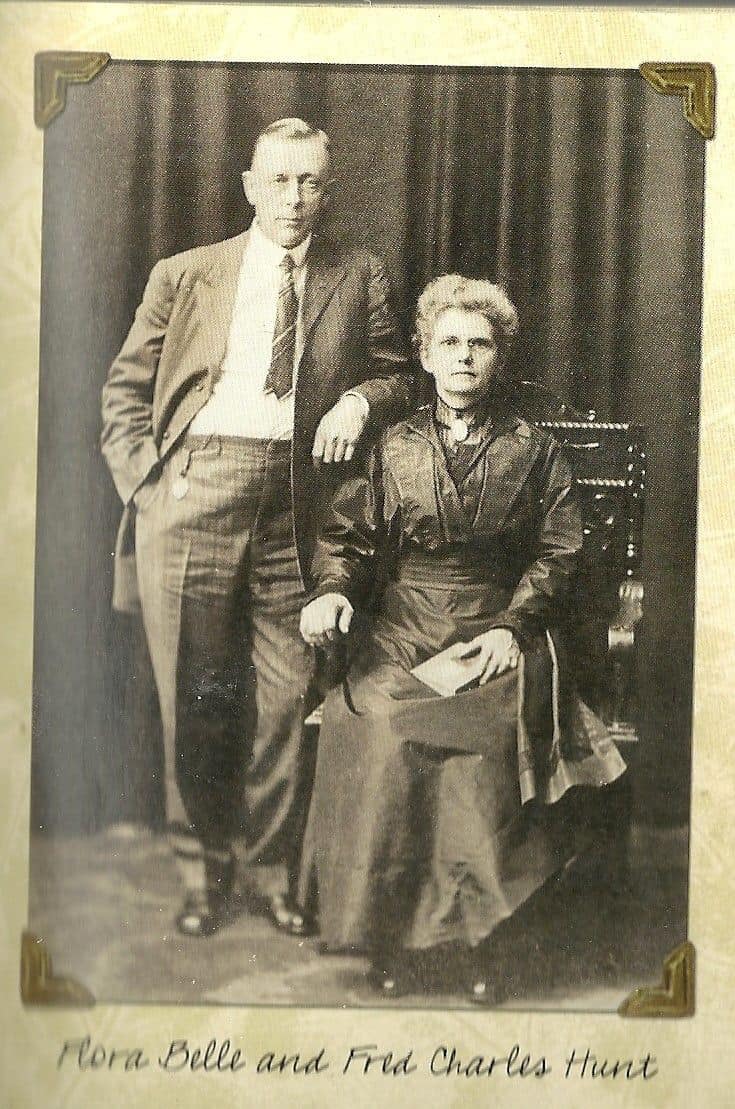
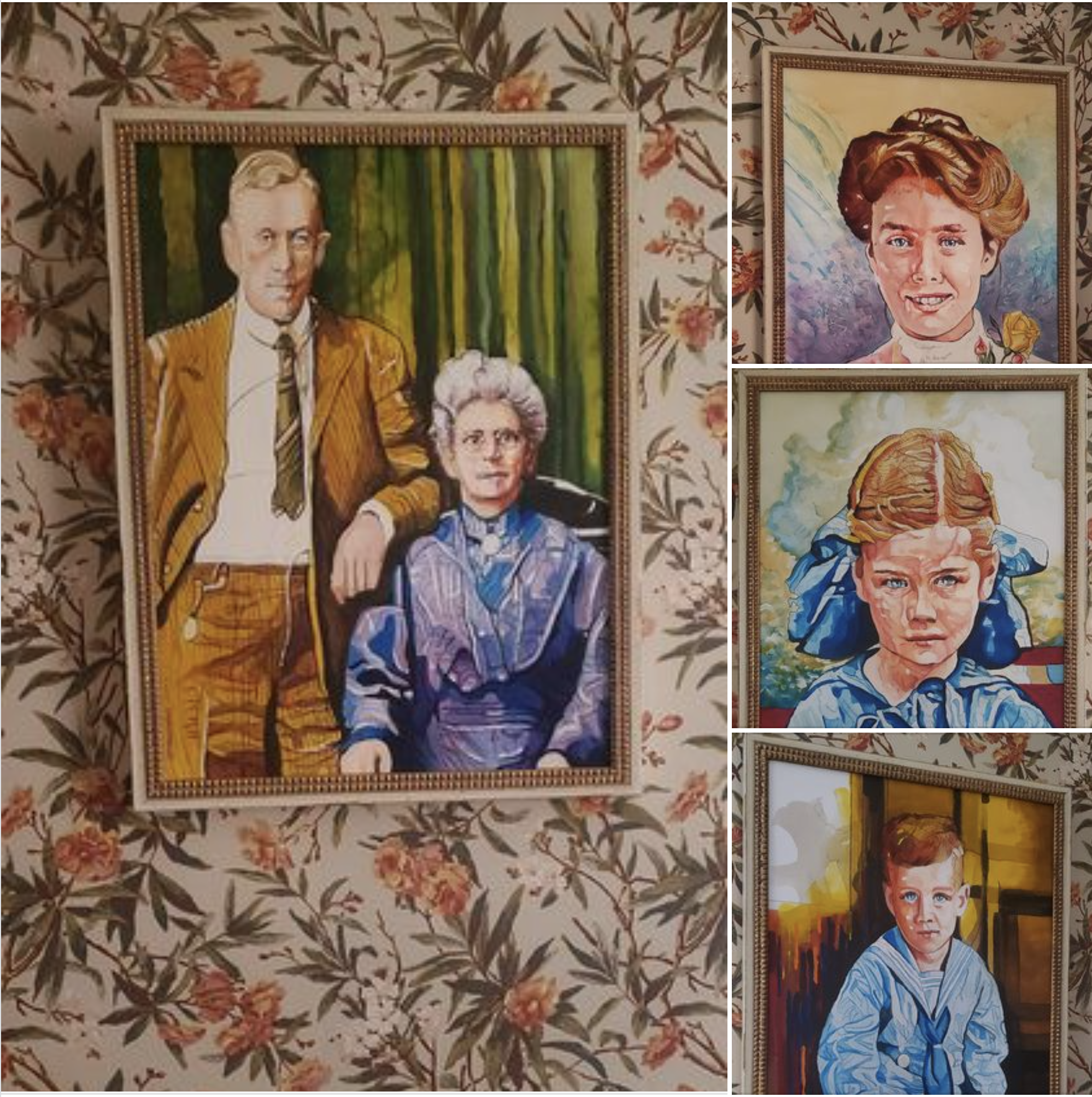



.jpeg)


